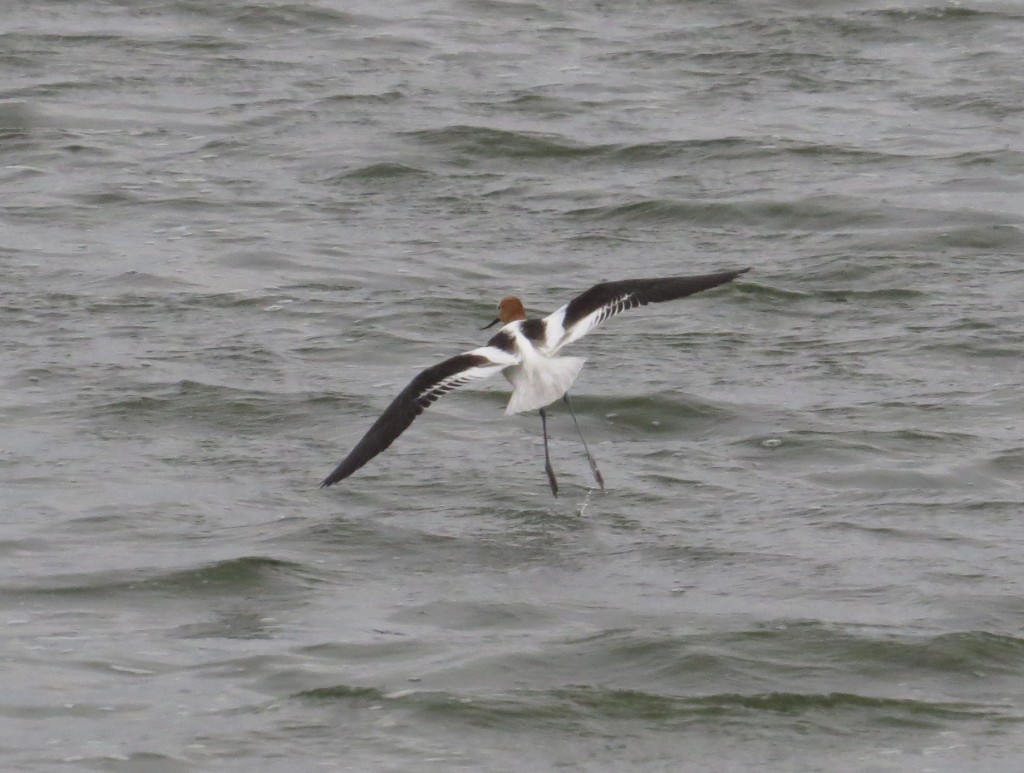A lot of fascinating bird reports have been pouring out of Grant County which is just a little more than an hour to the northwest. The biggest news that came last week was a confirmed nesting pair of Black-necked Stilts. These stilts normally reside in the souther reaches of our country and rarely stray into Minnesota, let alone nest here. So as people were going to check out this historic find, they were turning up other good birds like Black-crowned Night Herons, Cattle Egrets, and Loggerhead Shrikes. And just yesterday another southwestern bird popped up within 10 miles of all this action, the White-winged Dove!
Randy invited us to go a field trip to Grant County. The big attraction for Randy was the White-winged Dove which would have been a new state bird for him. The dove was just one of many phenomenal birds I was interested in. Needless to say, we accepted Randy’s offer. Evan and I were up at 4:30 this morning so we could get up to Grant County to wait at a fellow birder’s feeders for the White-winged Dove to make an appearance.
As we drove we encountered a brutal rainstorm, but we were confident that the forecast of scattered storms would allow us at least some weather-free moments to check on these birds. Finally we got to the site of the dove which was a farm place down a half-mile long driveway and tucked inside a densely wooded yard. It was not what I expected. I figured we’d be able to park our car and just watch a feeder, but the feeder was on the back side of the house. The only way to view it was to walk around the house or look through the house’s windows. We decided to creep around the house. Randy led our silent single-file procession. Immediately he said, “On the feeder right now.” Wow, that was fast! The bird then flew up into a tree posing nicely for spectacular views.
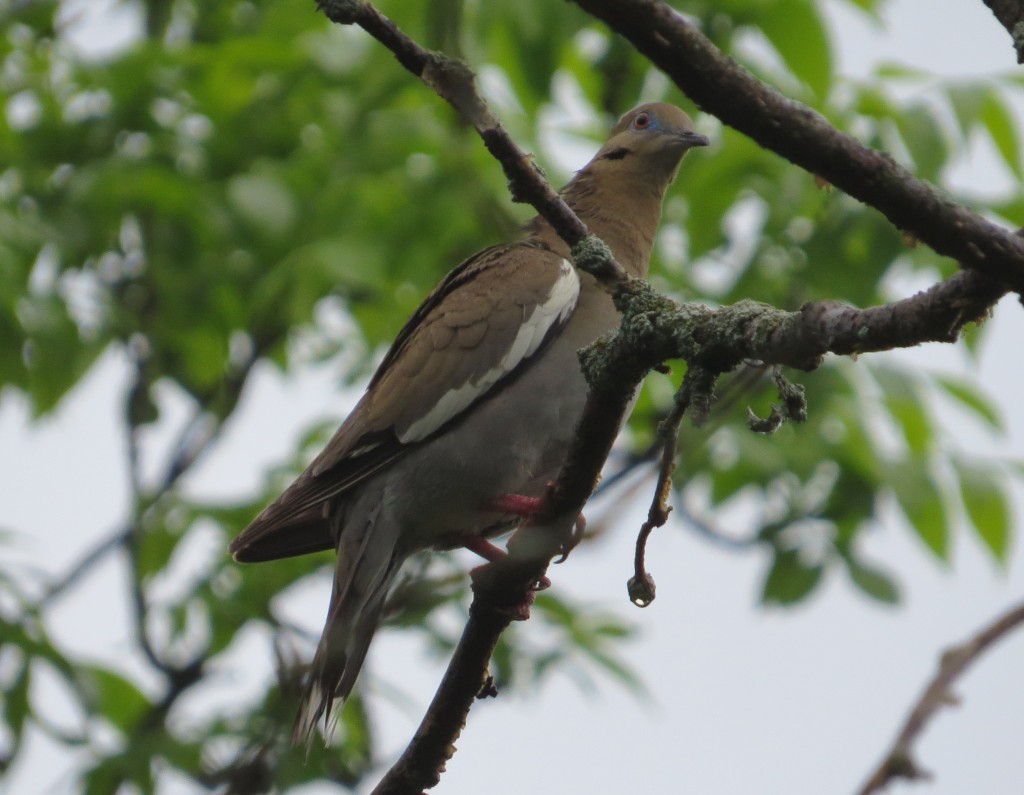
White-winged Dove
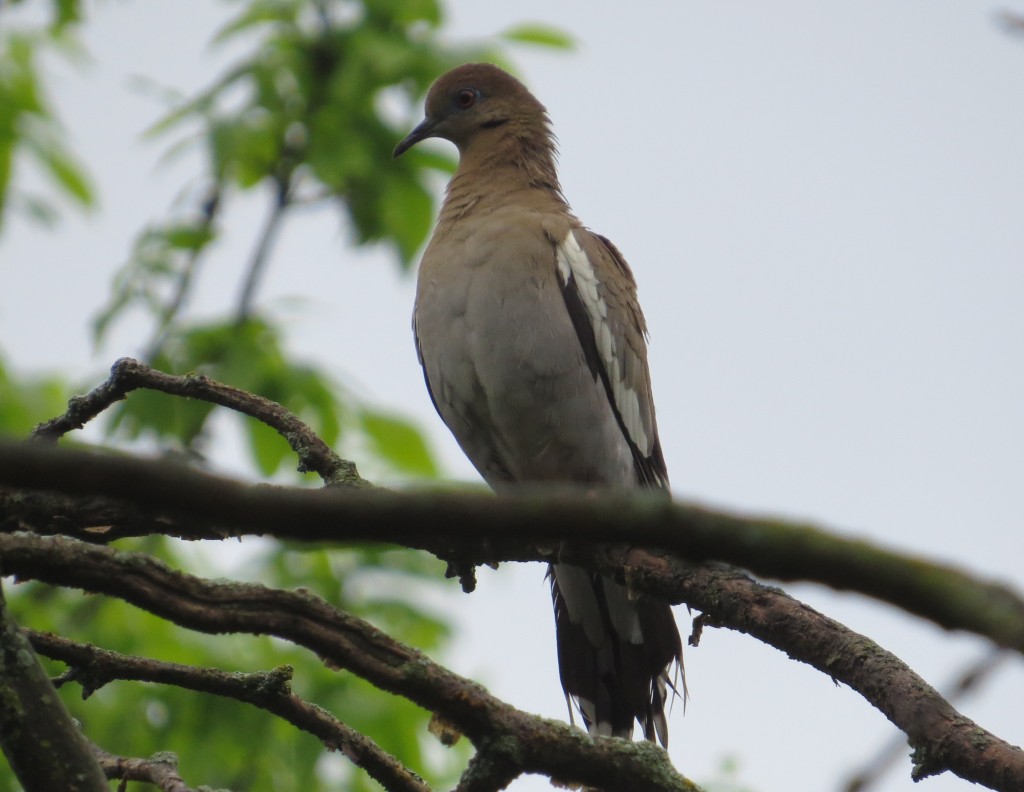 After our lightning-fast, dynamic sighting, we knocked on the door to thank Charlene, the birder and homeowner who made this amazing discovery. Charlene was the epitomy of Minnesota-nice, offering us coffee and donuts and showing us a plat book and telling us where to find other great birds in the area. It’s always a pleasure to meet a friendly birder in the field.
After our lightning-fast, dynamic sighting, we knocked on the door to thank Charlene, the birder and homeowner who made this amazing discovery. Charlene was the epitomy of Minnesota-nice, offering us coffee and donuts and showing us a plat book and telling us where to find other great birds in the area. It’s always a pleasure to meet a friendly birder in the field.
Next we were on to the North Ottawa Impoundent, which is a 2 mile by 0.5 mile rectangular pool used to provide flood relief for the Rabbit River, Bois de Sioux River, and Red River. Before we got there, though, there were many good birds to see, like the abundant Bobolinks.
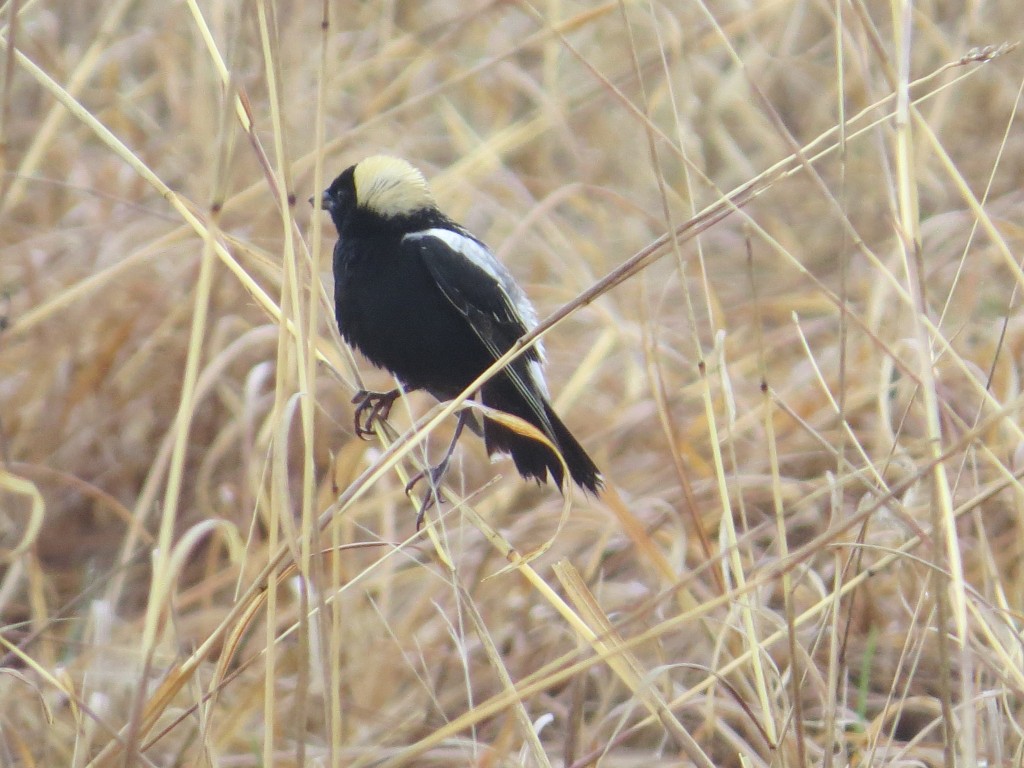
Bobolink
The North Ottawa Impoundment was an attraction for me because of the reported Black-crowned Night Herons and Cattle Egrets, both of which would be lifers. When we got to the impoundment, we immediately saw numerous Great Egrets. We kept hoping one of the white birds would be our nemesis Cattle Egret. Eventually Randy spied the two Cattle Egrets that had been reported. Finally! It was quite a thrill to now gain two life birds from this field trip.
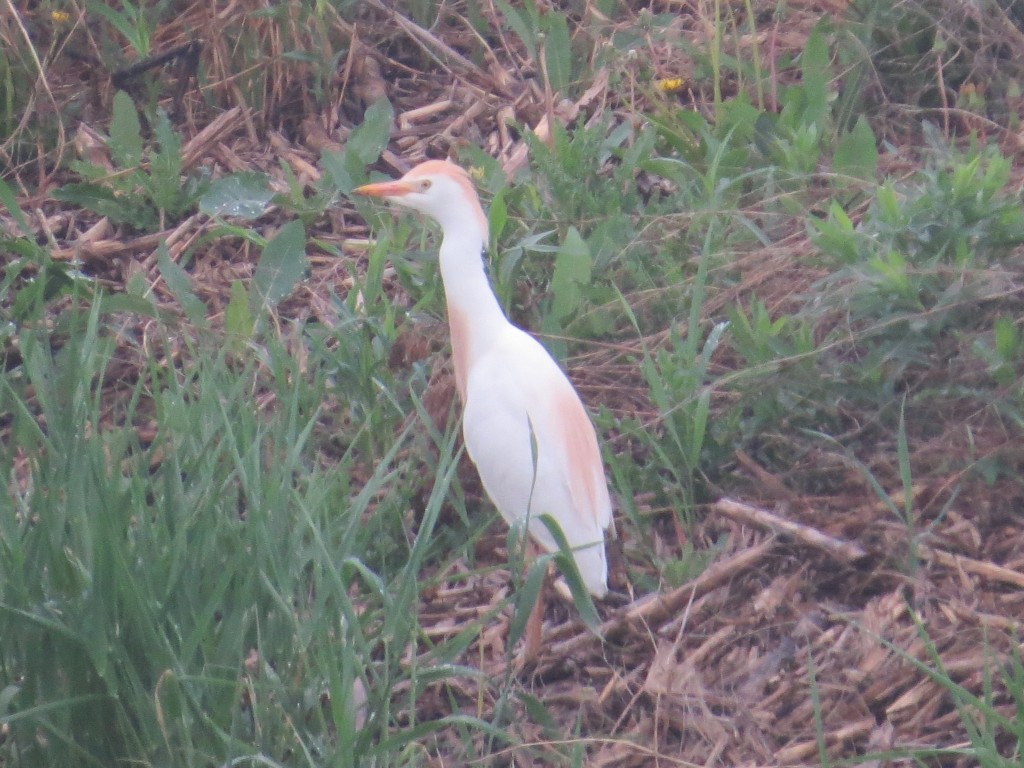
Cattle Egret
These egrets were quite shy and did not give many photo opportunities. The following picture was fun because it clearly shows the size comparison with the Great Egret, and clearly there is no comparison.
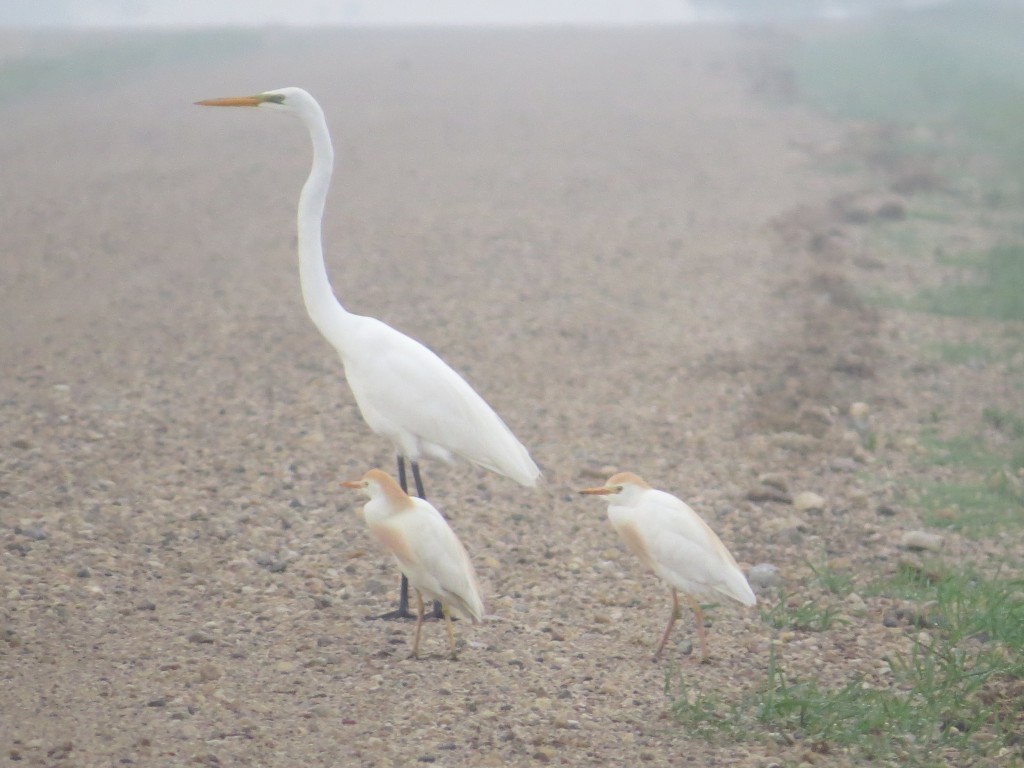
Great Egret and Cattle Egrets
Driving around the impoundment was a magical experience. There were cool birds everywhere. I guess while I was out of the car trying to photograph these egrets, Randy found an Upland Sandpiper. Additionally, there were hordes of ducks with other goodies mixed in, like numerous Eared Grebes, a Red-necked Phalarope, and a Wilson’s Phalarope. Taking a short walk allowed us to get good looks at many of these birds.
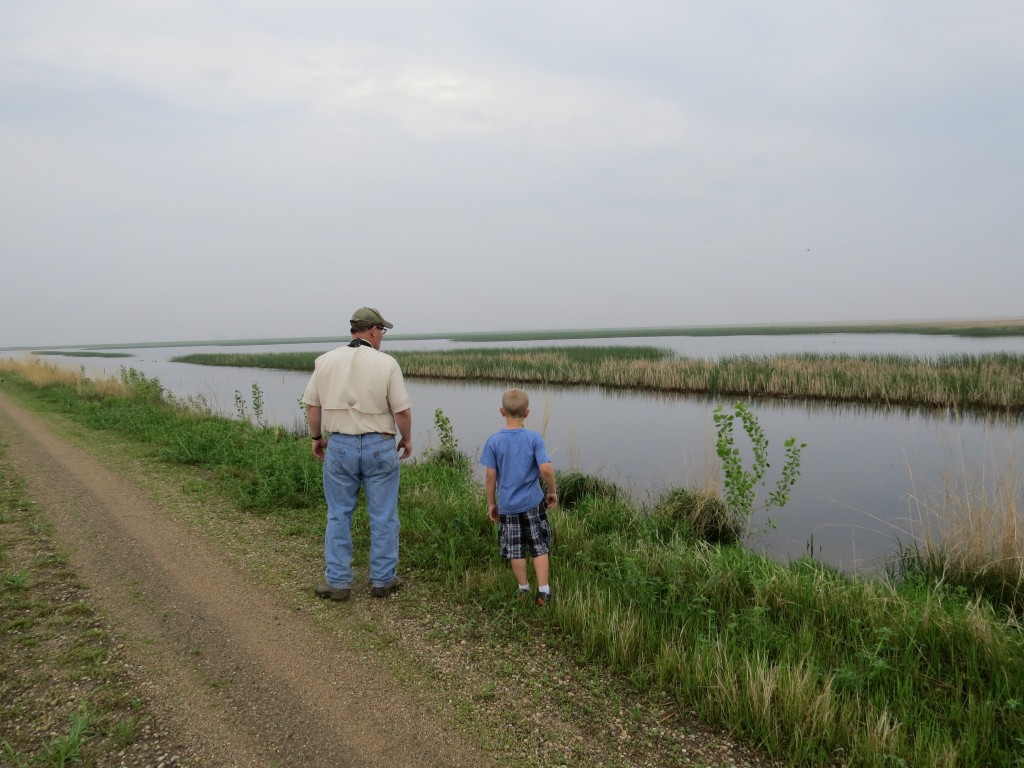
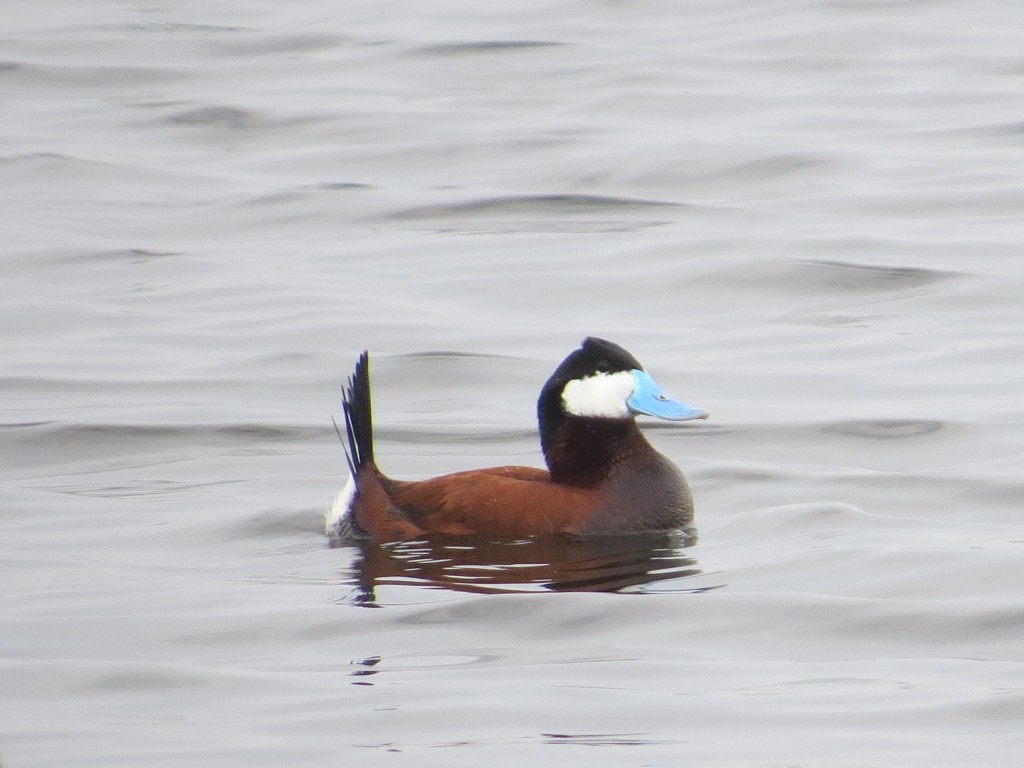
Ruddy Duck
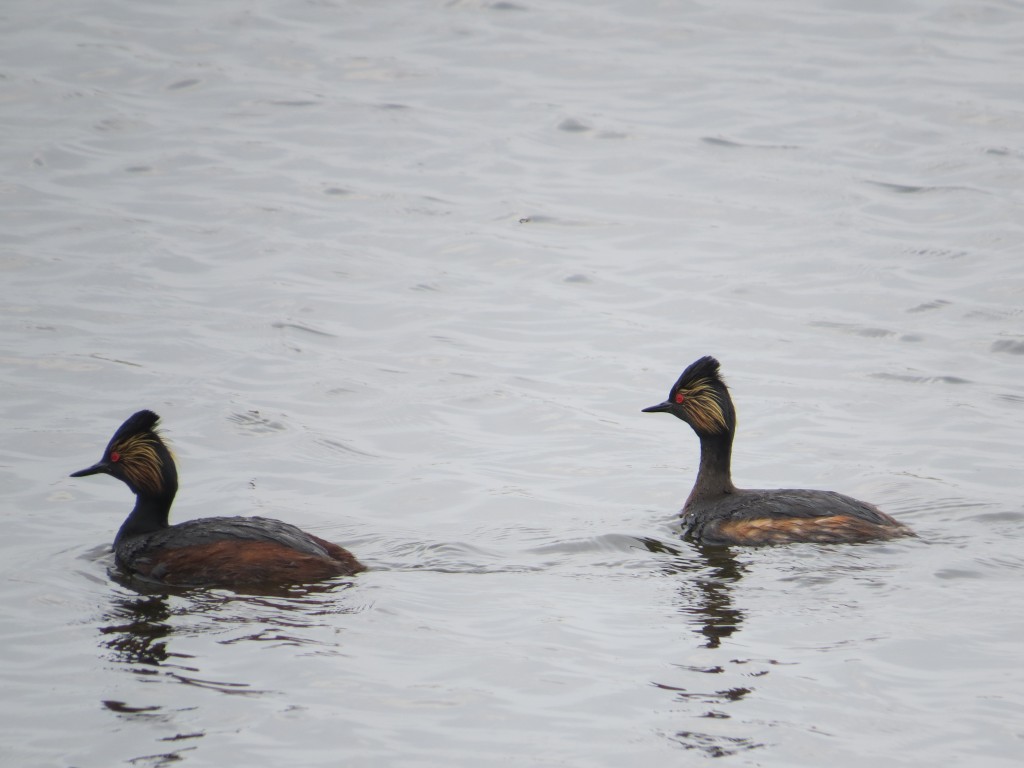
Eared Grebes
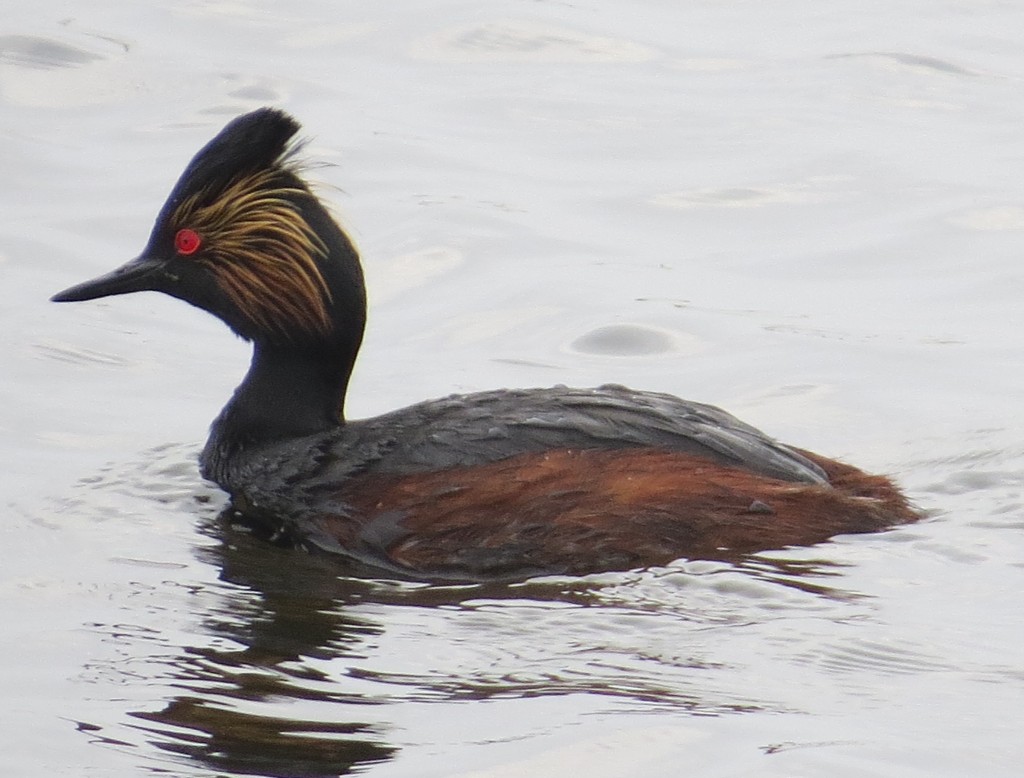
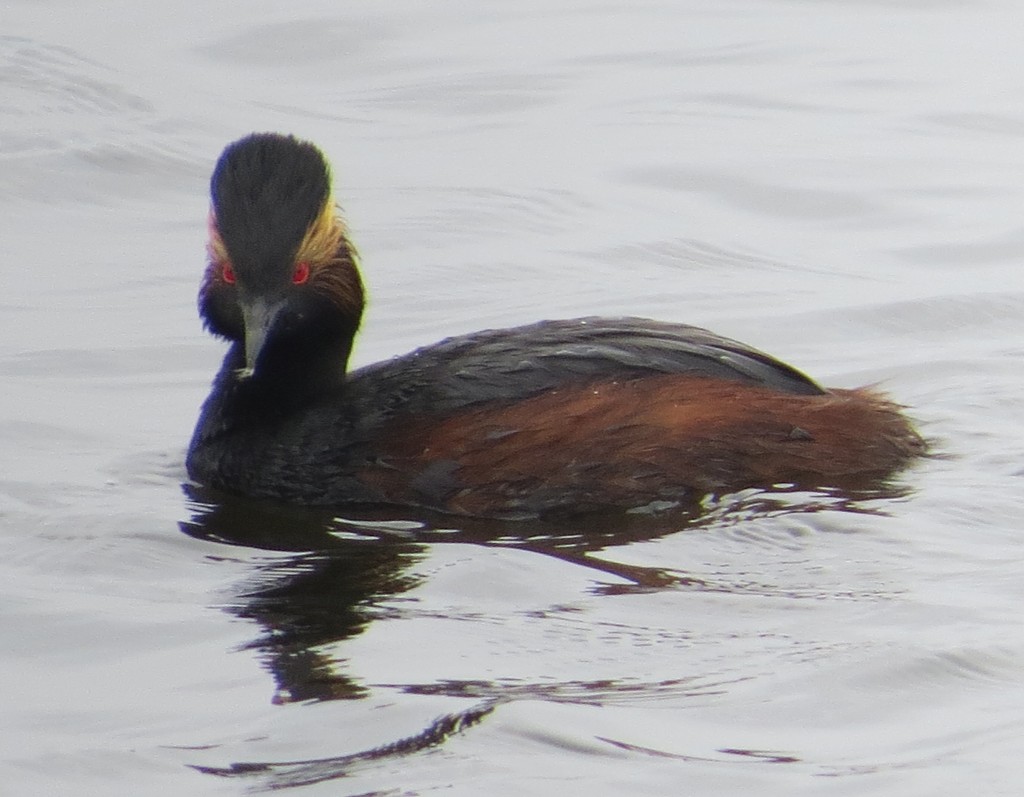 As much as we tried we could not turn up a Black-crowned Night Heron. I guess we can’t win it all, plus there was still more good birding ahead. Our next stop was the sewage ponds at the city of Herman where two Black-necked Stilts have decided to nest. Because of the work of some dedicated birders who brought this to the city’s attention, the city has agreed to not mow around this pond until the birds are done nesting. In fact, the townsfolk are pretty excited over the hub-bub at their local sewage ponds.
As much as we tried we could not turn up a Black-crowned Night Heron. I guess we can’t win it all, plus there was still more good birding ahead. Our next stop was the sewage ponds at the city of Herman where two Black-necked Stilts have decided to nest. Because of the work of some dedicated birders who brought this to the city’s attention, the city has agreed to not mow around this pond until the birds are done nesting. In fact, the townsfolk are pretty excited over the hub-bub at their local sewage ponds.
A nesting bird is easy to find. It is about the only guarantee there is when it comes to finding a bird. We were able to see both of the adults today. It was not a new bird as we saw them in Arizona a couple months ago, but it is a really fun bird that was a treat to see not far down the road from us.
You didn’t need any special optics to see these birds well, but an up-close view makes a good sighting even better.
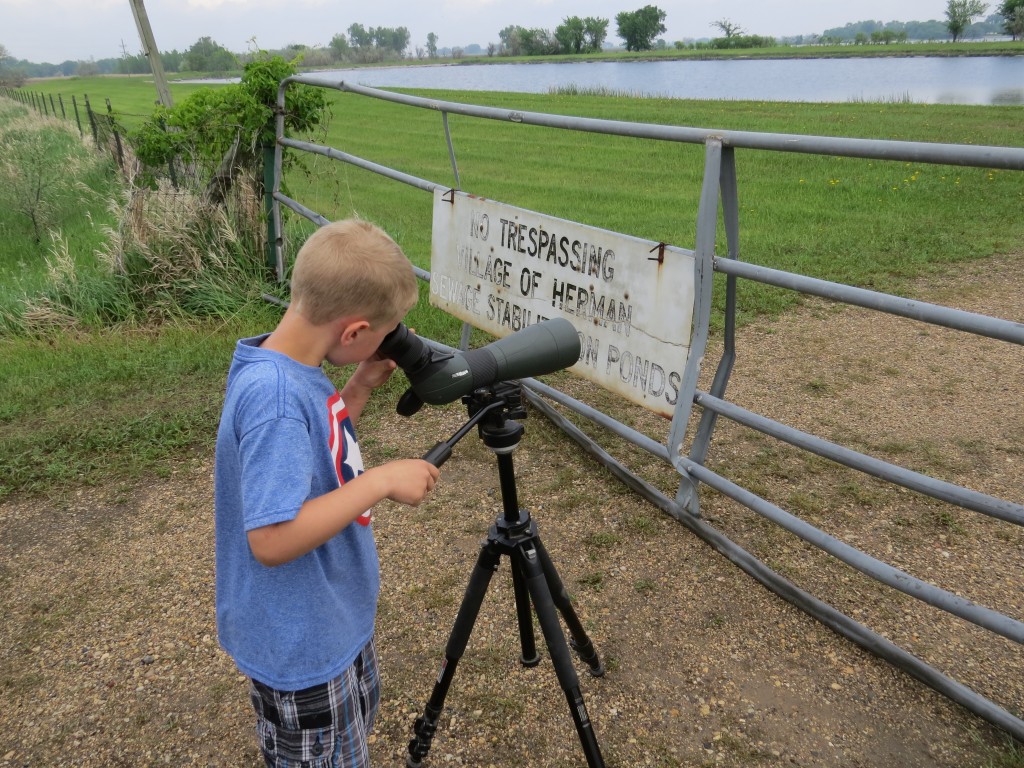 It was fun to see the female sit on the nest which has one confirmed egg.
It was fun to see the female sit on the nest which has one confirmed egg.
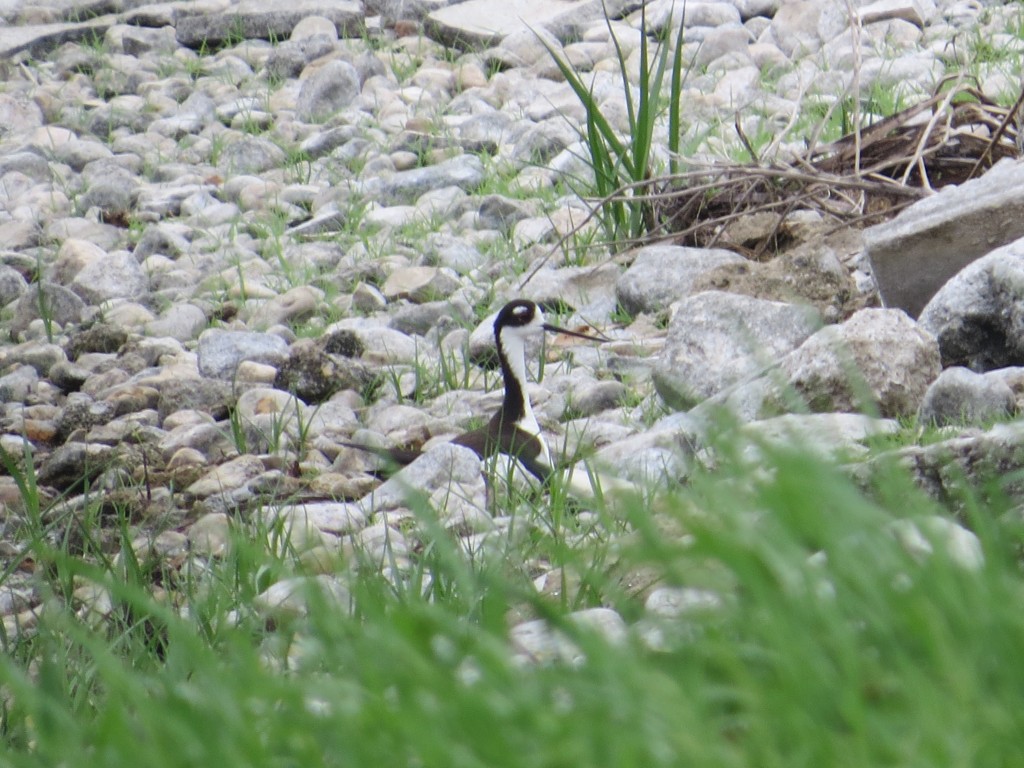
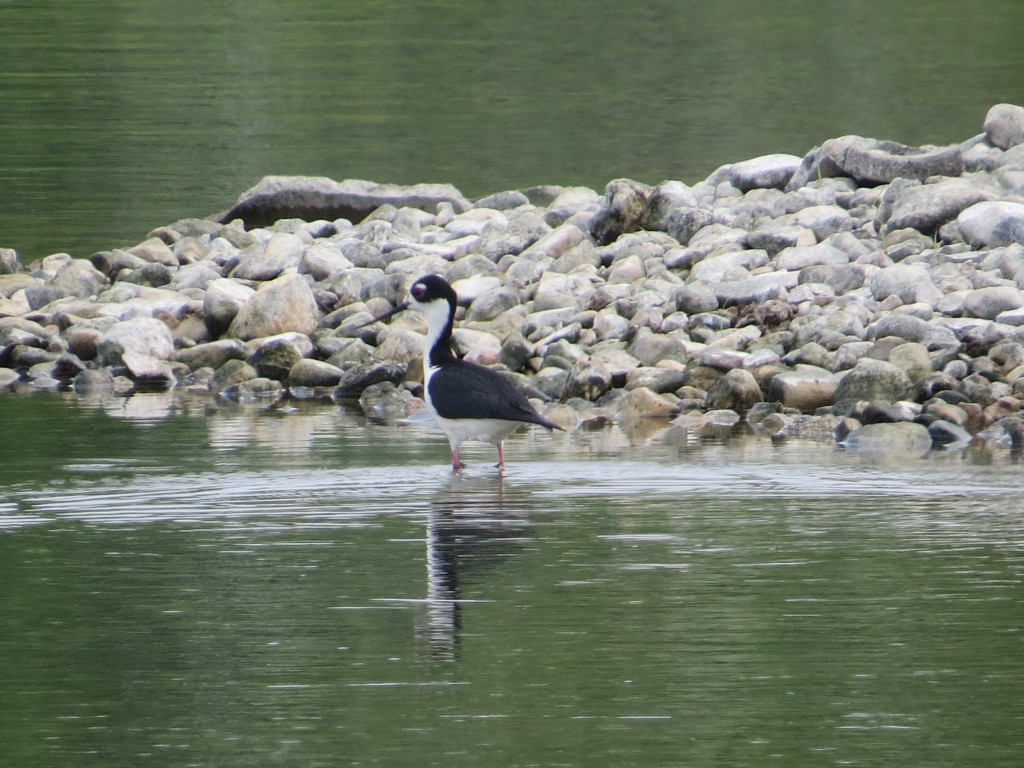
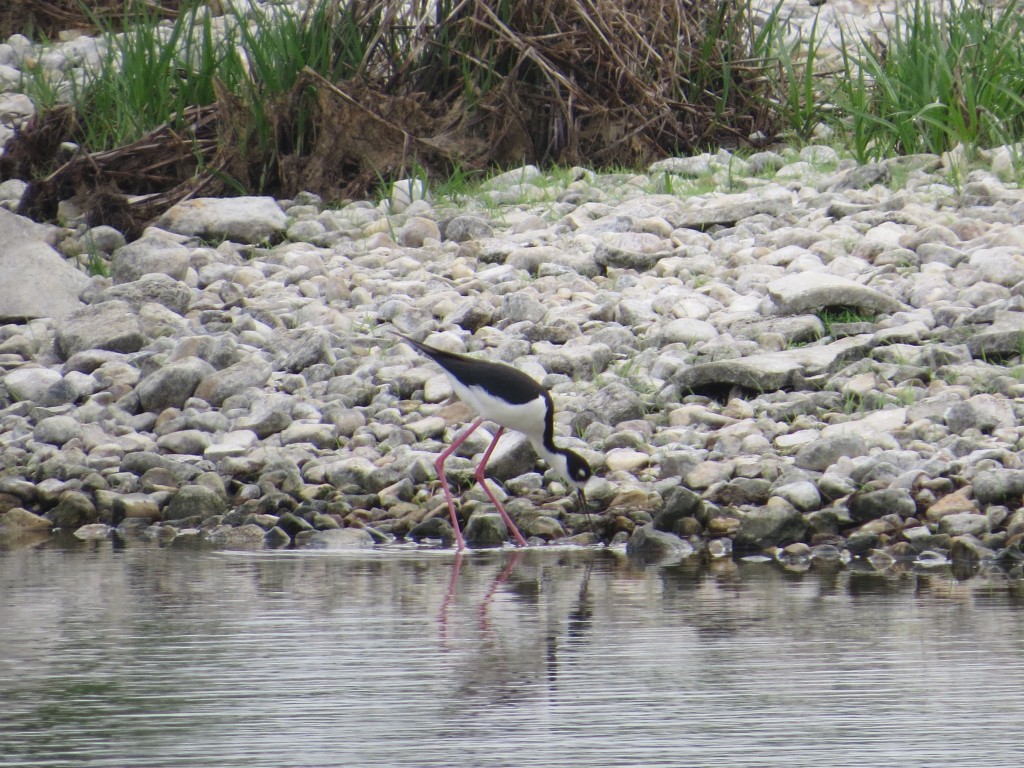
Black-necked Stilts – a most appropriate name
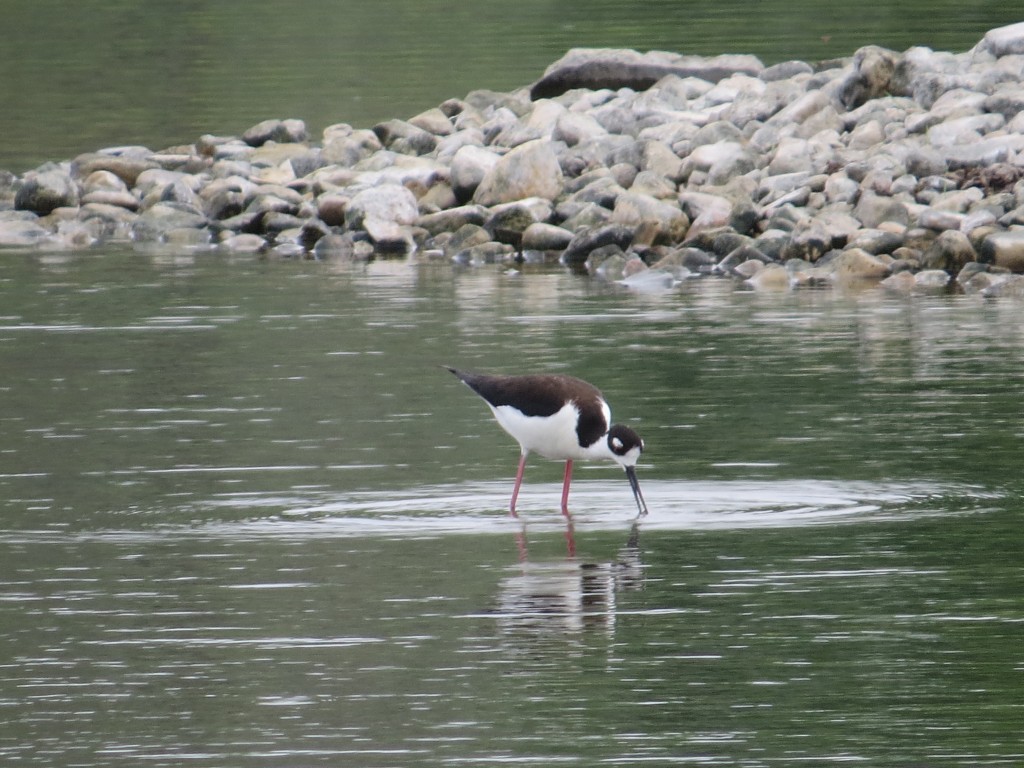
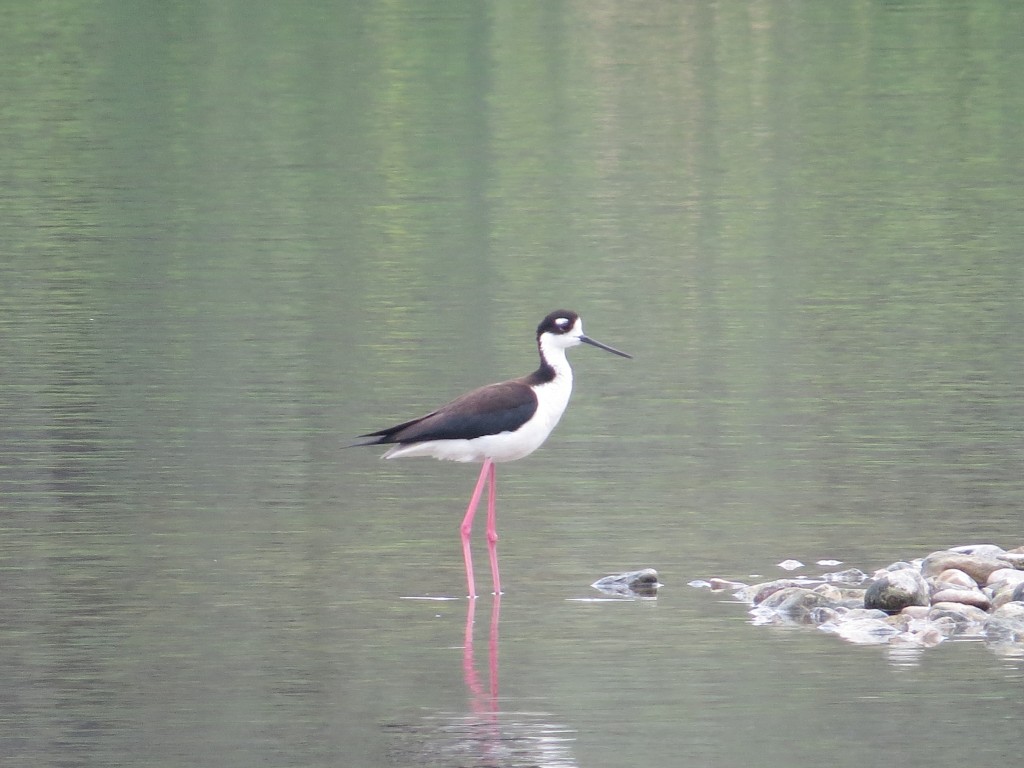
After the ponds we decided to see if we could find the reported Loggerhead Shrike just north of Herman. We couldn’t find it on our way to see the Black-necked Stilts. The second time was the charm, though, as Charlene’s parked vehicle on Hwy. 9 and pointed binoculars alerted us to its presence. In addition to her own rare yard bird, she was keeping tabs on all these other incredible finds within 10 miles of her home.
It’s always fun to see a shrike, but Loggerheads are rare in Minnesota, so they are extra special.
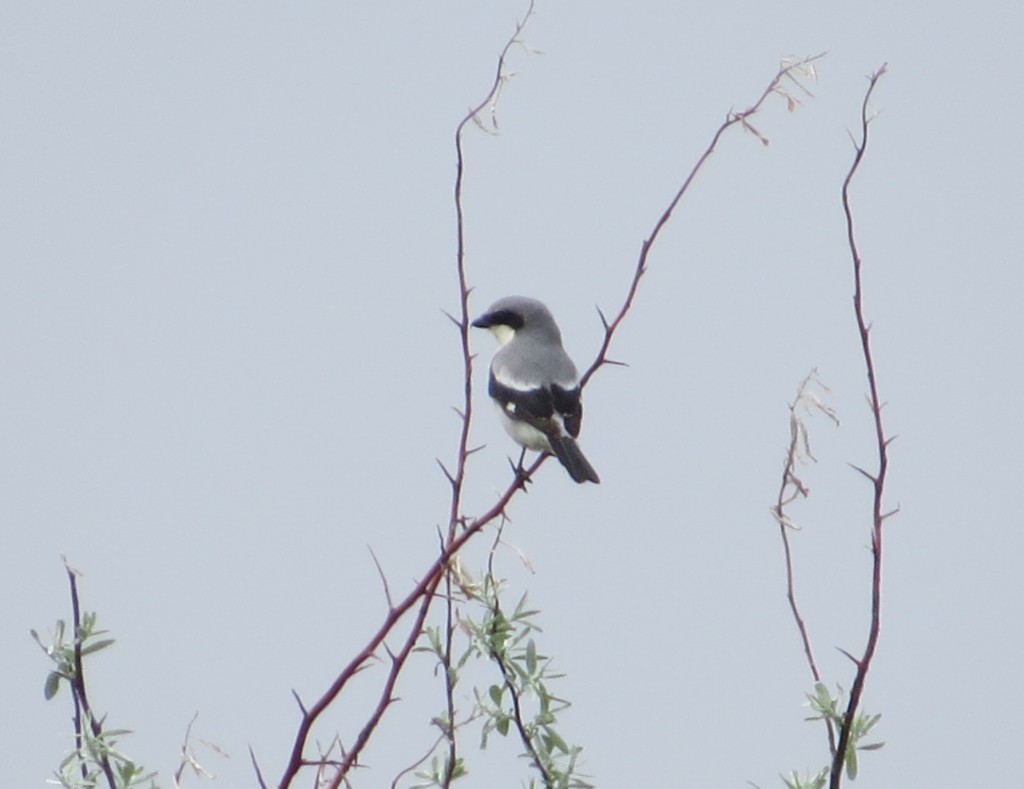
Loggerhead Shrike
And with that last sighting, it was time to head home. What a phenomenal day of birding it had been. Two life birds, a host of uncommon birds, and great company are tough to beat. It was one of those big birding days that will stand out for a long time in our memories. After all, how often will can a birder see a White-winged Dove and a Black-necked Stilt on the same day in Minnesota?

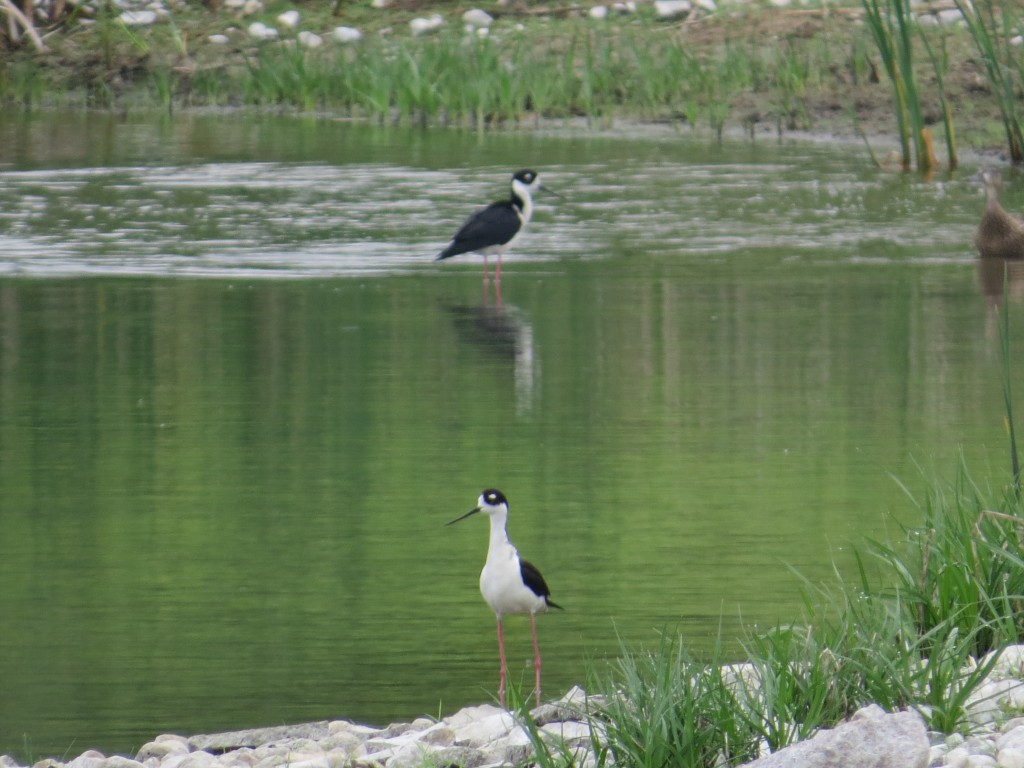
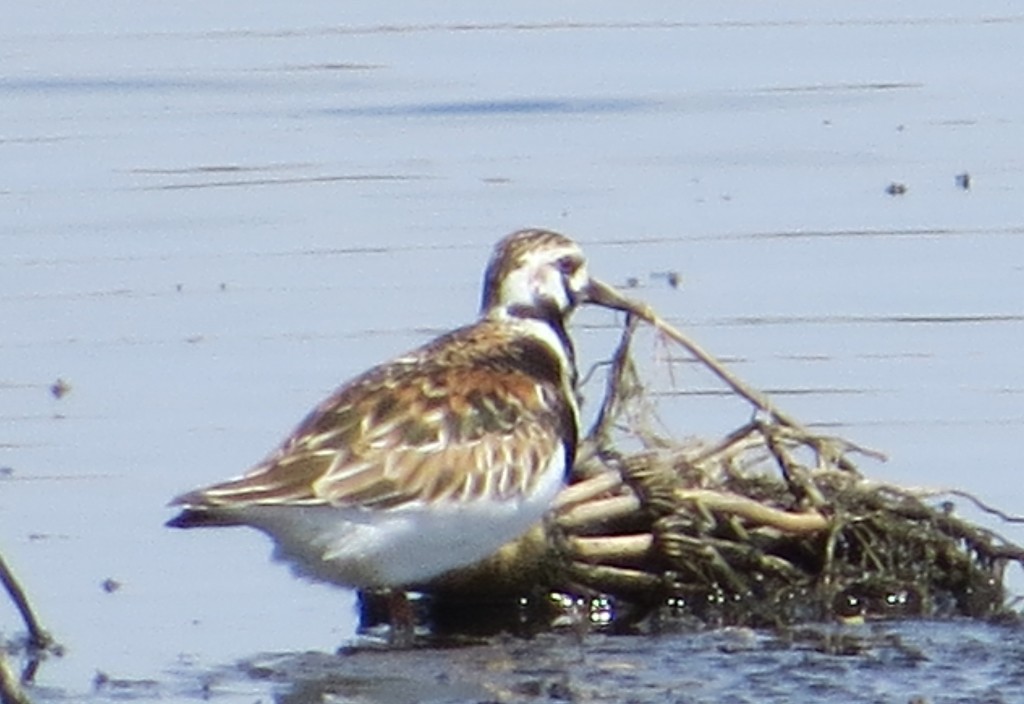
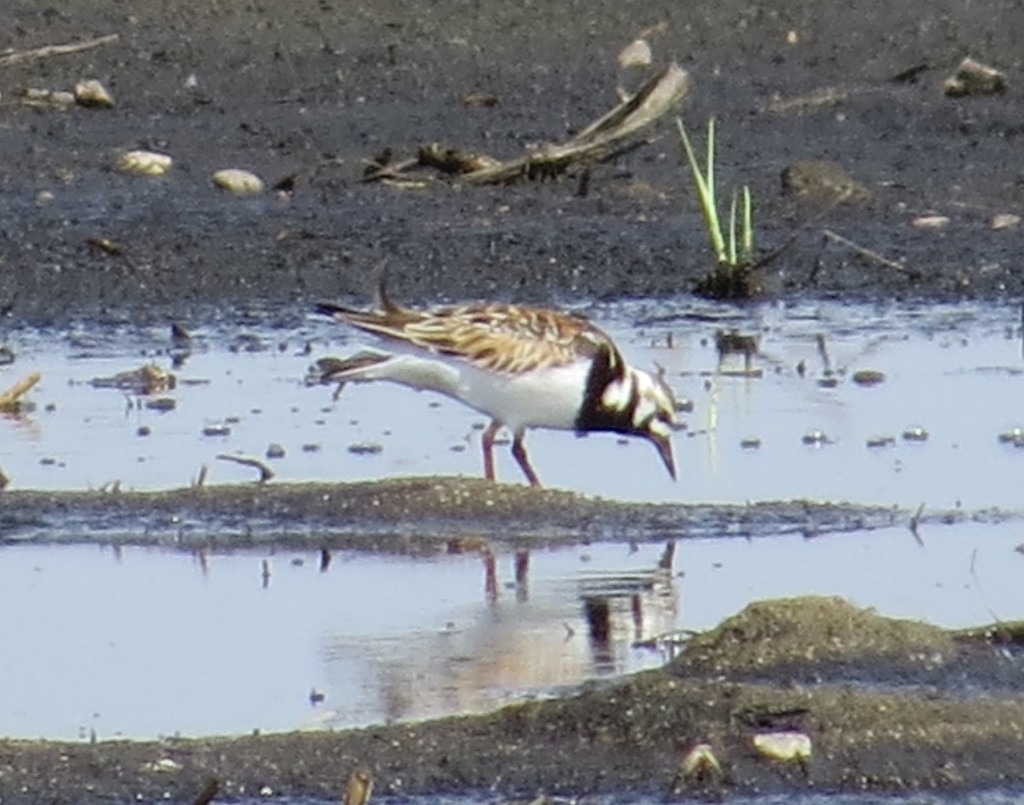
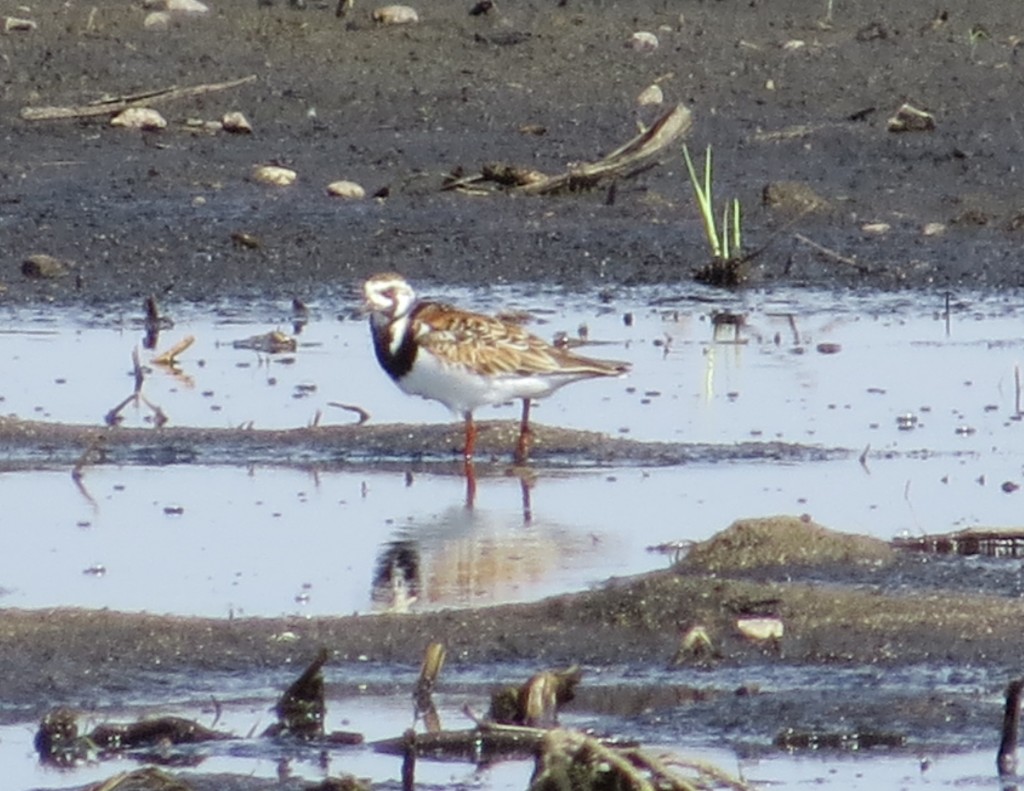
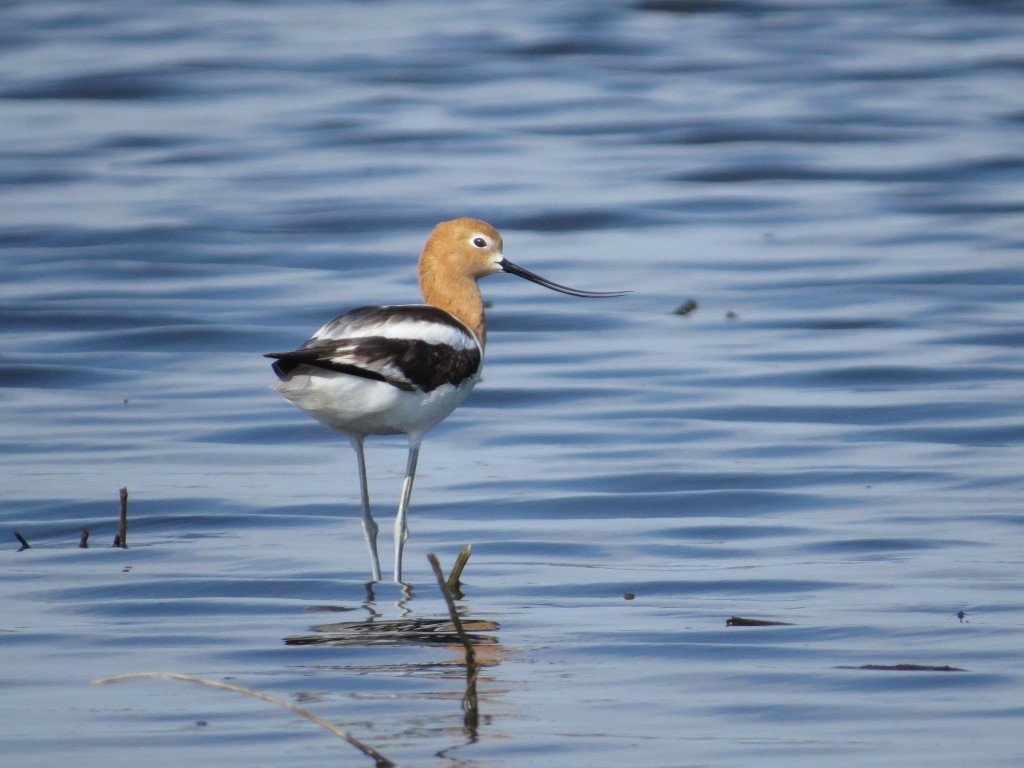
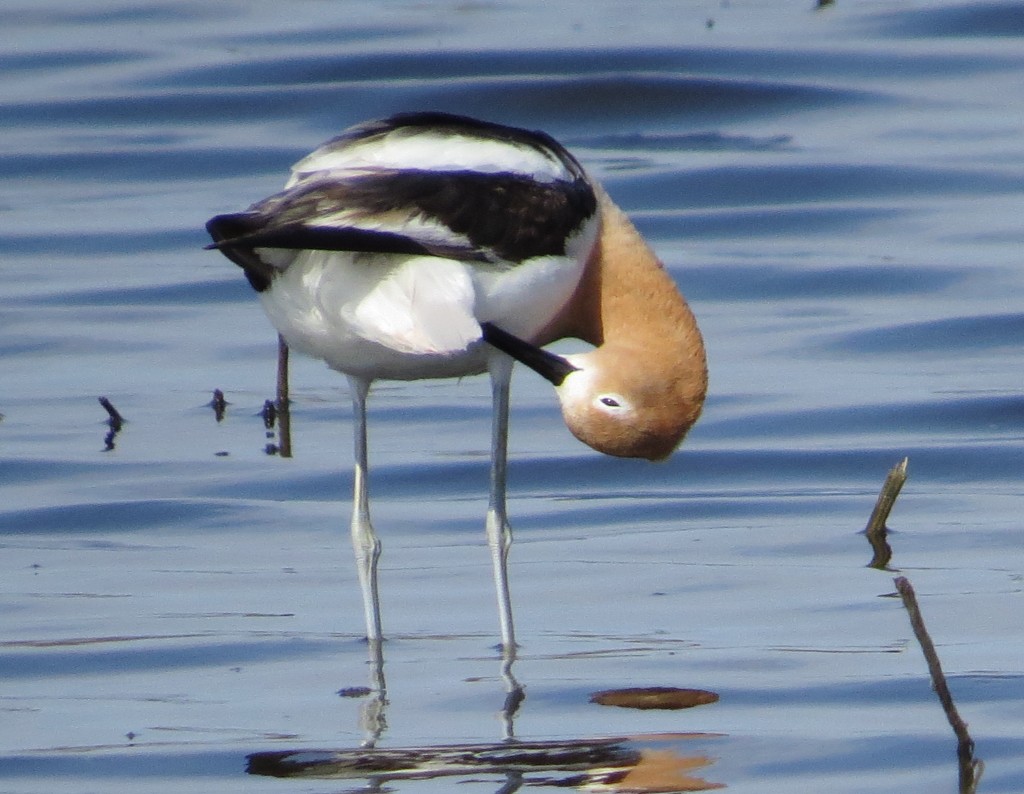
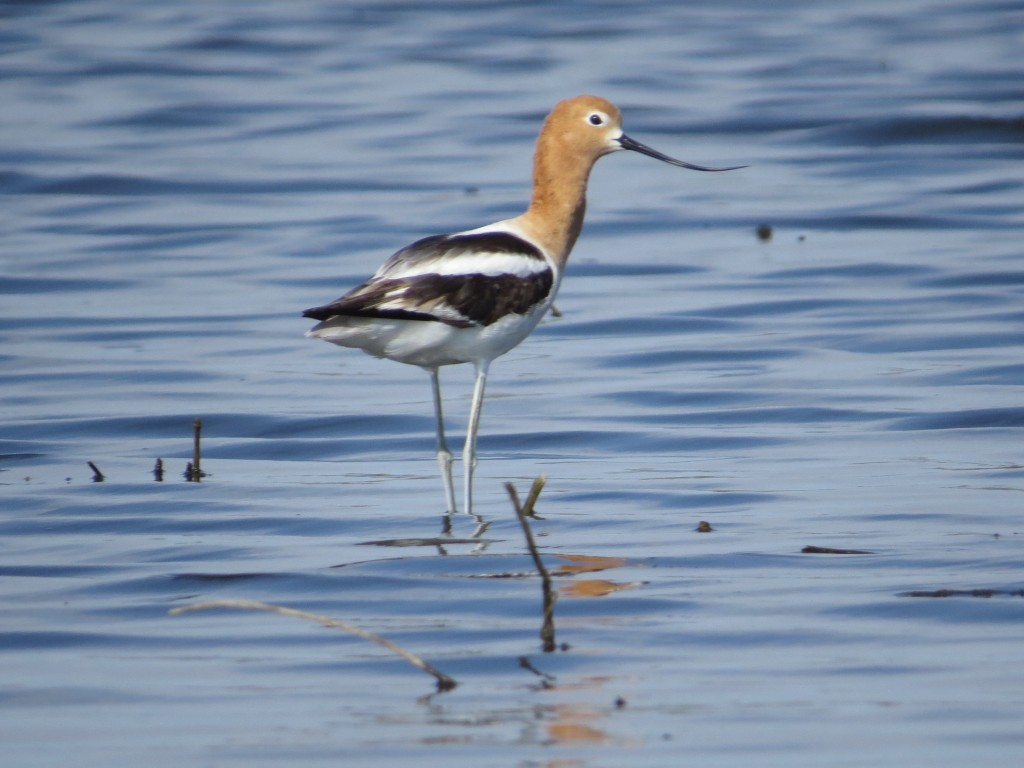
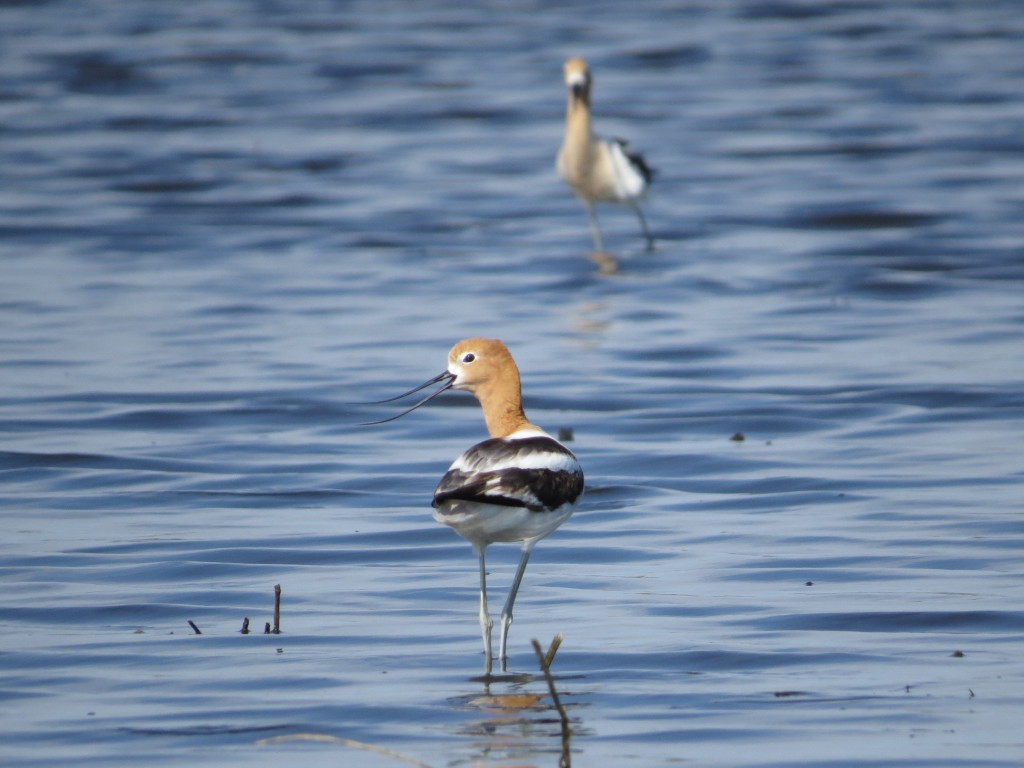 I continued to check out birds and photograph them while Evan played in the field.
I continued to check out birds and photograph them while Evan played in the field.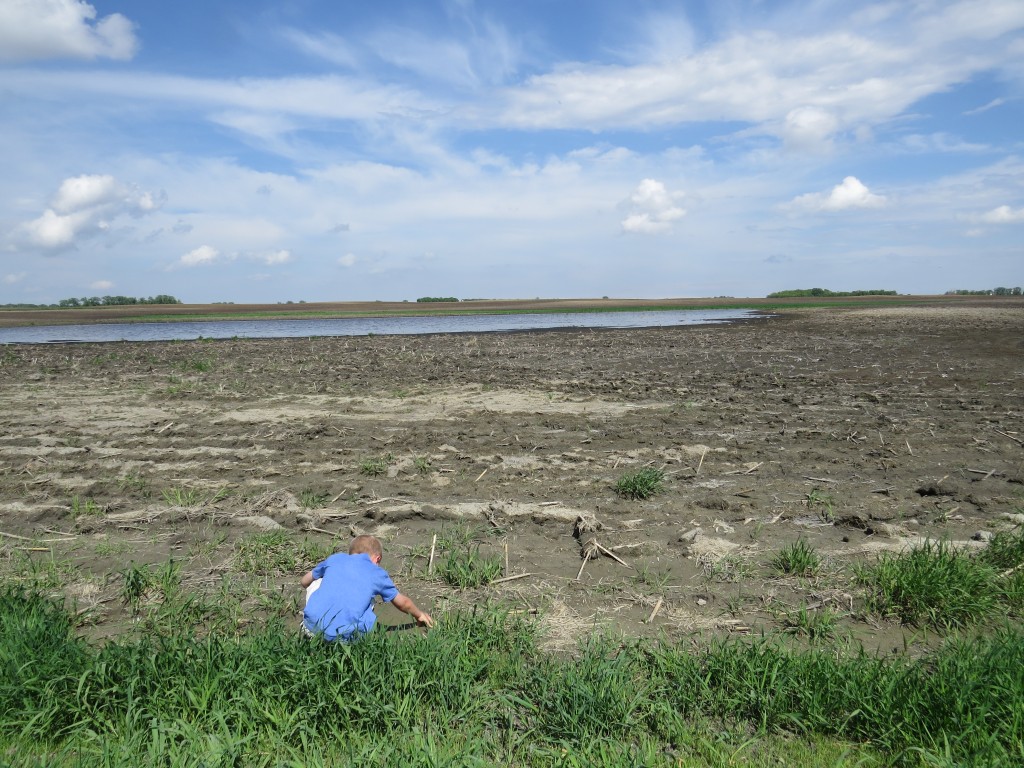 It’s a good thing that Randy showed up to break up the monotony by joking around with Evan and letting him look through his scope at all the cool shorebirds.
It’s a good thing that Randy showed up to break up the monotony by joking around with Evan and letting him look through his scope at all the cool shorebirds.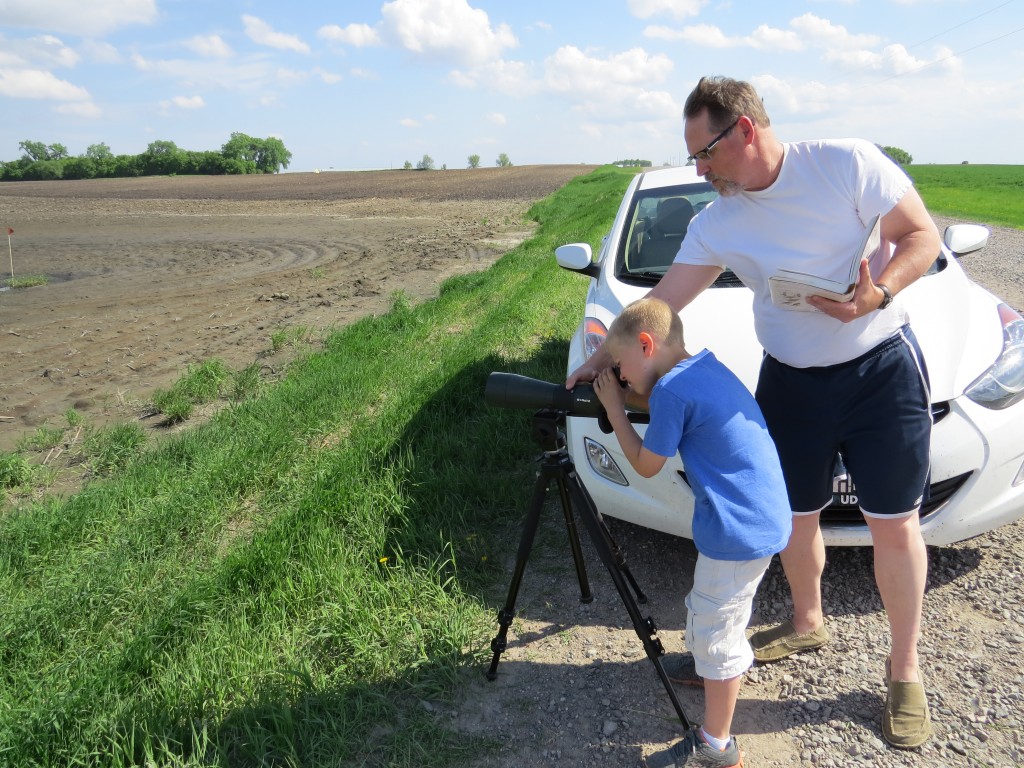 I was glad to have Randy there too. We had seen Dunlin and Wilson’s Phalaropes in addition to the Ruddy Turnstone and American Avocets, but we didn’t even try to sort through the peeps. Randy’s been to battle with shorebirds for many years, so he was undaunted by the challenge. Within seconds he was calling out Least Sandpipers, Baird’s Sandpipers, and White-rumped Sandpipers. White-rumped was one we needed, so I told him to find us one. He would oblige and let us look through the scope to get our looks at this lifer. Then I’d try to relocate the one he’d found in order to photograph it. The way these things move around and how many different species there were, I think it would have been easier to win the shell game against a hustler. I gave up on photographing this bird that varies only slightly from a Baird’s Sandpiper. I decided to cheat instead by photographing a whole flock of peeps and looking at my pictures later. See the ones with the clear white rumps? Those are White-rumpeds.
I was glad to have Randy there too. We had seen Dunlin and Wilson’s Phalaropes in addition to the Ruddy Turnstone and American Avocets, but we didn’t even try to sort through the peeps. Randy’s been to battle with shorebirds for many years, so he was undaunted by the challenge. Within seconds he was calling out Least Sandpipers, Baird’s Sandpipers, and White-rumped Sandpipers. White-rumped was one we needed, so I told him to find us one. He would oblige and let us look through the scope to get our looks at this lifer. Then I’d try to relocate the one he’d found in order to photograph it. The way these things move around and how many different species there were, I think it would have been easier to win the shell game against a hustler. I gave up on photographing this bird that varies only slightly from a Baird’s Sandpiper. I decided to cheat instead by photographing a whole flock of peeps and looking at my pictures later. See the ones with the clear white rumps? Those are White-rumpeds.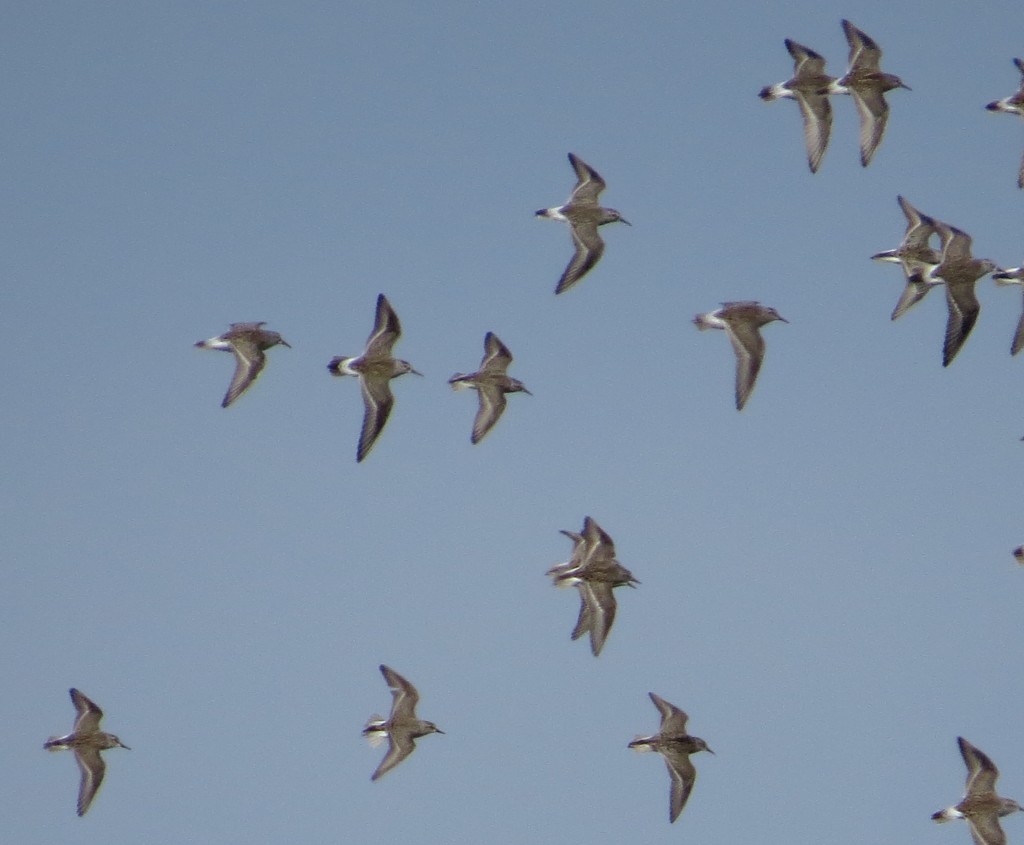
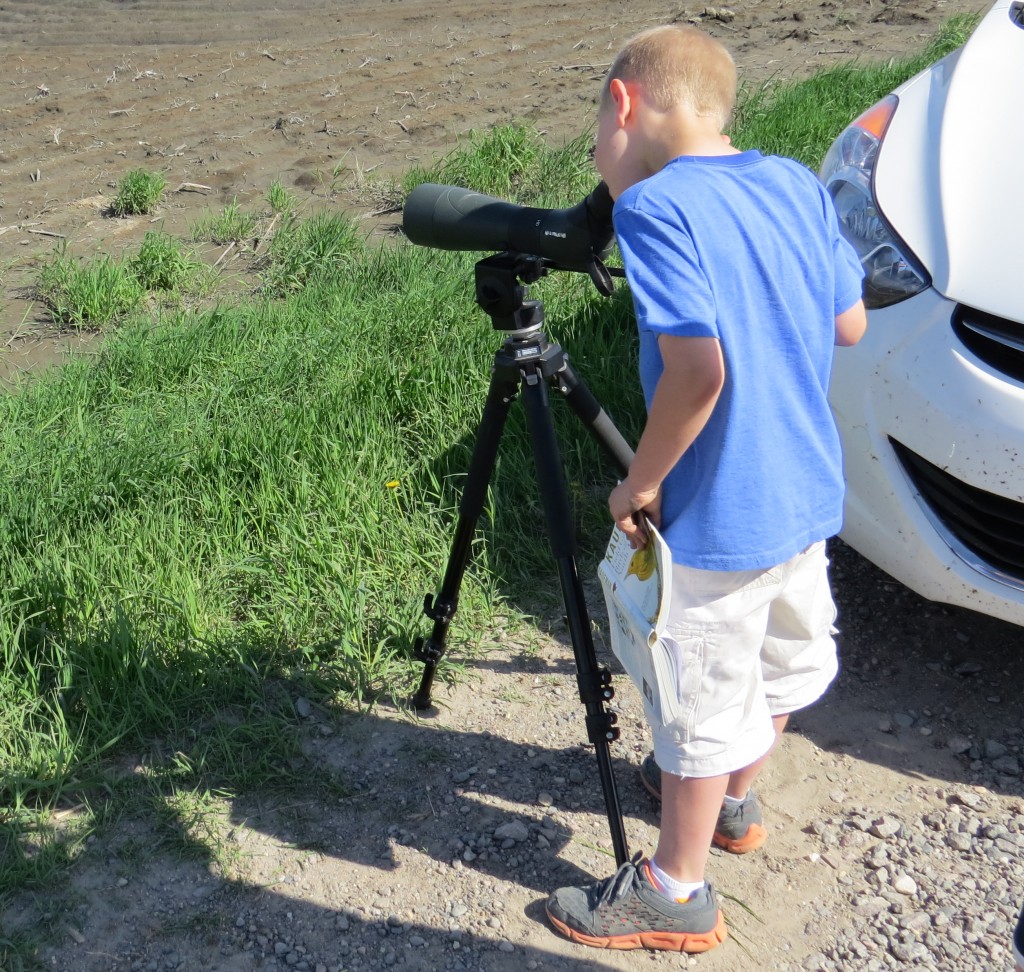 Two days and five life birds for Evan and four for me with some great sightings of some other really good shorebirds as well. This was quite unexpected. Migration has been screwy this year. Normally we wouldn’t be chasing shorebirds after warblers. Now, though, it’s open season on these guys again. And I’m learning that shorebirds are still arriving in states to the south of us. Tomorrow is my first full day of summer vacation, so Marin and I will be hitting the few local shorebird spots to keep up on the action. There will be no rest for the weary.
Two days and five life birds for Evan and four for me with some great sightings of some other really good shorebirds as well. This was quite unexpected. Migration has been screwy this year. Normally we wouldn’t be chasing shorebirds after warblers. Now, though, it’s open season on these guys again. And I’m learning that shorebirds are still arriving in states to the south of us. Tomorrow is my first full day of summer vacation, so Marin and I will be hitting the few local shorebird spots to keep up on the action. There will be no rest for the weary.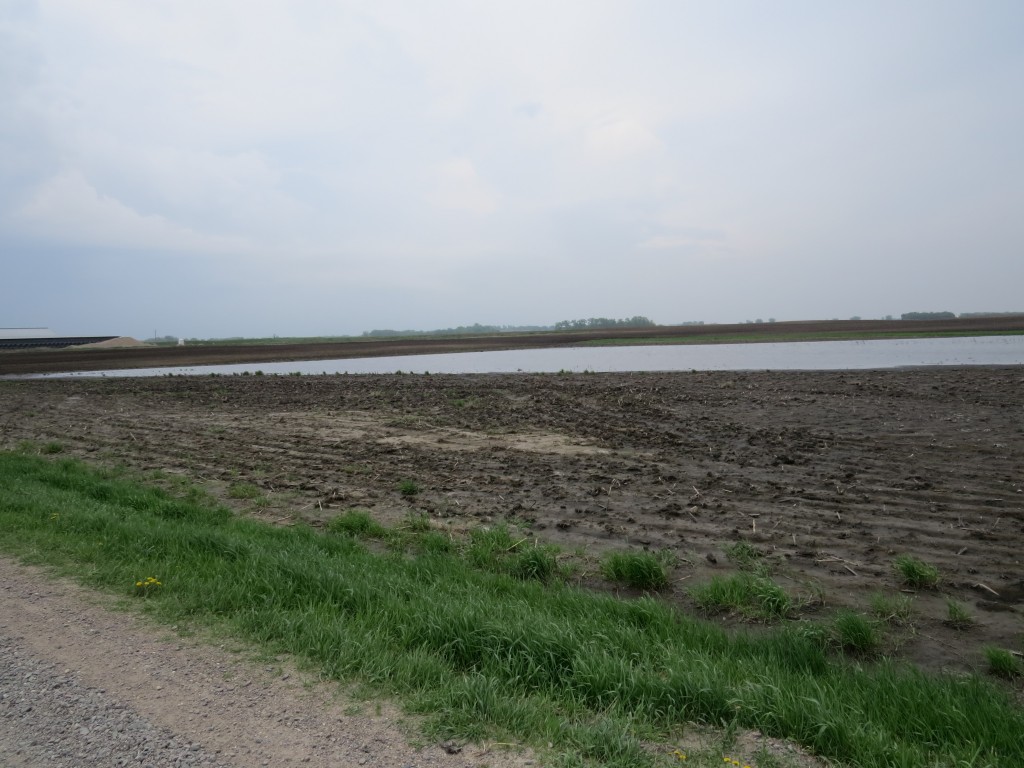 All I could see were the peeps who are no bigger than sparrows. There were tons of them. It took my awhile but I finally located a phalarope. I certainly didn’t see 10. I zoomed in on it and showed it to Evan on the LCD. He was excited to get his Wilson’s Phalarope but then wanted to go right away. Birding doesn’t really compare to fishing to a 7-year-old. So I snapped a picture of this phalarope, just assuming it was a Wilson’s, the most likely species. Then I looked a little closer at the LCD and realized it was a male Red-necked Phalarope in breeding plumage! This was not a life bird as we saw a very drab version last August at the Atwater sewage ponds.
All I could see were the peeps who are no bigger than sparrows. There were tons of them. It took my awhile but I finally located a phalarope. I certainly didn’t see 10. I zoomed in on it and showed it to Evan on the LCD. He was excited to get his Wilson’s Phalarope but then wanted to go right away. Birding doesn’t really compare to fishing to a 7-year-old. So I snapped a picture of this phalarope, just assuming it was a Wilson’s, the most likely species. Then I looked a little closer at the LCD and realized it was a male Red-necked Phalarope in breeding plumage! This was not a life bird as we saw a very drab version last August at the Atwater sewage ponds.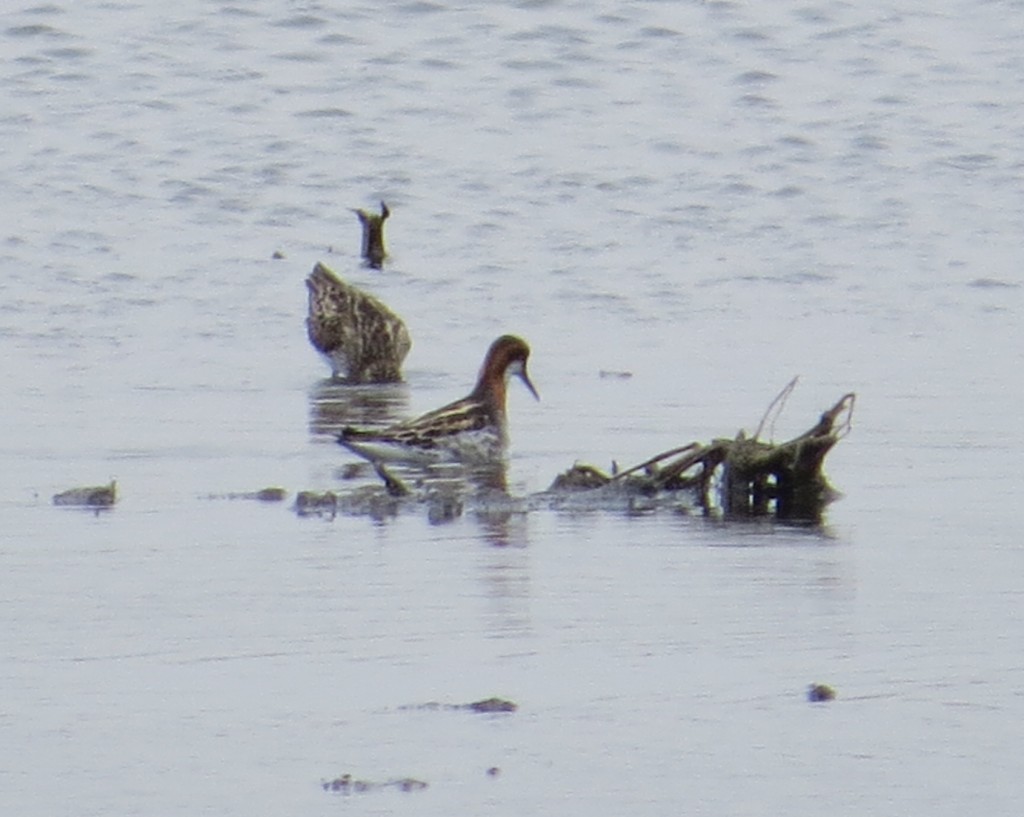
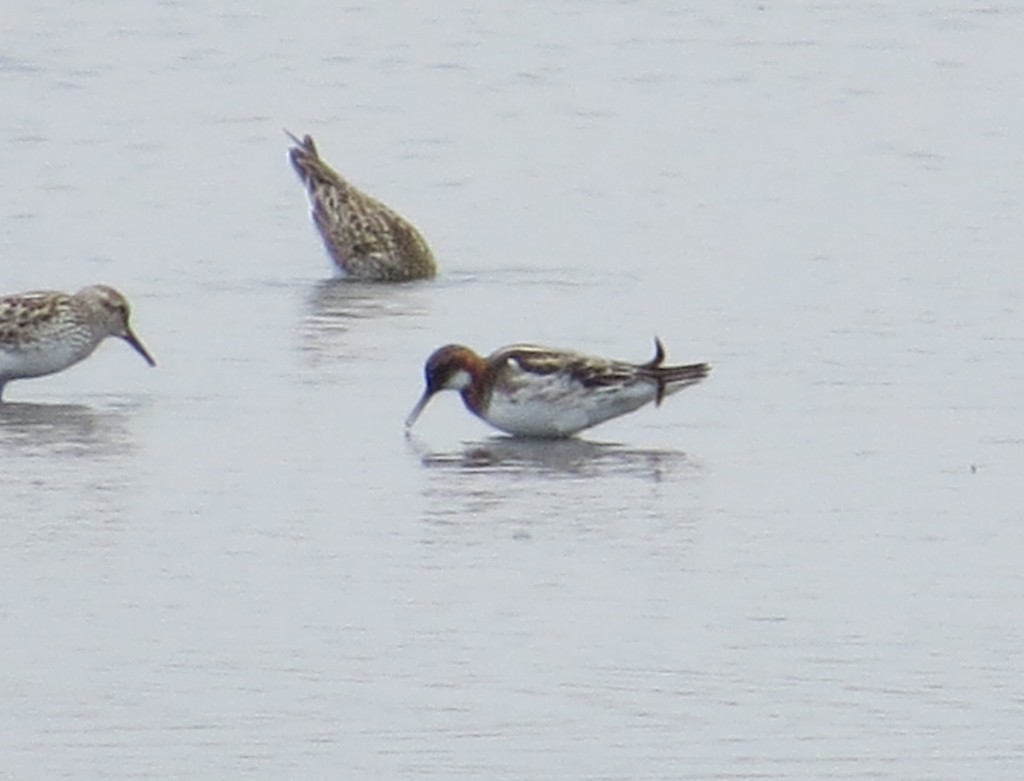 Now we had to stay for a bit because we hadn’t even gotten one of the two potential lifers there. I walked on the road to the view the north end of this pond, and I finally found the cache of phalaropes. These were definitely Wilson’s, so Evan got his life bird after all.
Now we had to stay for a bit because we hadn’t even gotten one of the two potential lifers there. I walked on the road to the view the north end of this pond, and I finally found the cache of phalaropes. These were definitely Wilson’s, so Evan got his life bird after all.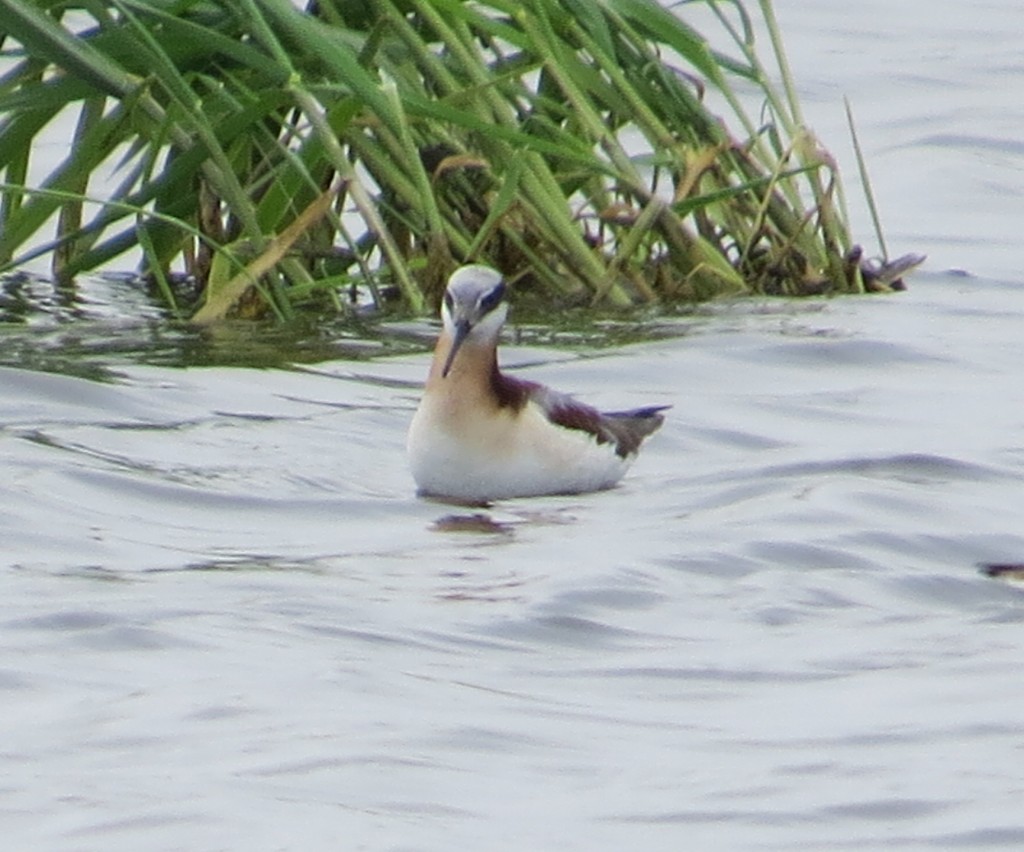
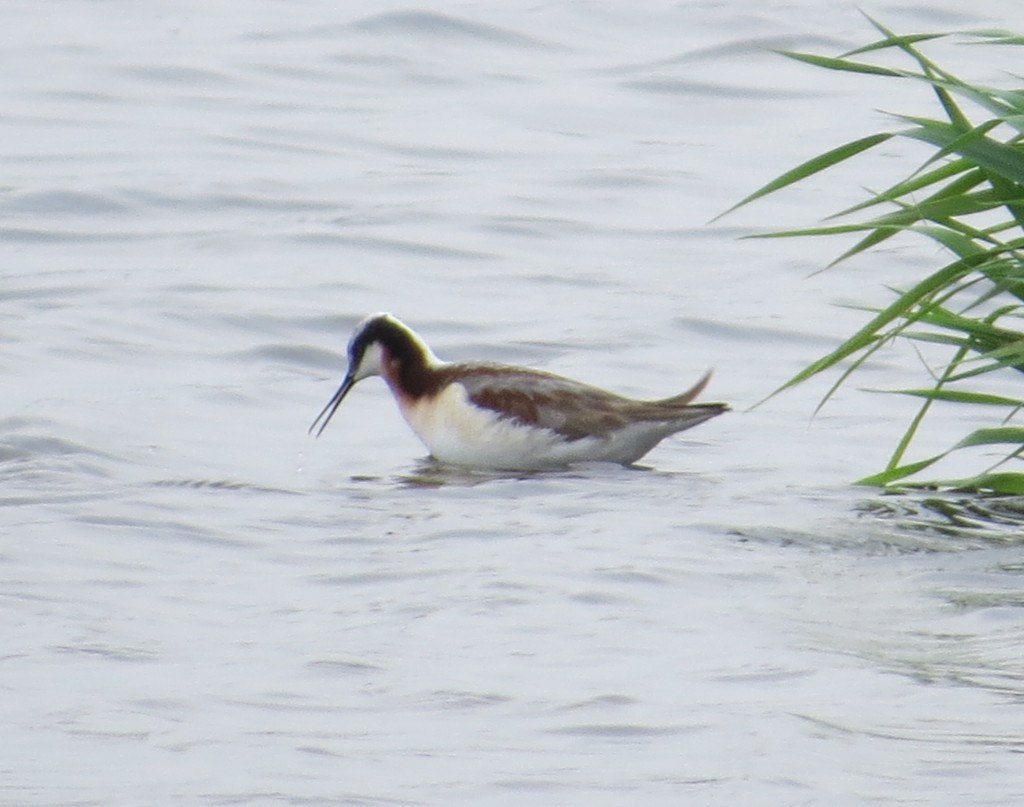 Then I spied some chunkier looking shorebirds that were bigger than the peeps but stockier than the phalaropes. The cloudy skies, distance, and strong wind buffetting my camera lens made it difficult to tell what they were. Were these our Stilt Sandpipers or a dowitcher of some sort? After looking back at my photos I could clearly see they were our Stilt lifers. It was interesting to read in the field guide, though, that they are compared to dowitchers in their behavior.
Then I spied some chunkier looking shorebirds that were bigger than the peeps but stockier than the phalaropes. The cloudy skies, distance, and strong wind buffetting my camera lens made it difficult to tell what they were. Were these our Stilt Sandpipers or a dowitcher of some sort? After looking back at my photos I could clearly see they were our Stilt lifers. It was interesting to read in the field guide, though, that they are compared to dowitchers in their behavior.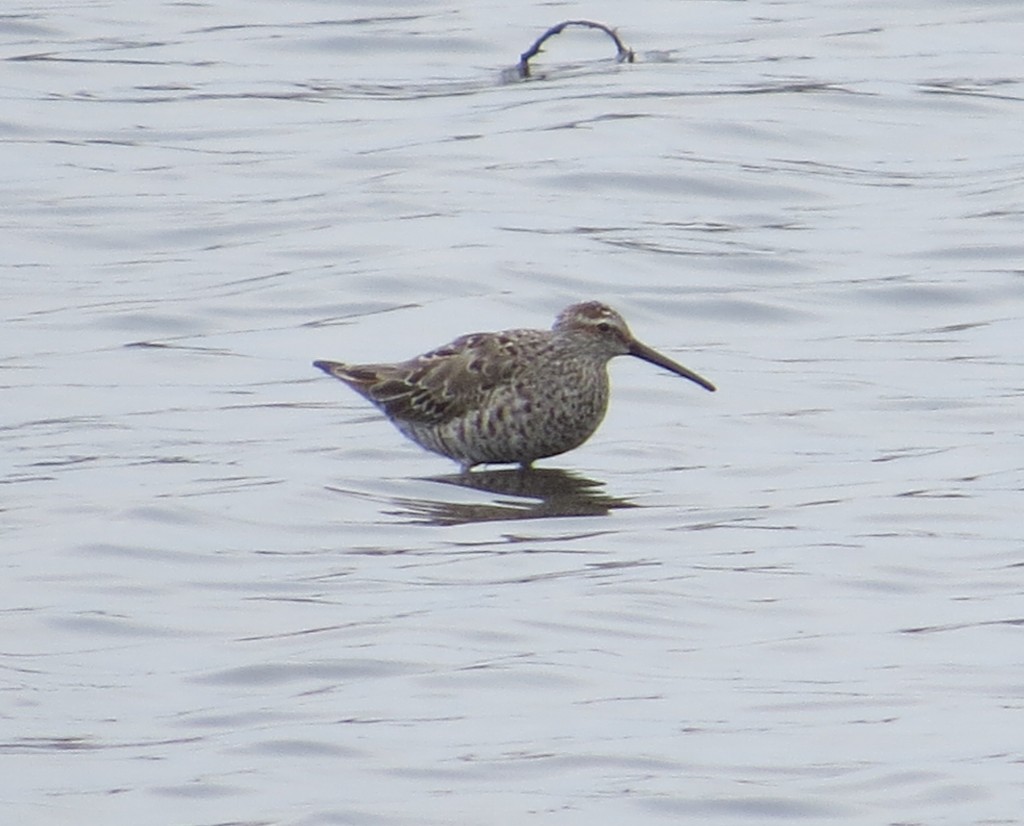
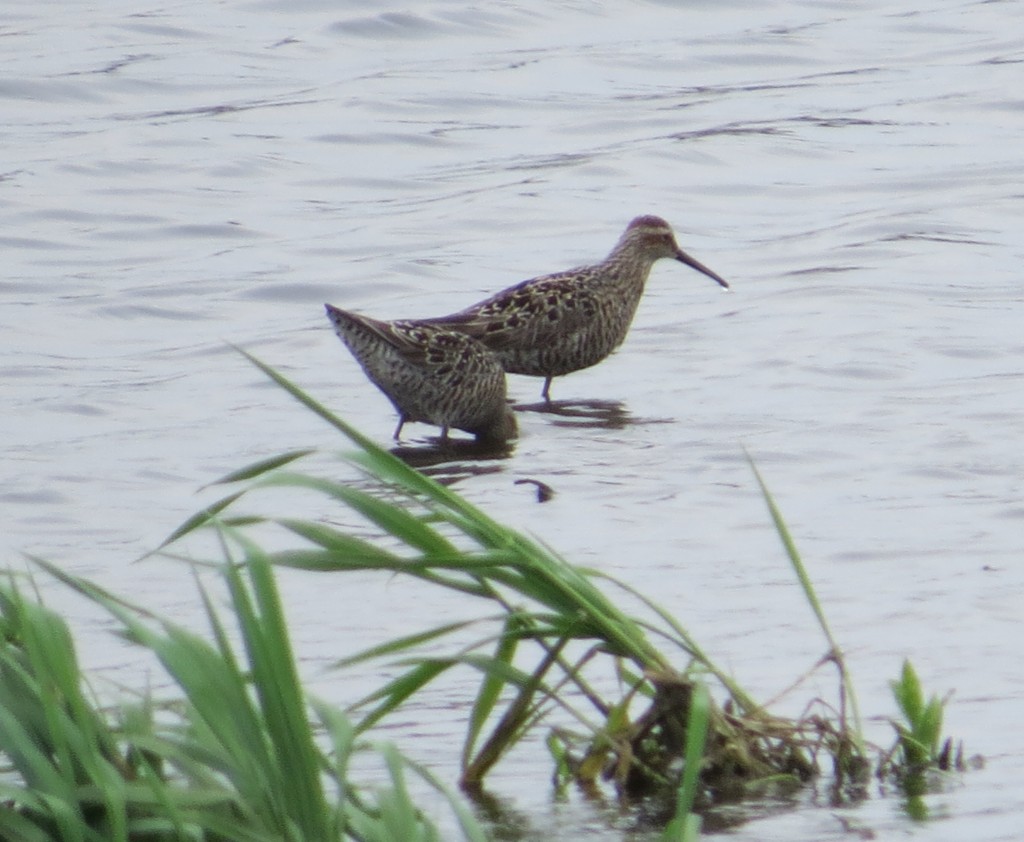
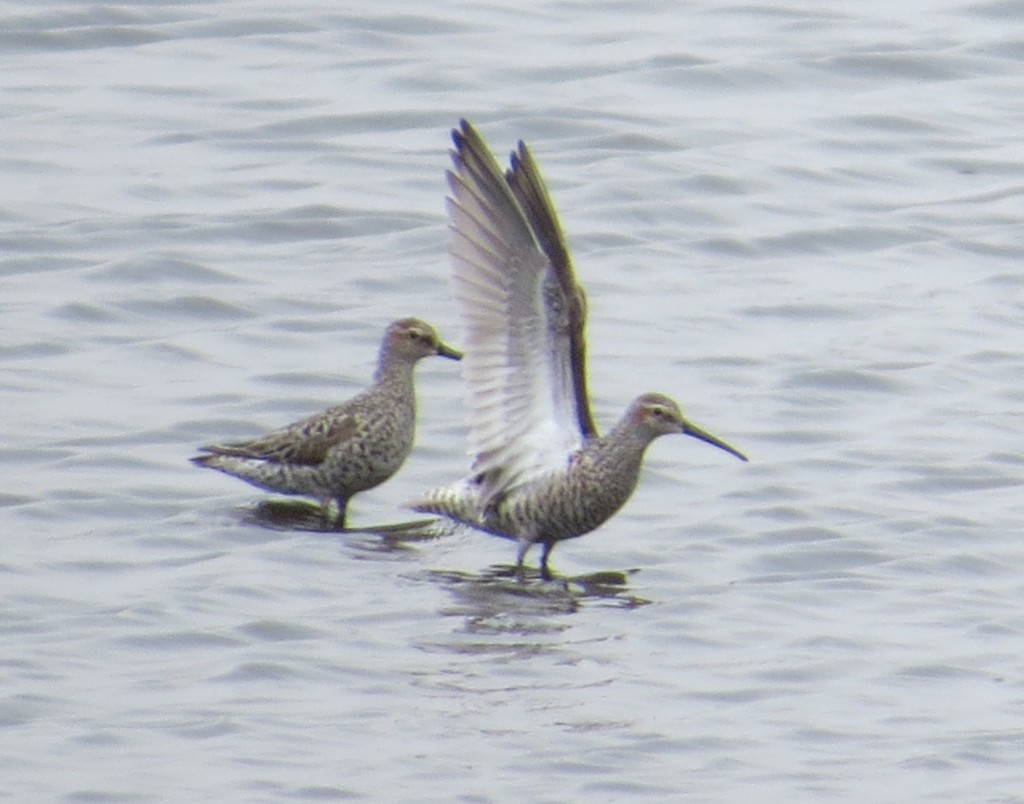
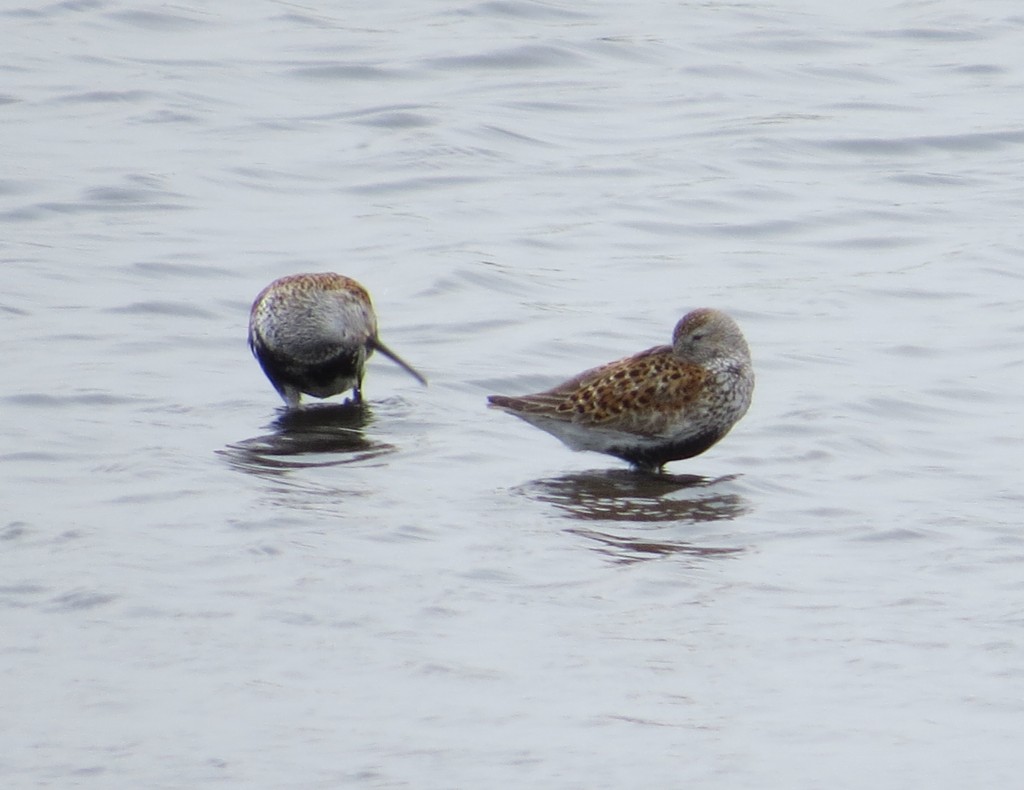
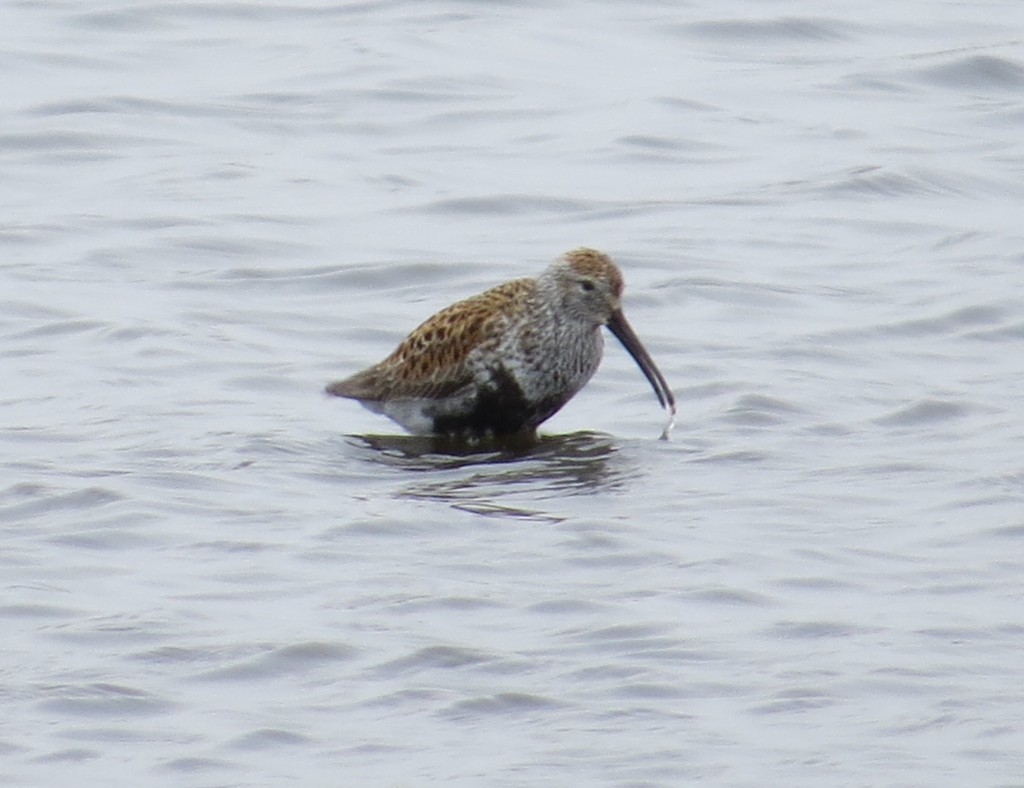 Three life birds for Evan, two for me, and a breeding plumage Red-necked Phalarope. I guess we better stay alert for a few more late migrants. As for the fishing report, Evan caught four Bluegill and quenched, albeit briefly, his thirst for fishing.
Three life birds for Evan, two for me, and a breeding plumage Red-necked Phalarope. I guess we better stay alert for a few more late migrants. As for the fishing report, Evan caught four Bluegill and quenched, albeit briefly, his thirst for fishing.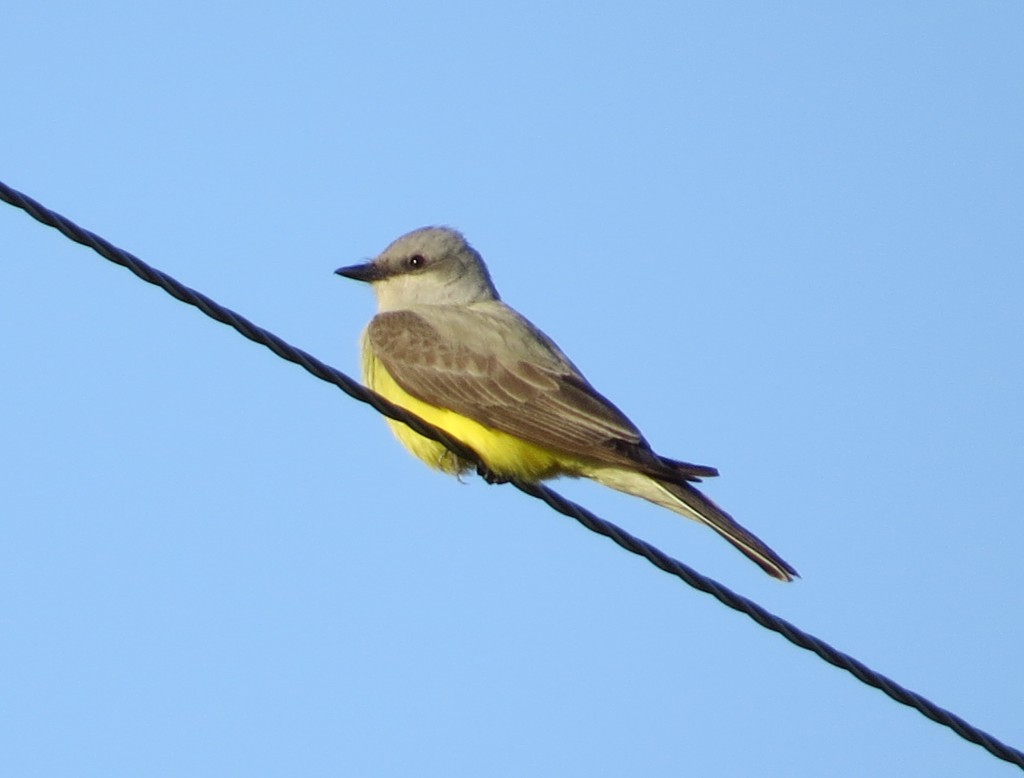
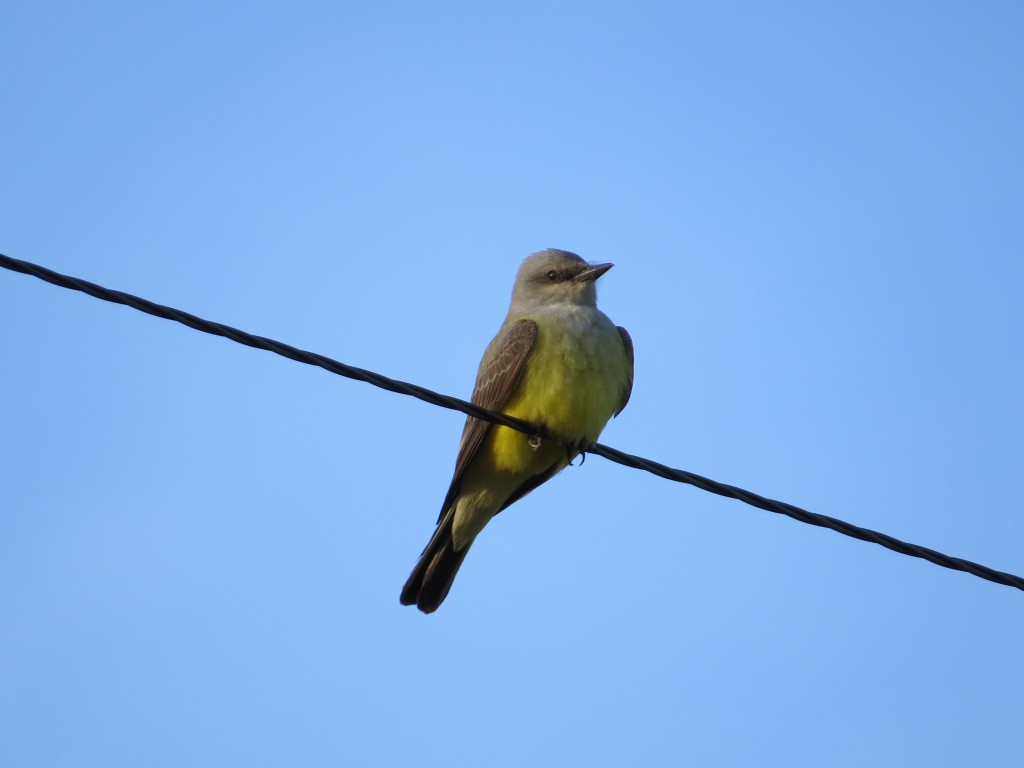 I raced home to get Evan. It was only 7:20, so I still had time to get him, get the bird, and get him back for bed at 8. I whipped into the neighborhood and saw all the neighbors and neighbor kids were outside hanging out enjoying this gorgeous night. When they saw me pull up curb-side and not bother to pull in the driveway, they all knew I had seen something good and was there to pick up Evan. No time for small talk. I told Evan to hop in because I found us the Western Kingbird. In seconds, we tore off going back to the wire.
I raced home to get Evan. It was only 7:20, so I still had time to get him, get the bird, and get him back for bed at 8. I whipped into the neighborhood and saw all the neighbors and neighbor kids were outside hanging out enjoying this gorgeous night. When they saw me pull up curb-side and not bother to pull in the driveway, they all knew I had seen something good and was there to pick up Evan. No time for small talk. I told Evan to hop in because I found us the Western Kingbird. In seconds, we tore off going back to the wire.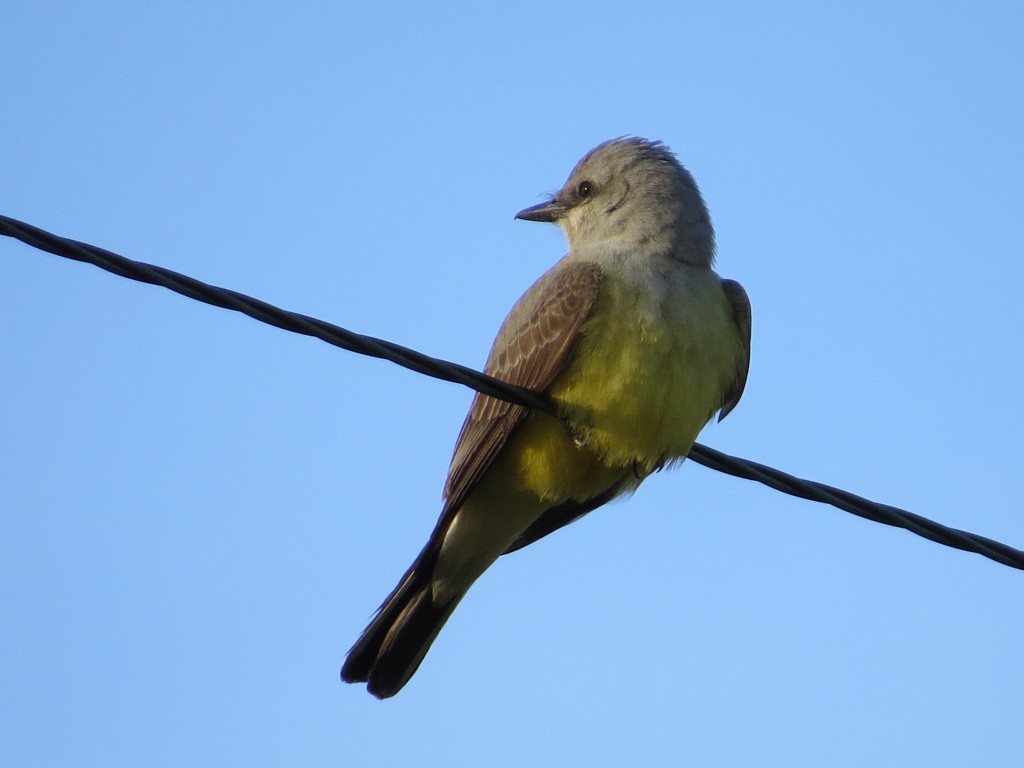
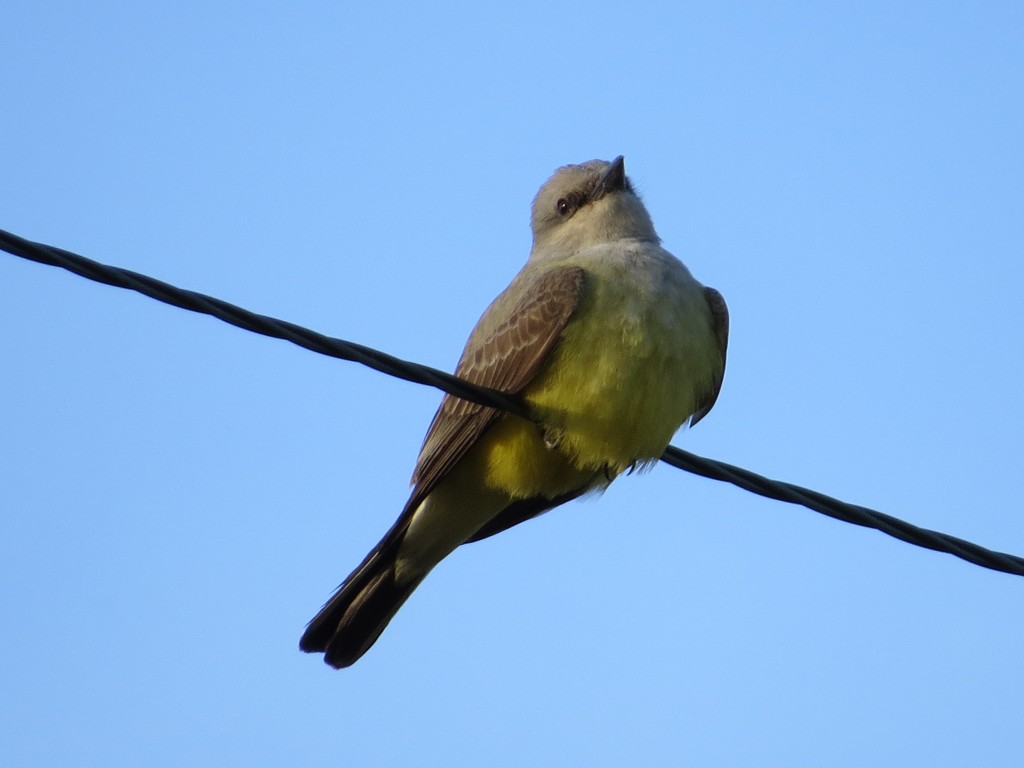
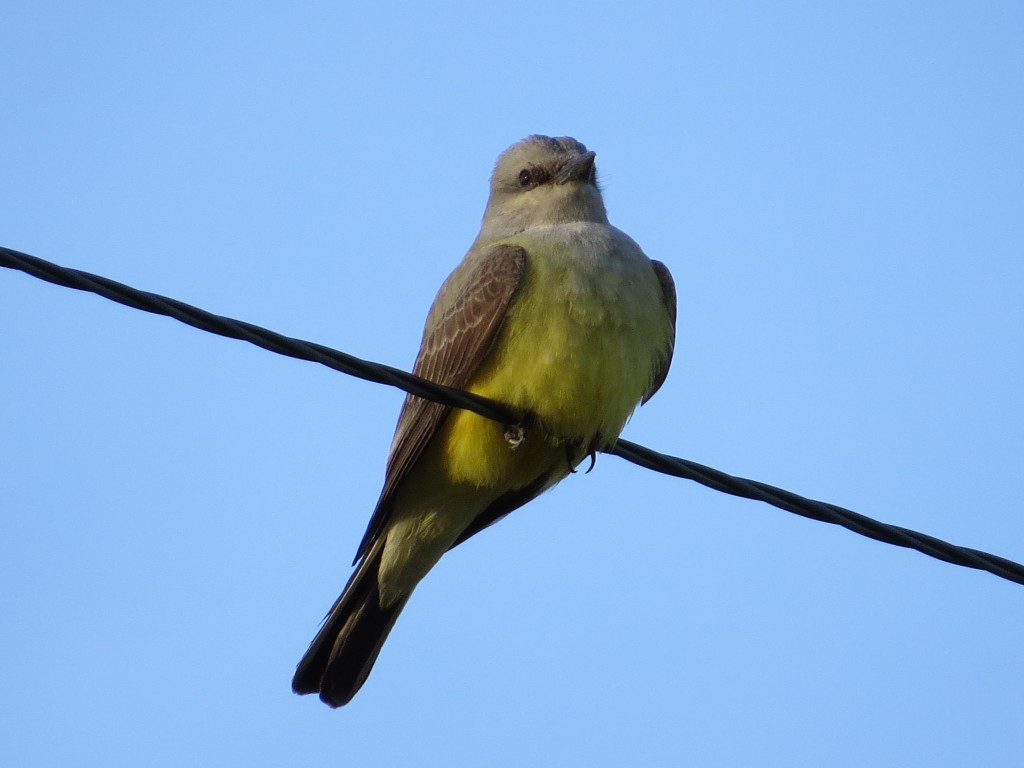
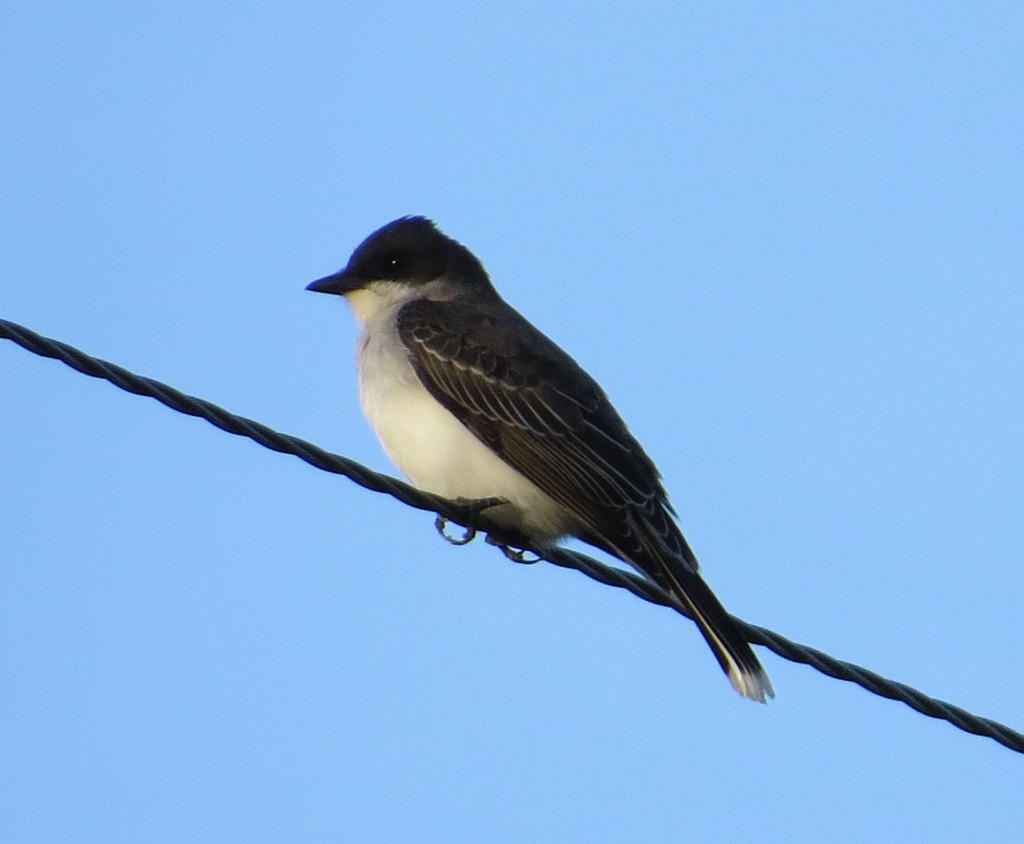
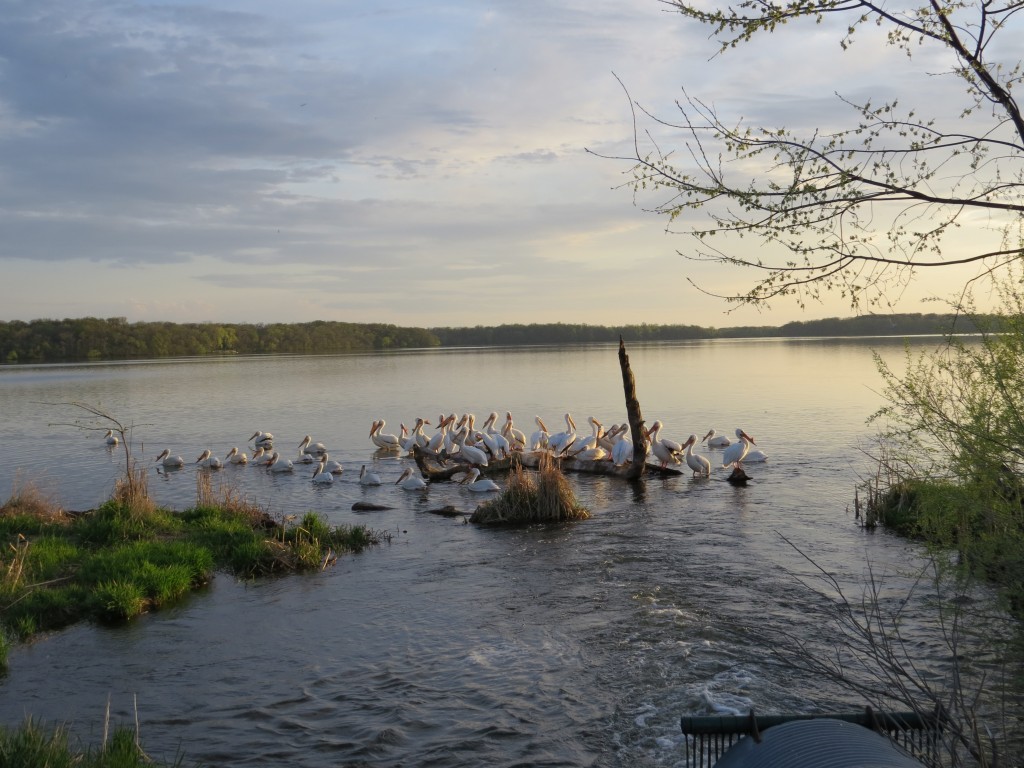
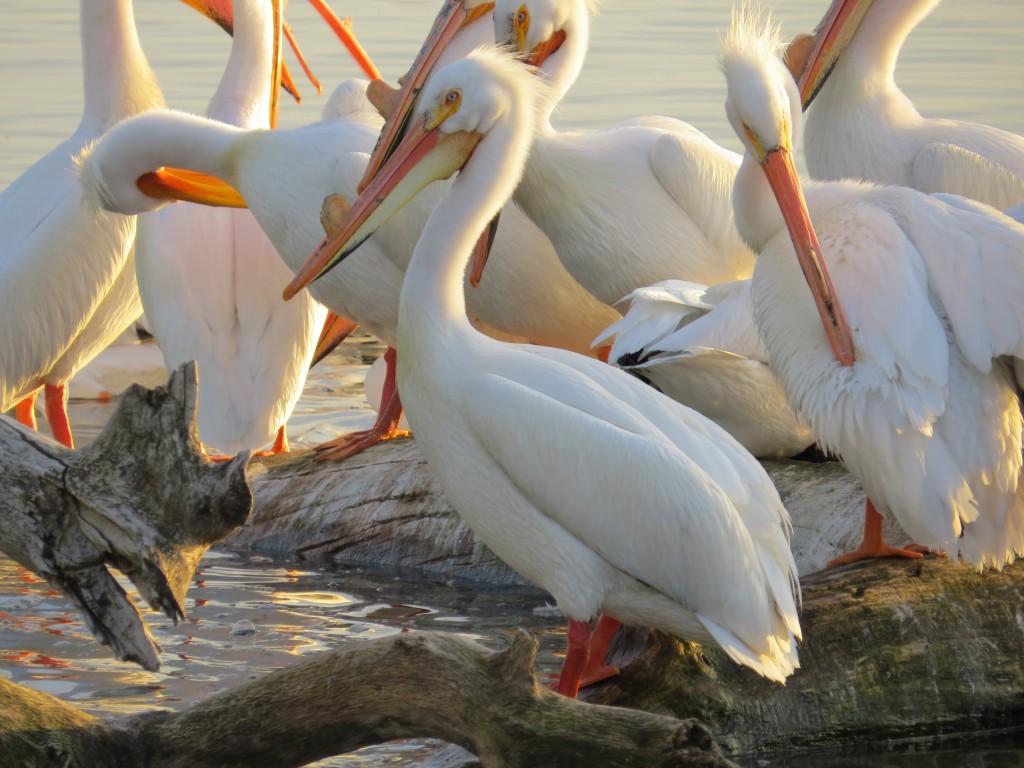
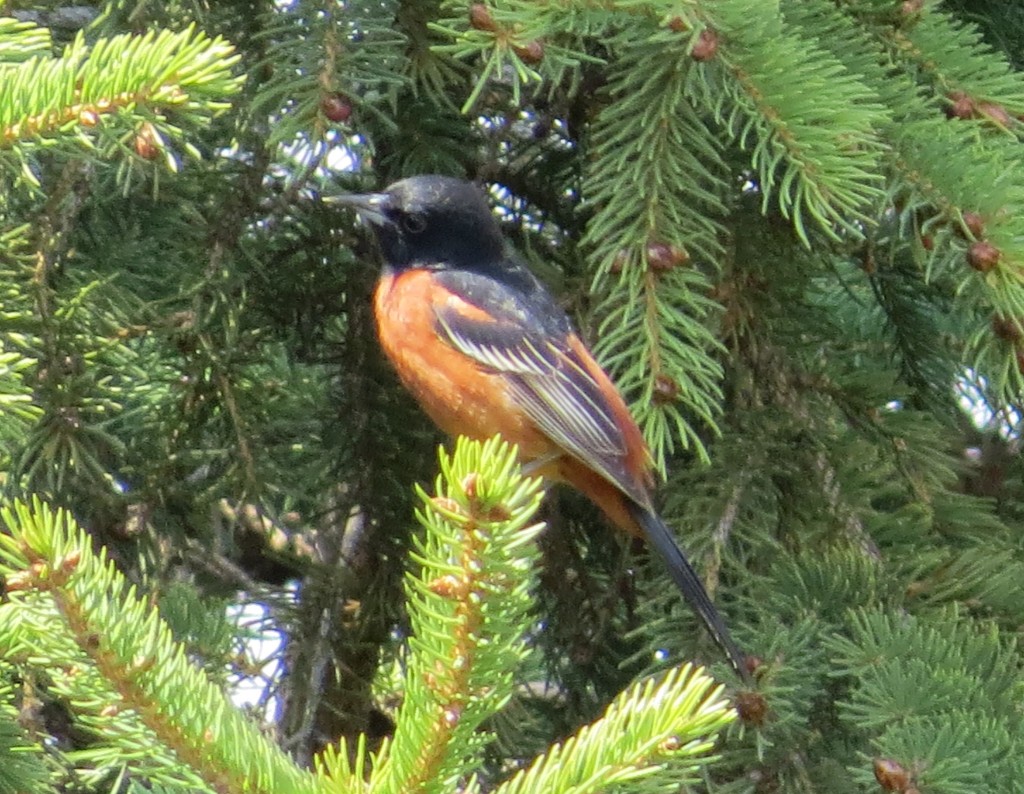
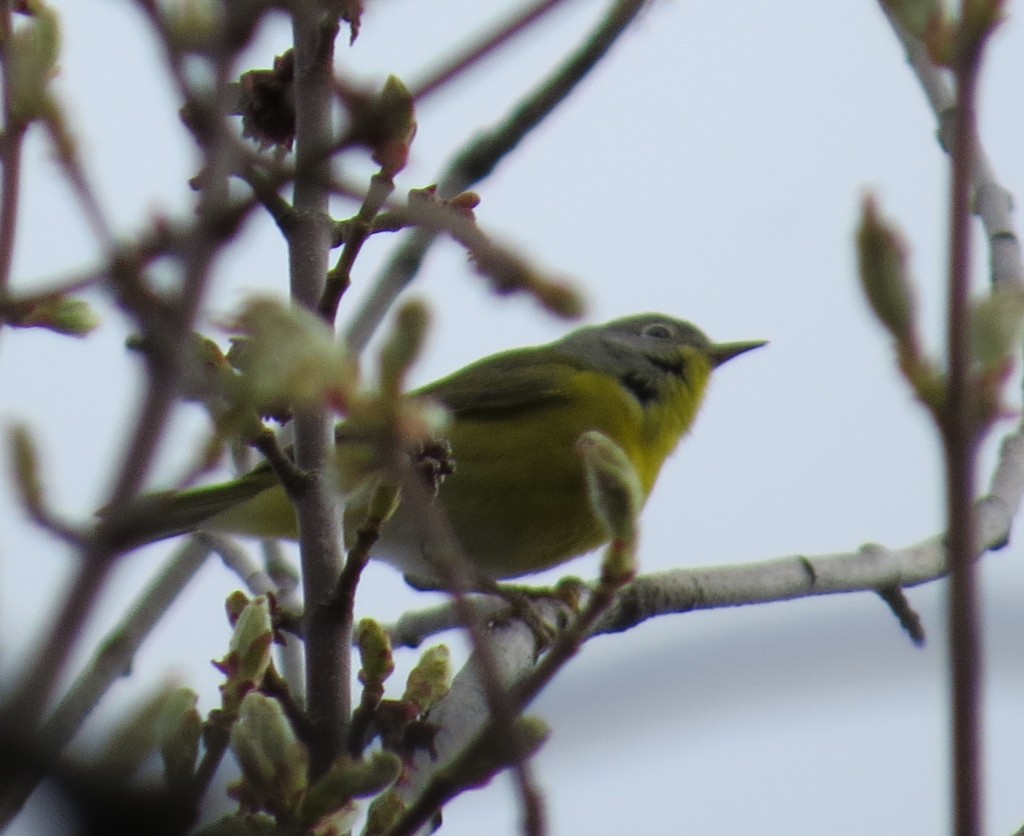
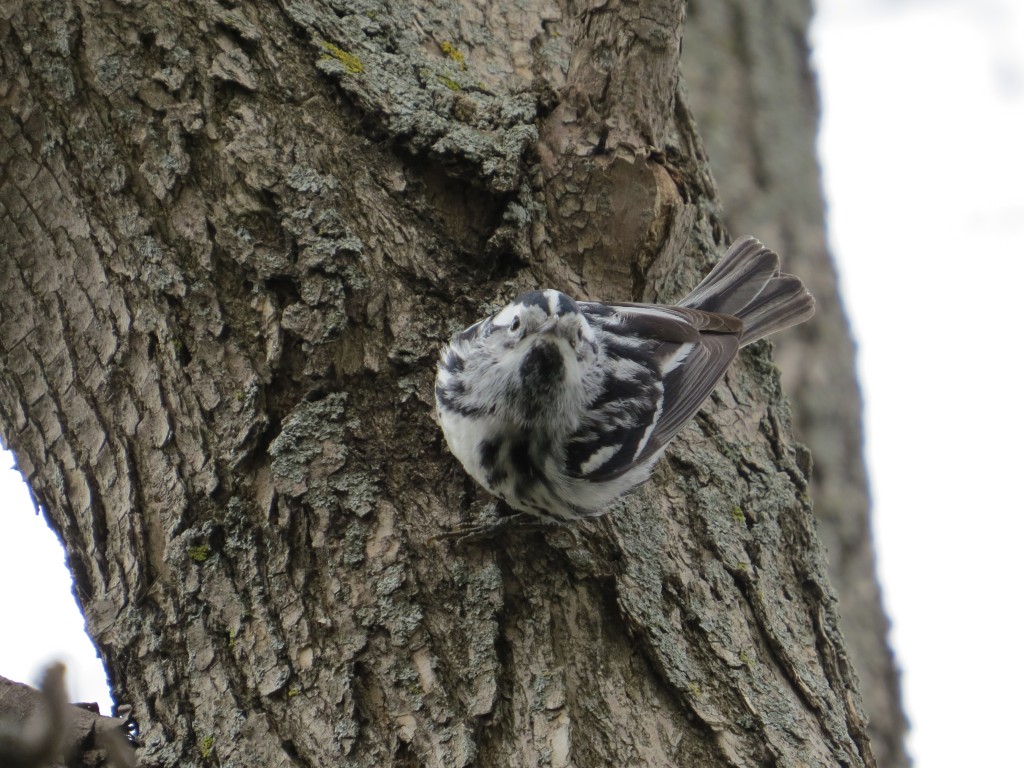
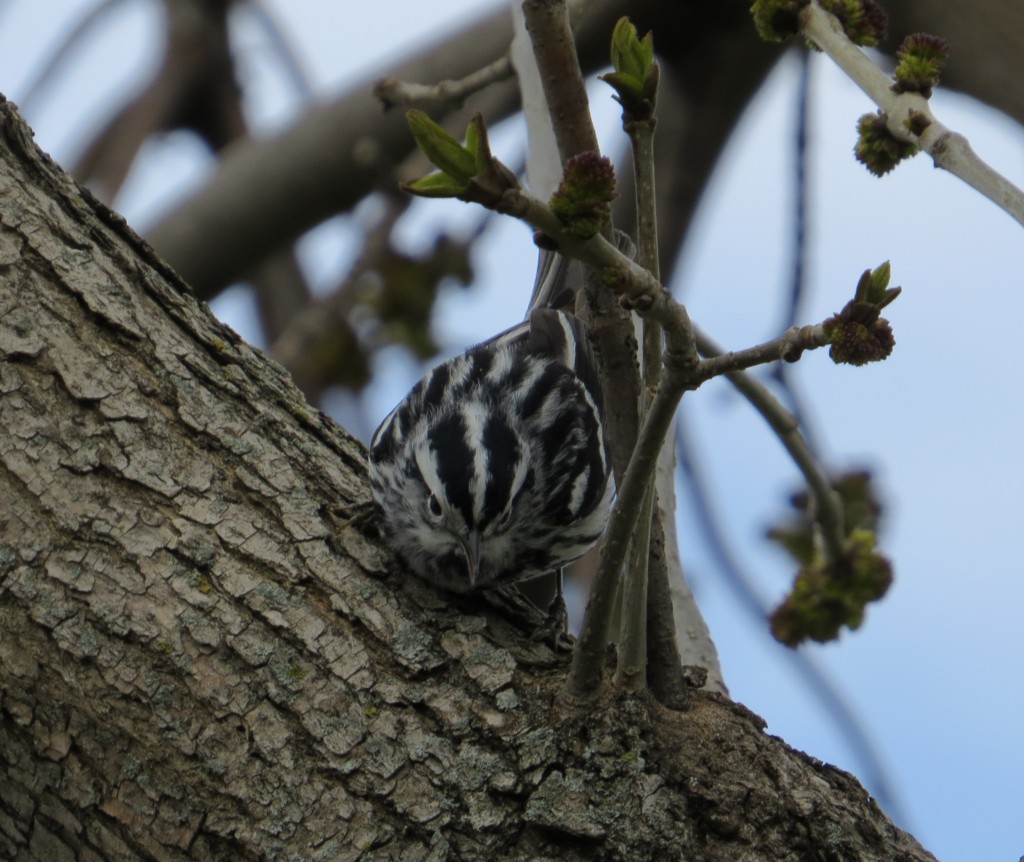 And then I noticed a third warbler, the Yellow-rumped! Though none of these warblers were terribly exciting, it was a thrill to have them invade our very own trees. I wondered what else was with this mini warbler wave, but we had to get to scout camp.
And then I noticed a third warbler, the Yellow-rumped! Though none of these warblers were terribly exciting, it was a thrill to have them invade our very own trees. I wondered what else was with this mini warbler wave, but we had to get to scout camp.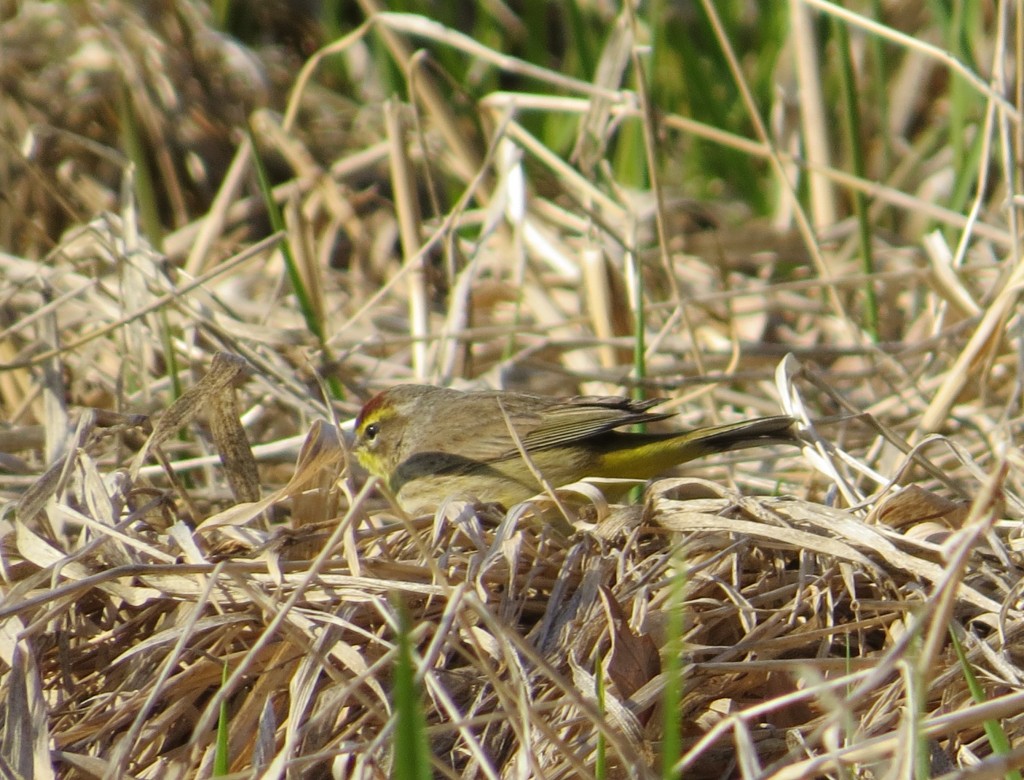
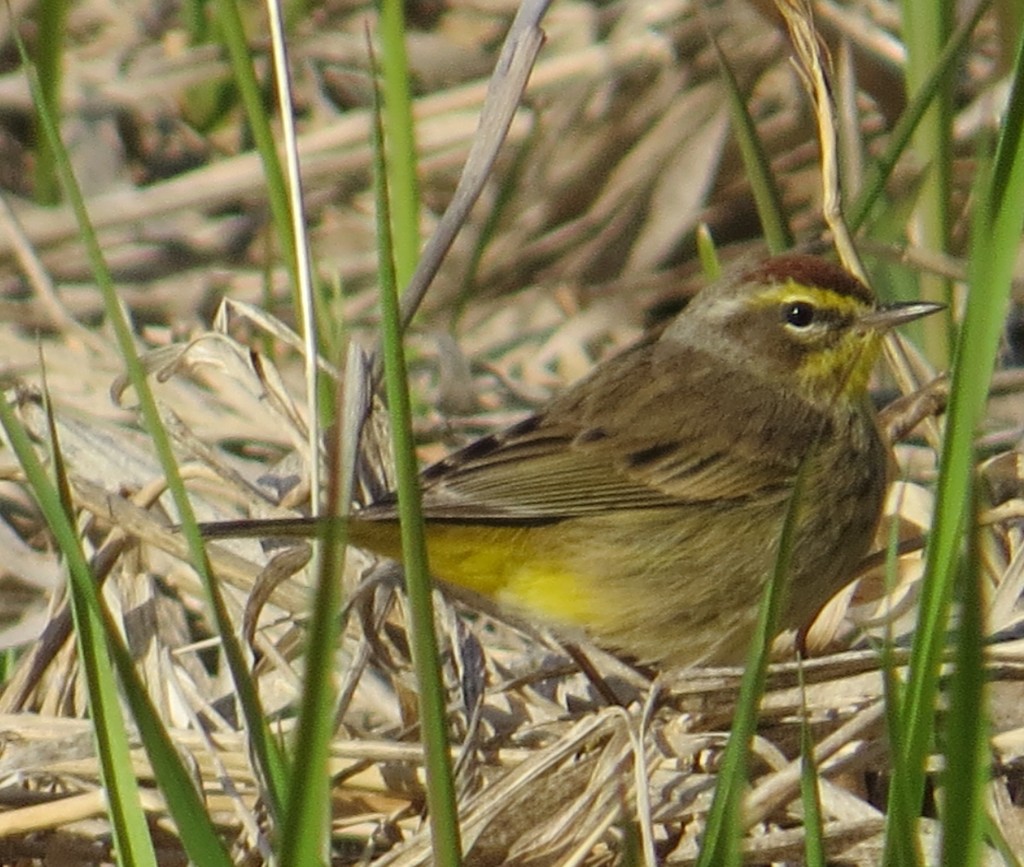
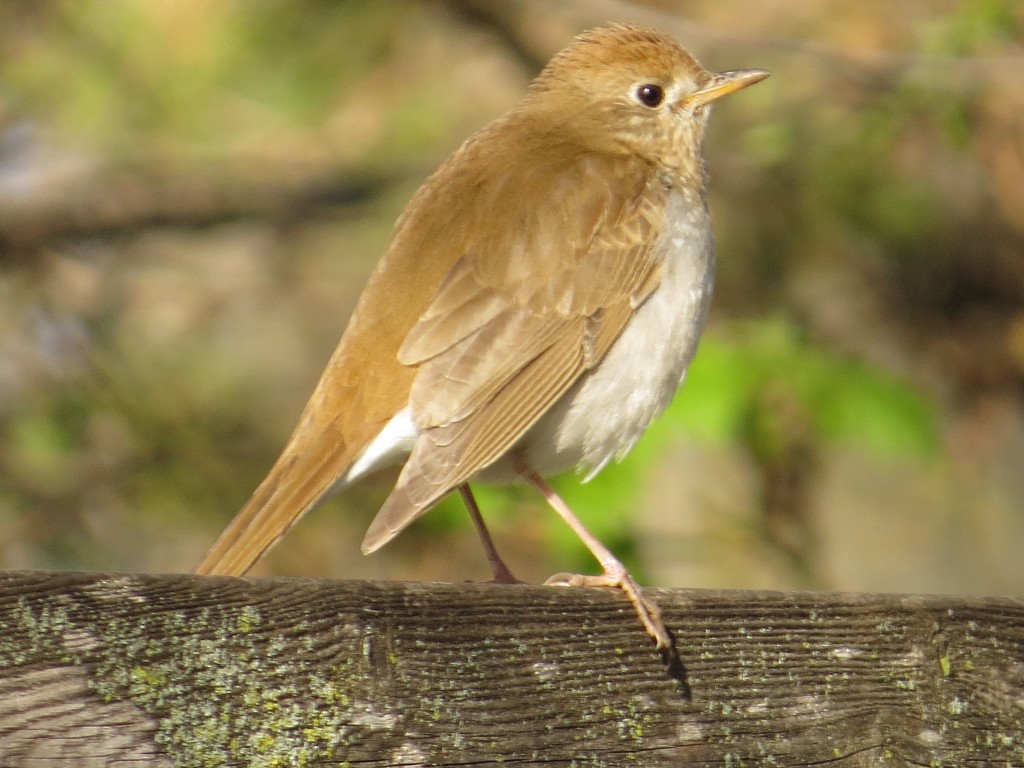
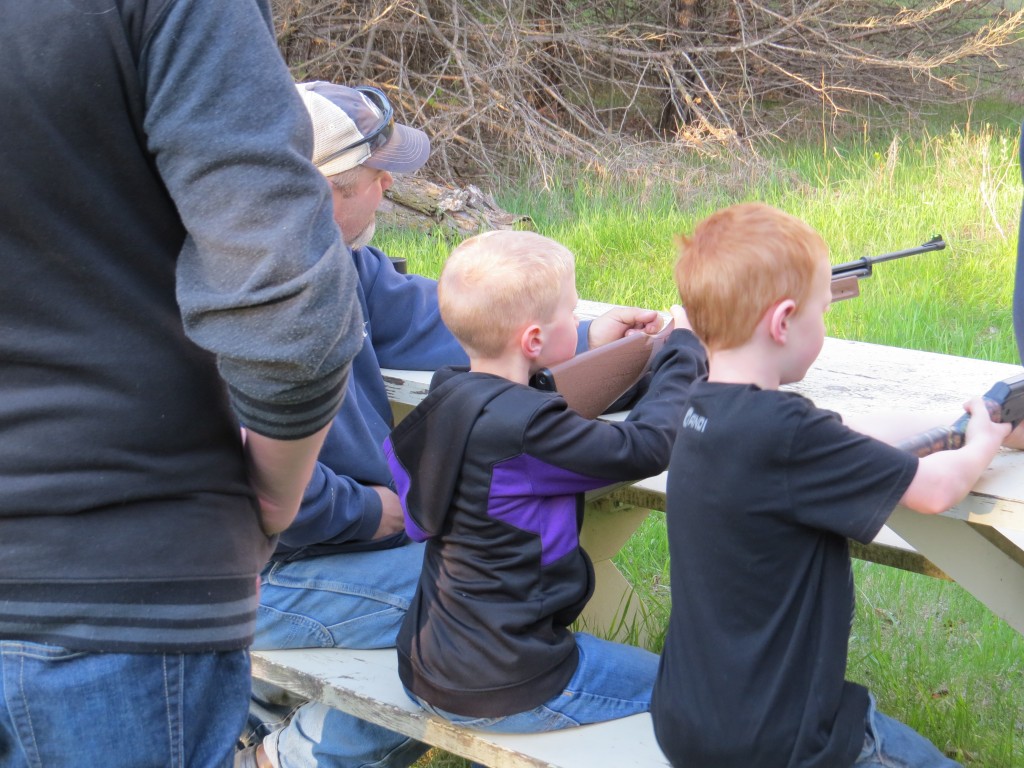
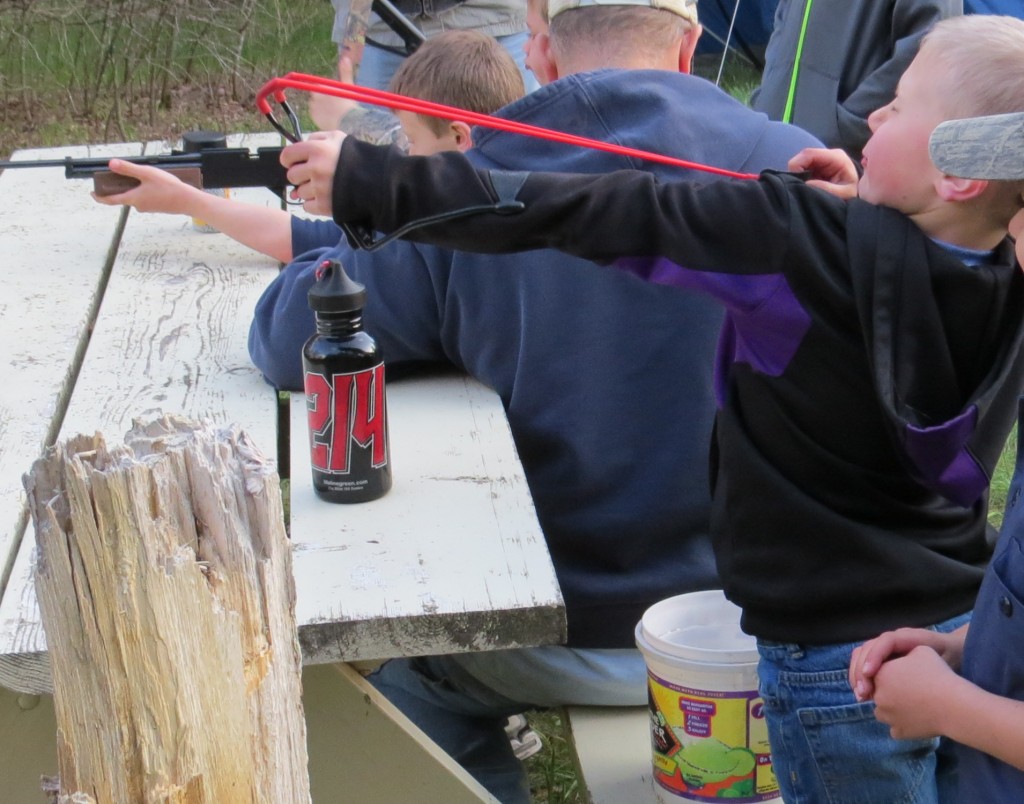
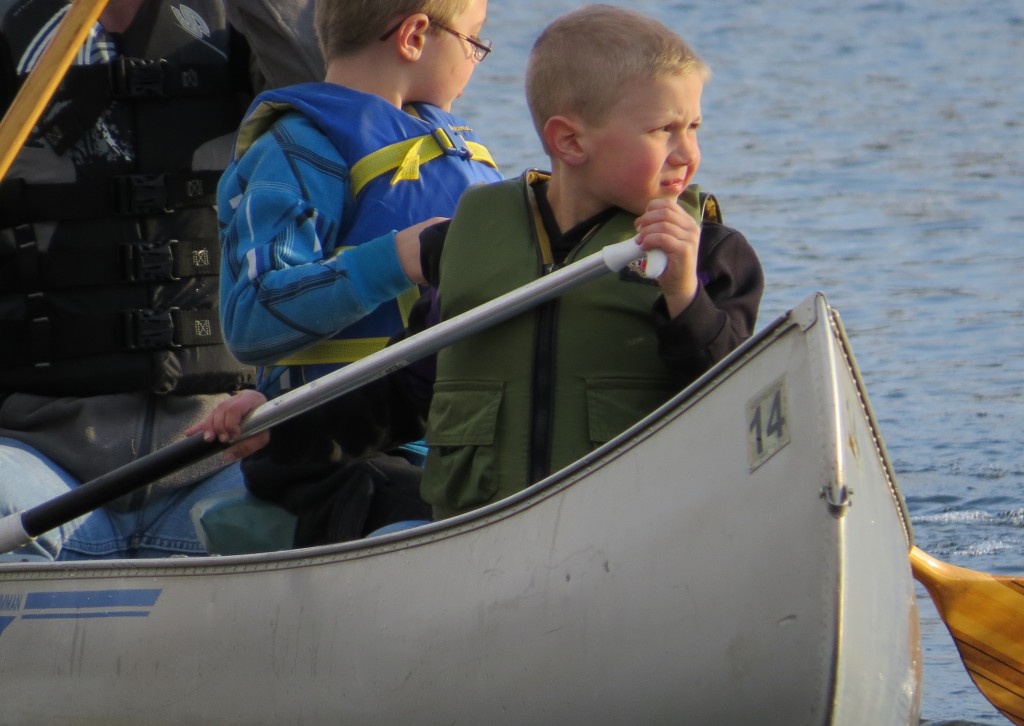
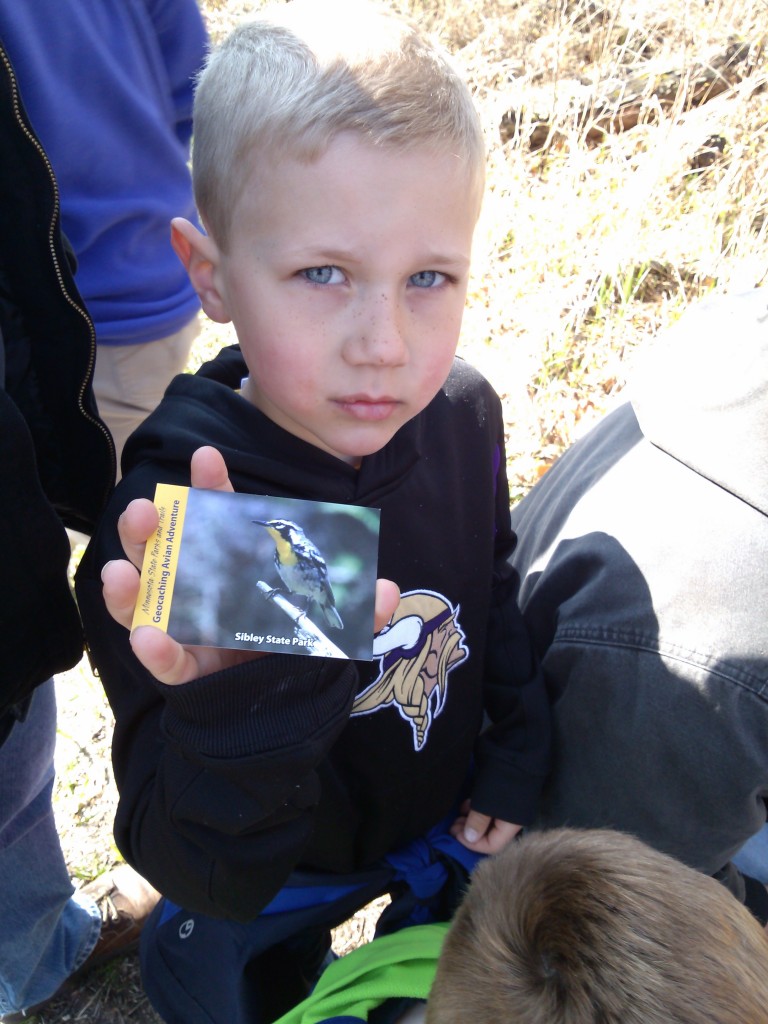
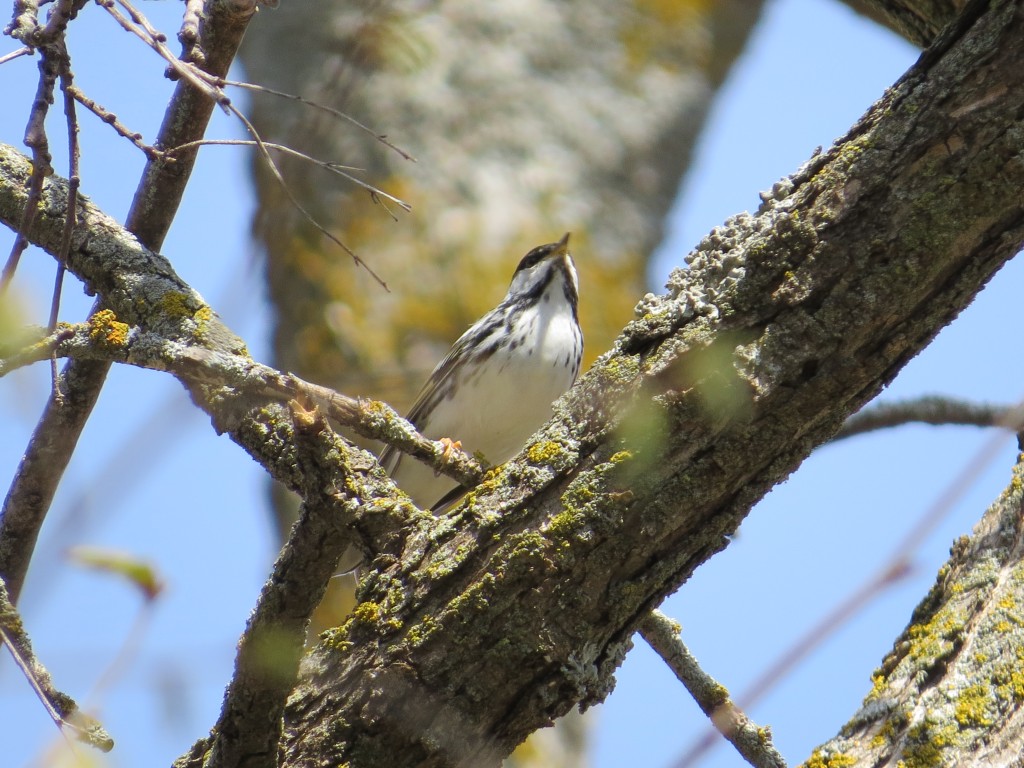
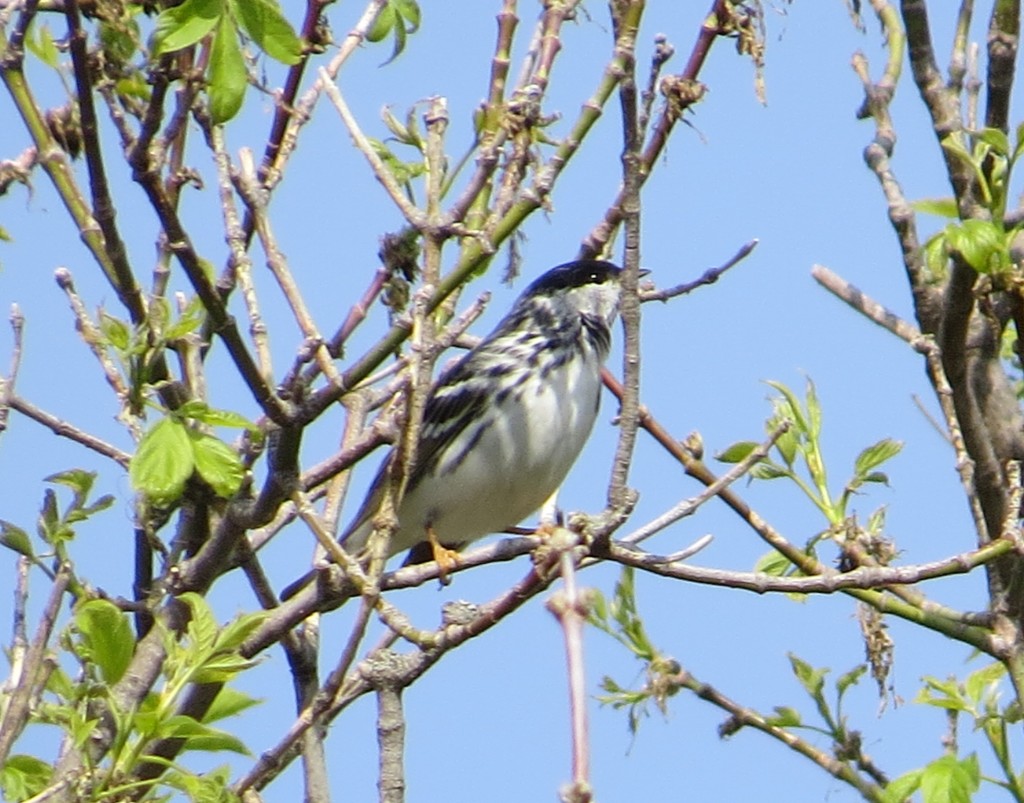
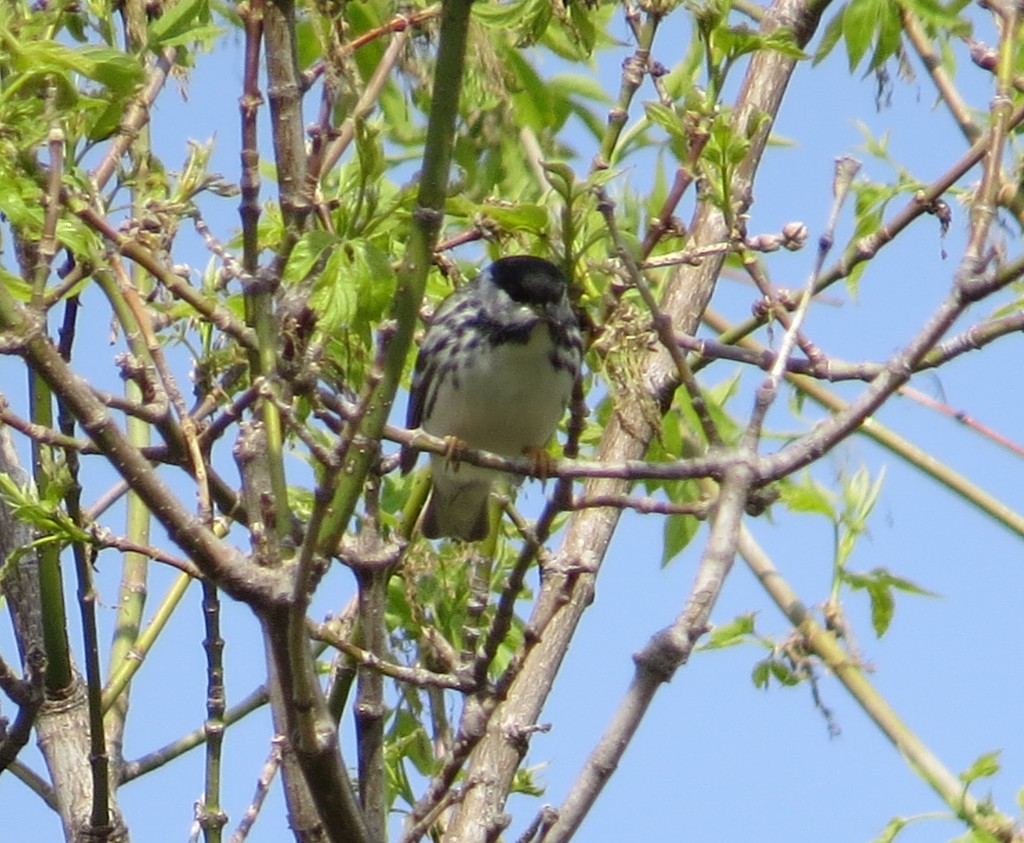
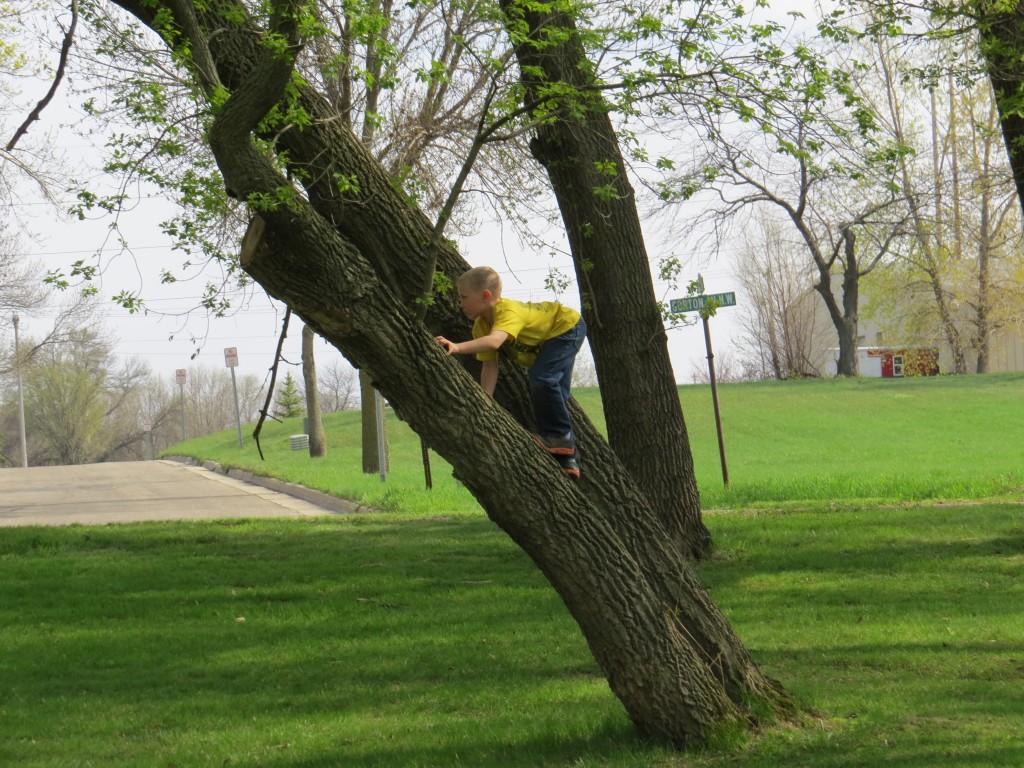
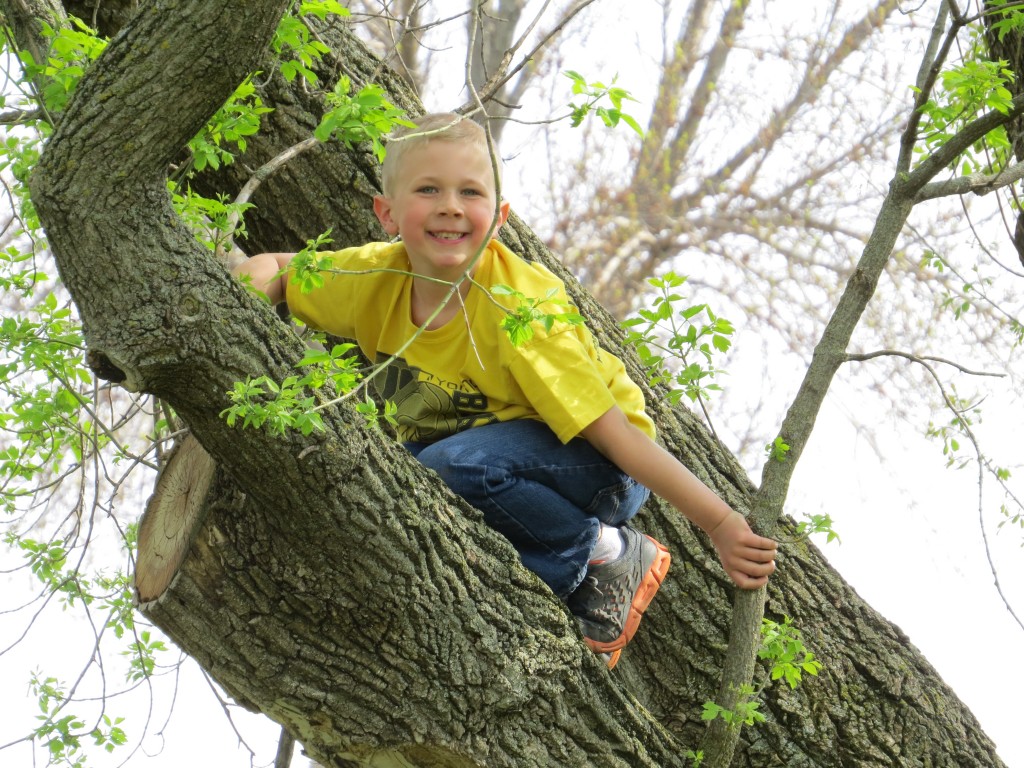
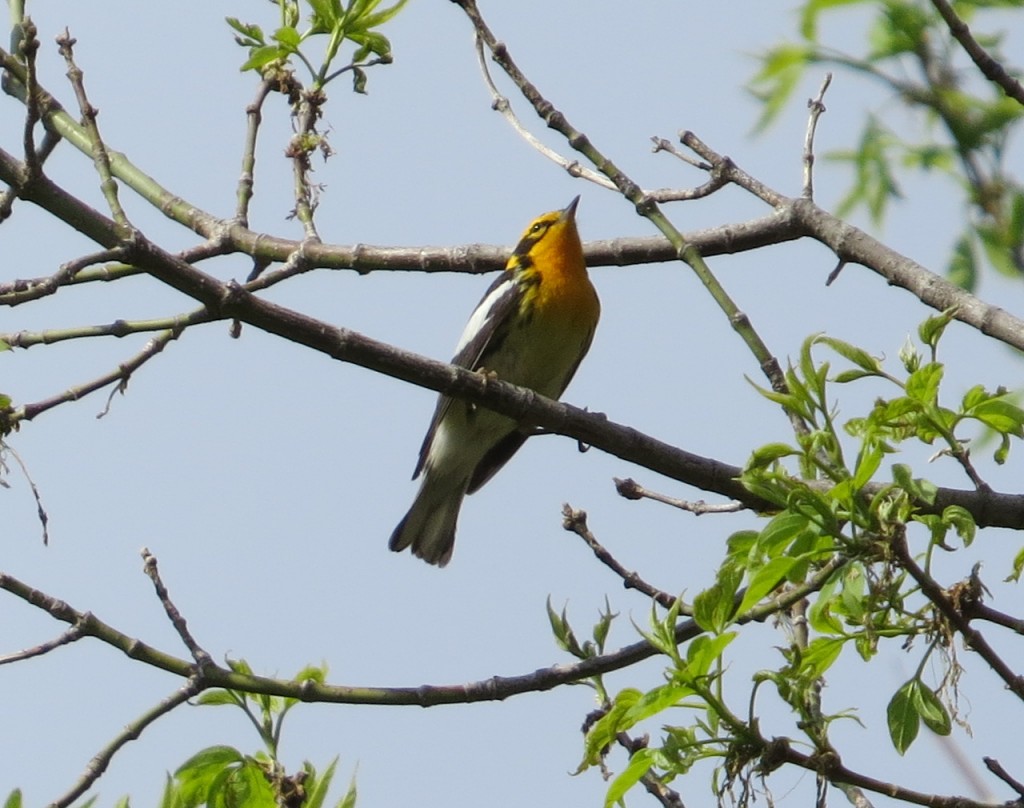
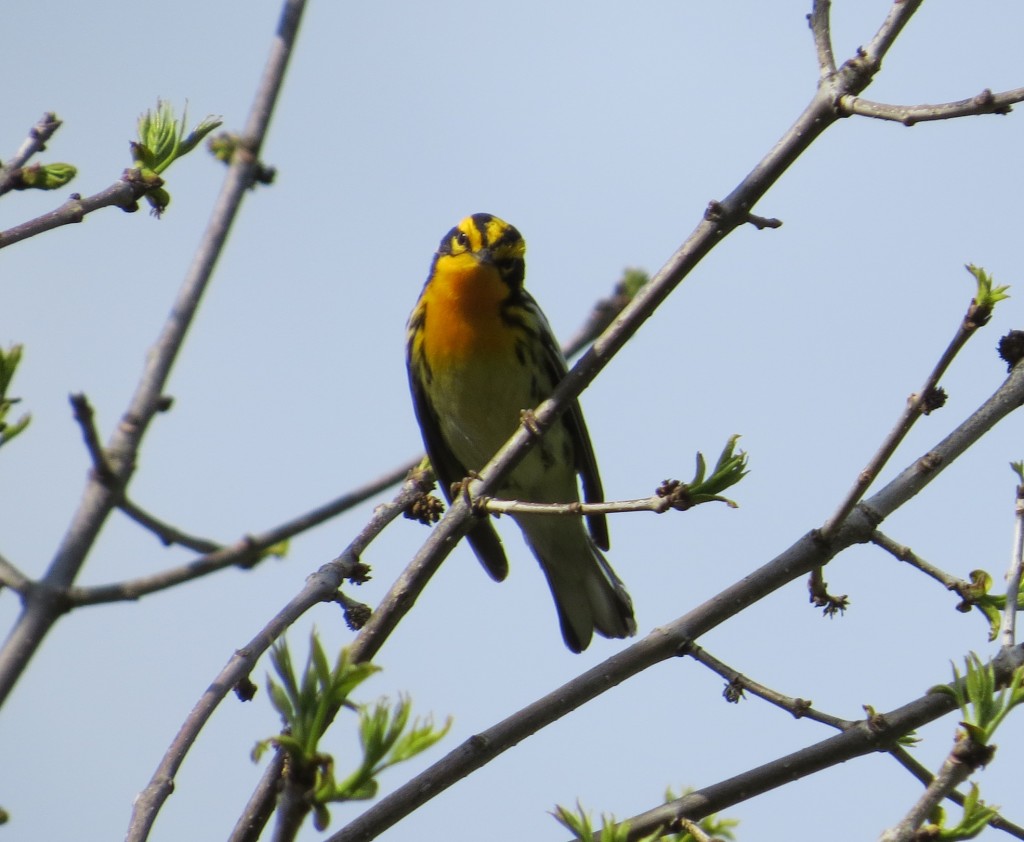 I wanted to keep photographing this bird, but it gave me the slip while I was checking on Hercules.
I wanted to keep photographing this bird, but it gave me the slip while I was checking on Hercules.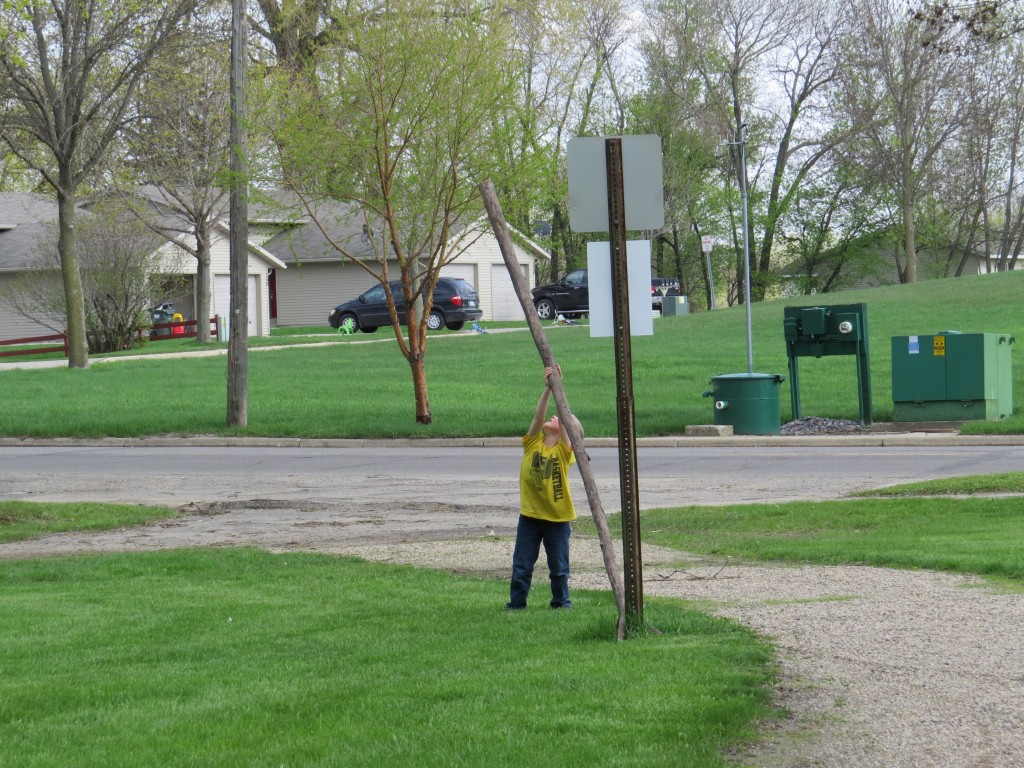 Though not as much fun as playing with dead wood, I photographed a couple of the more common warblers.
Though not as much fun as playing with dead wood, I photographed a couple of the more common warblers.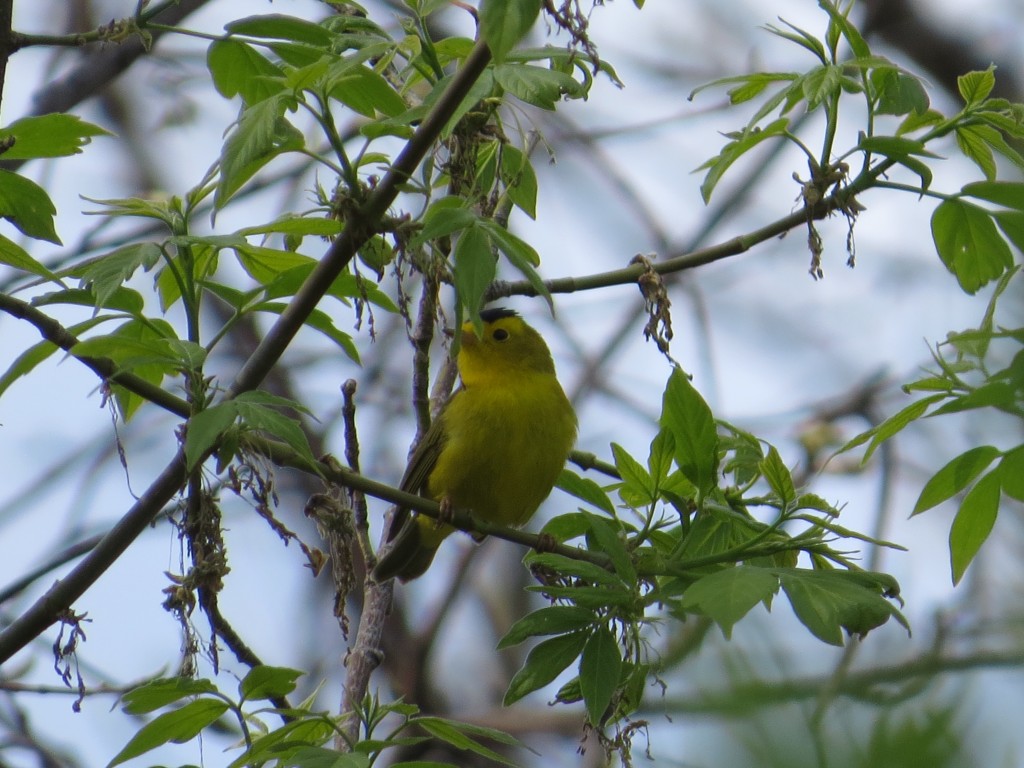
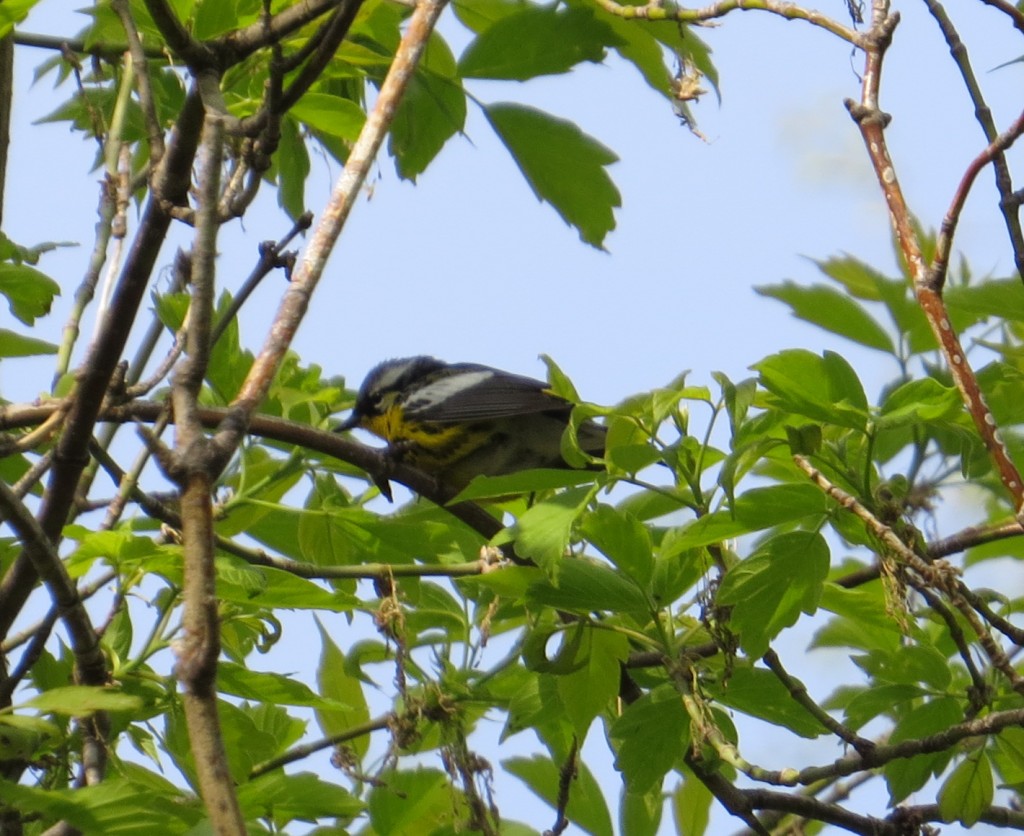
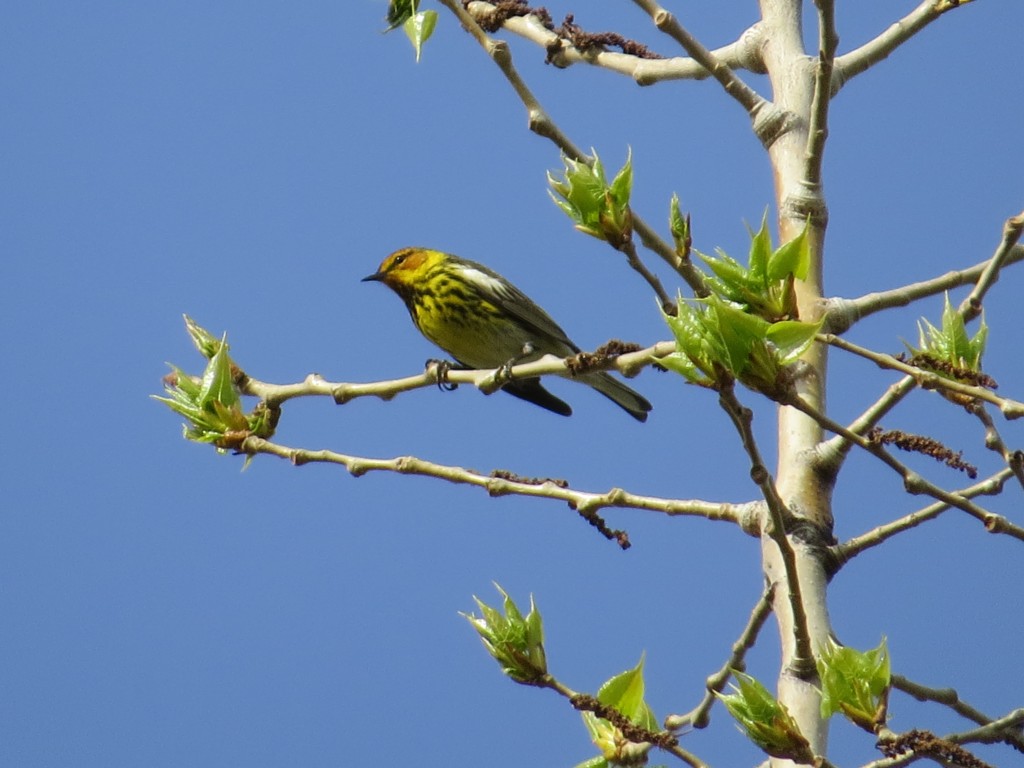
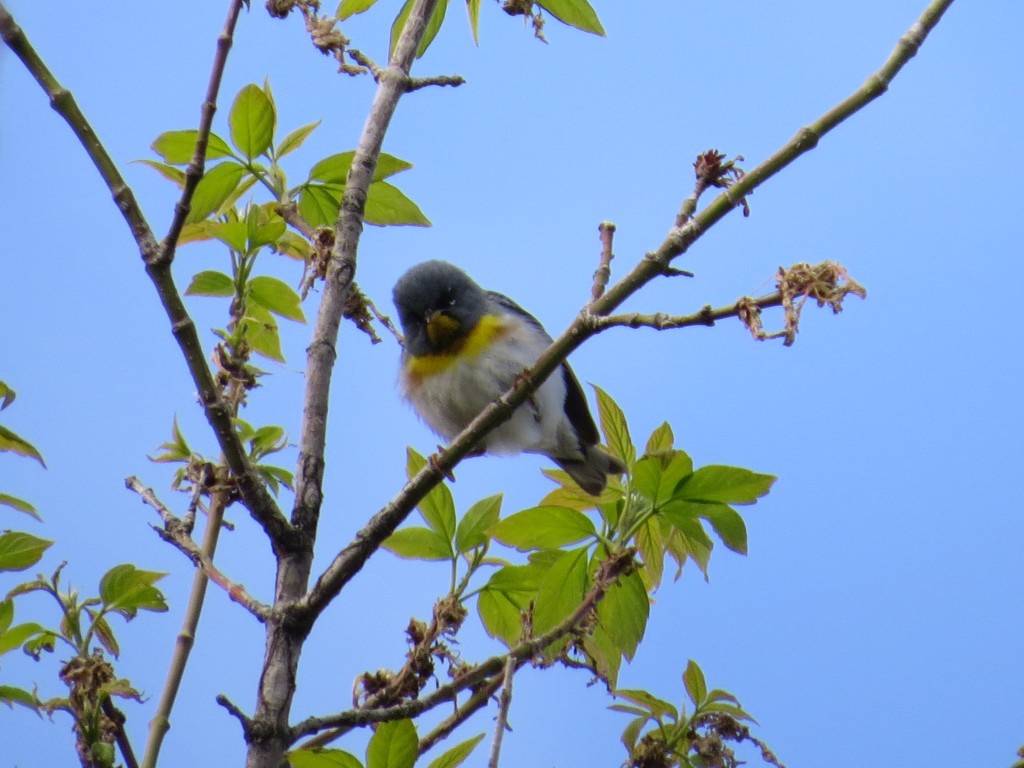
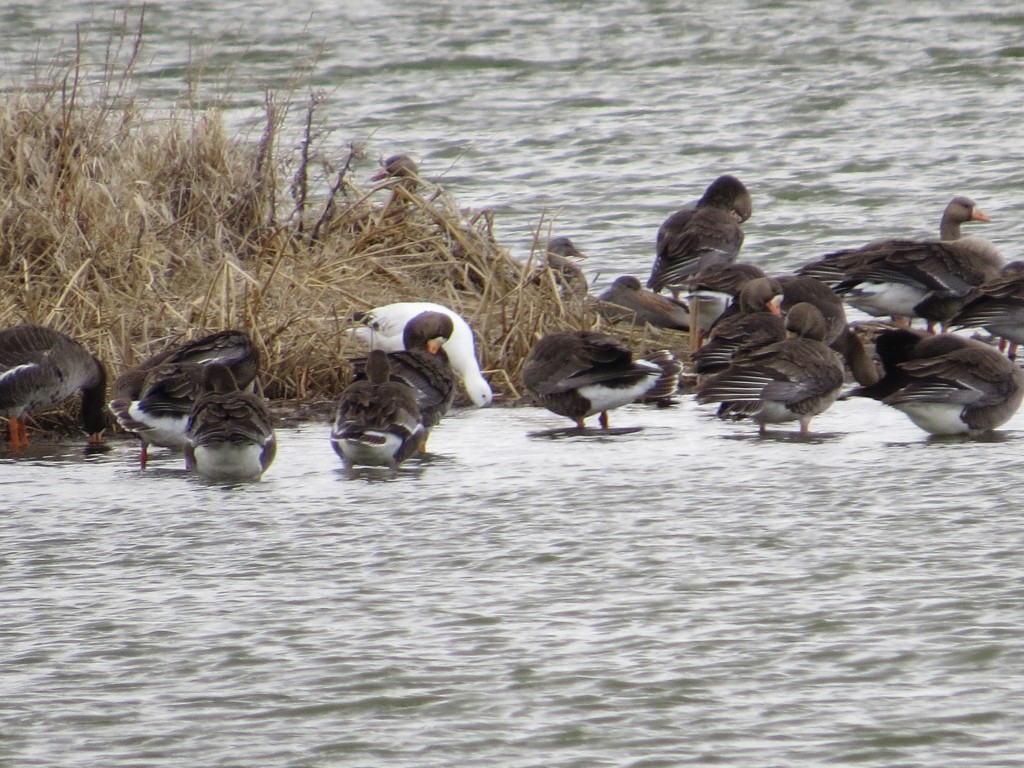
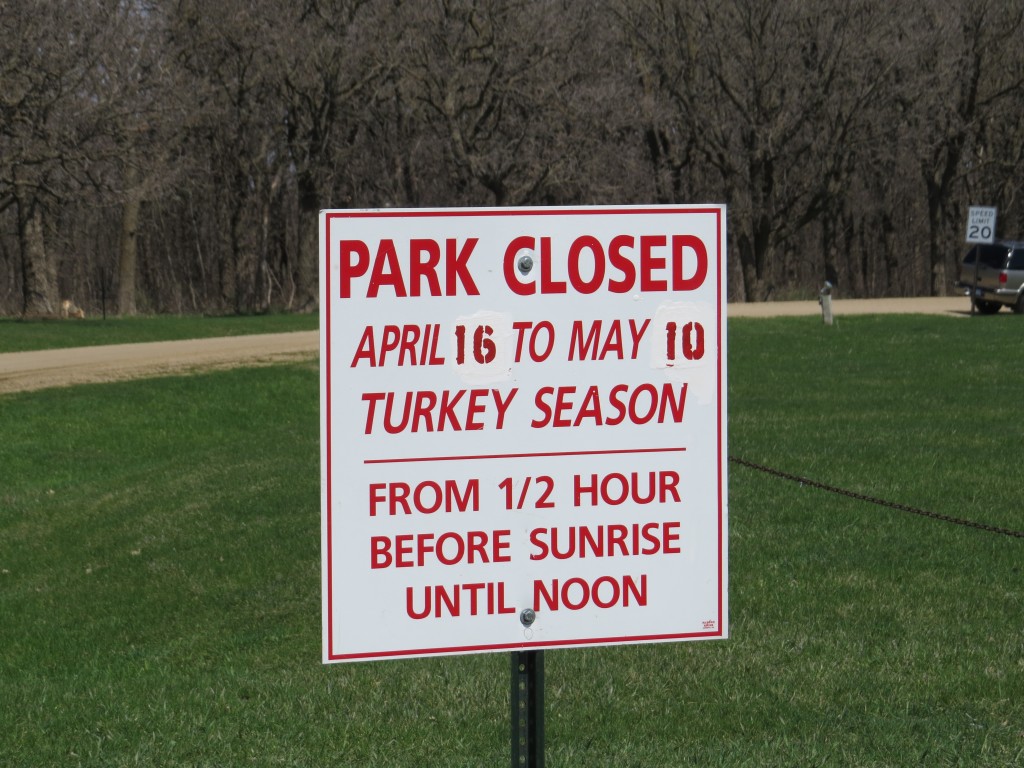 My goodness did those kids play hard and long in the chilly, windy weather. I was content to let them do so. Melissa was ill and bed-ridden all day back home, and I figured we’d have a better shot at those ibises on the return trip the closer it got to evening.
My goodness did those kids play hard and long in the chilly, windy weather. I was content to let them do so. Melissa was ill and bed-ridden all day back home, and I figured we’d have a better shot at those ibises on the return trip the closer it got to evening.
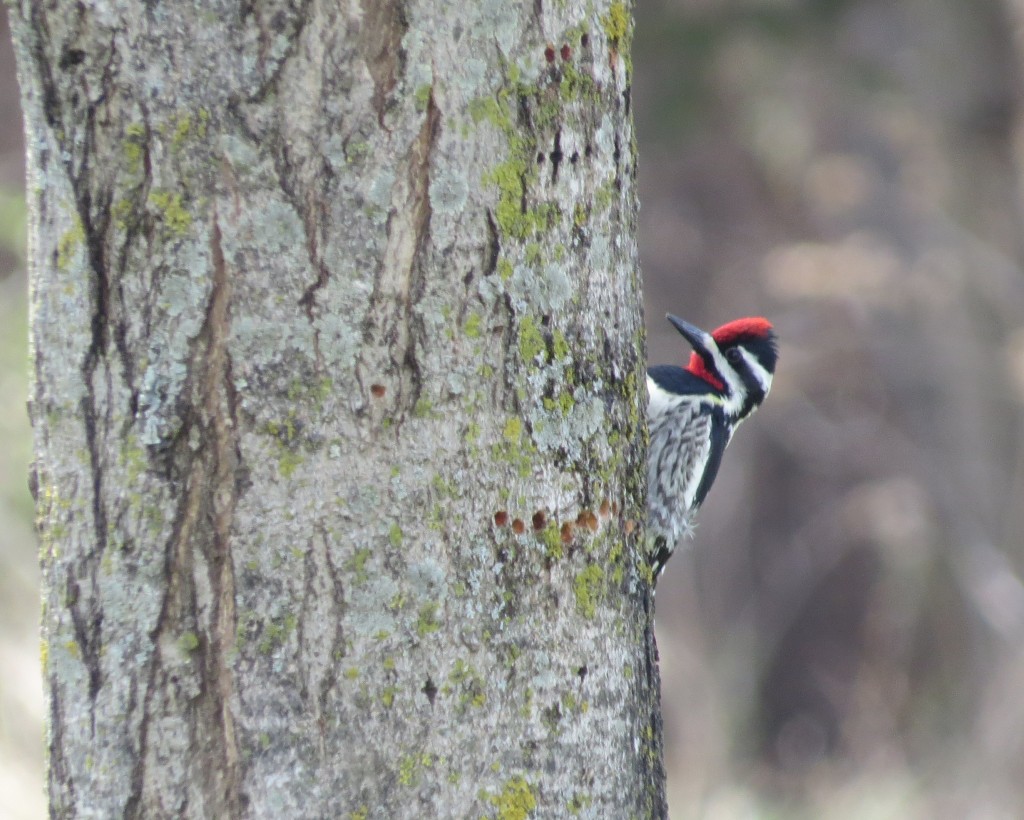
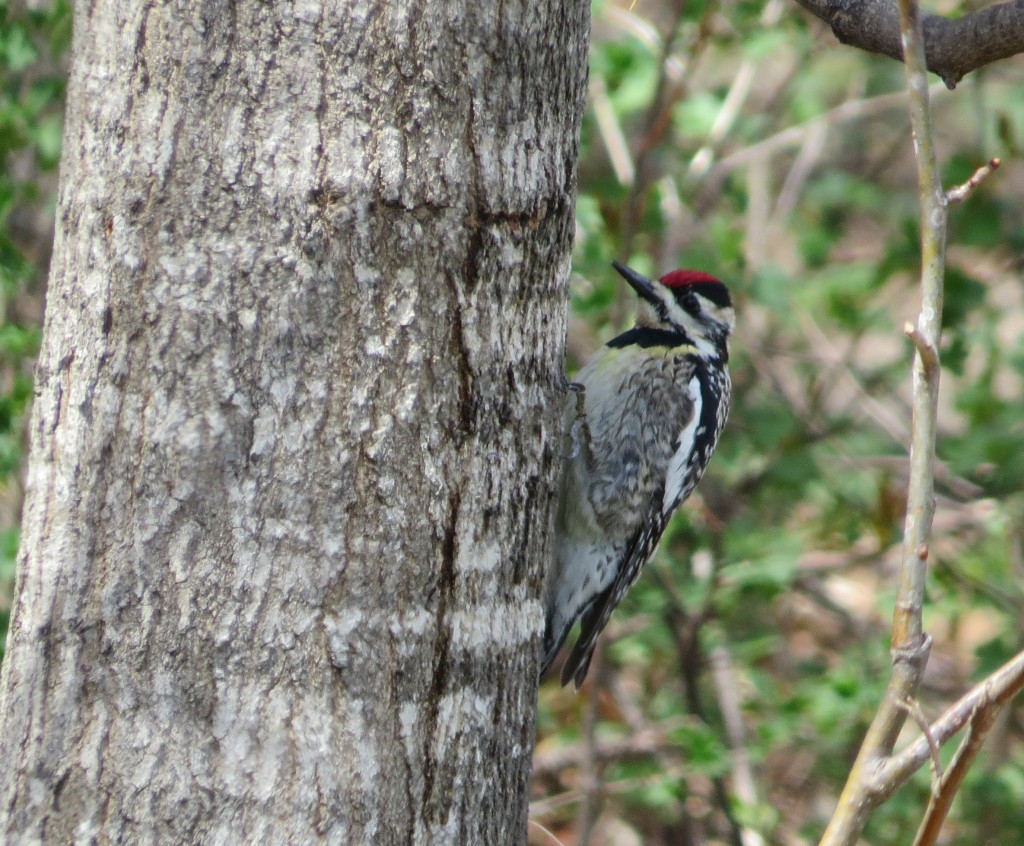 It was pretty neat to see him working so hard at his name-sake – sucking sap.
It was pretty neat to see him working so hard at his name-sake – sucking sap.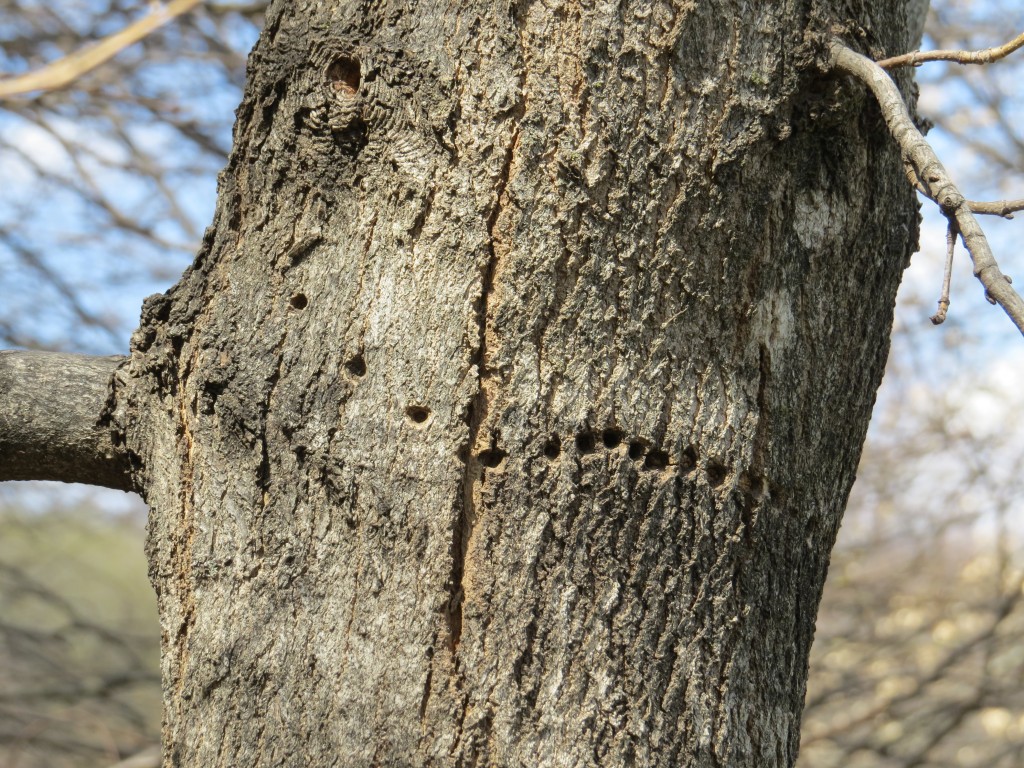 So, the blog post could very well have ended right here since we struck out on all three targets. Thankfully, though, it doesn’t.
So, the blog post could very well have ended right here since we struck out on all three targets. Thankfully, though, it doesn’t.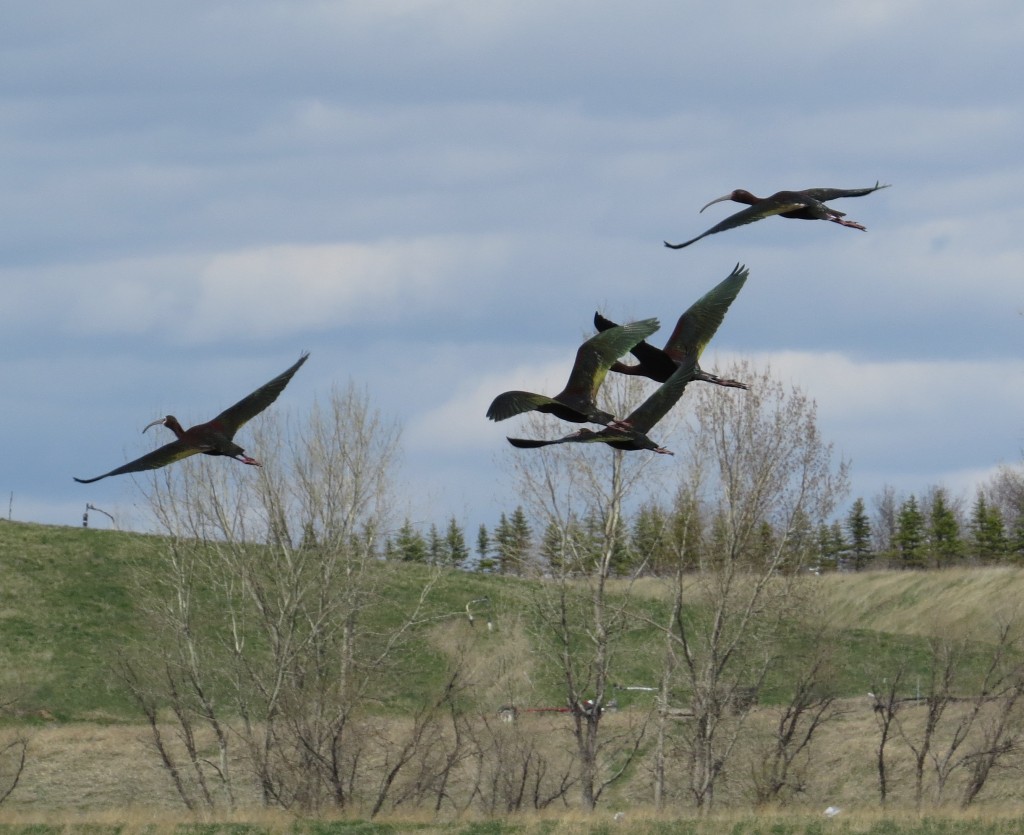
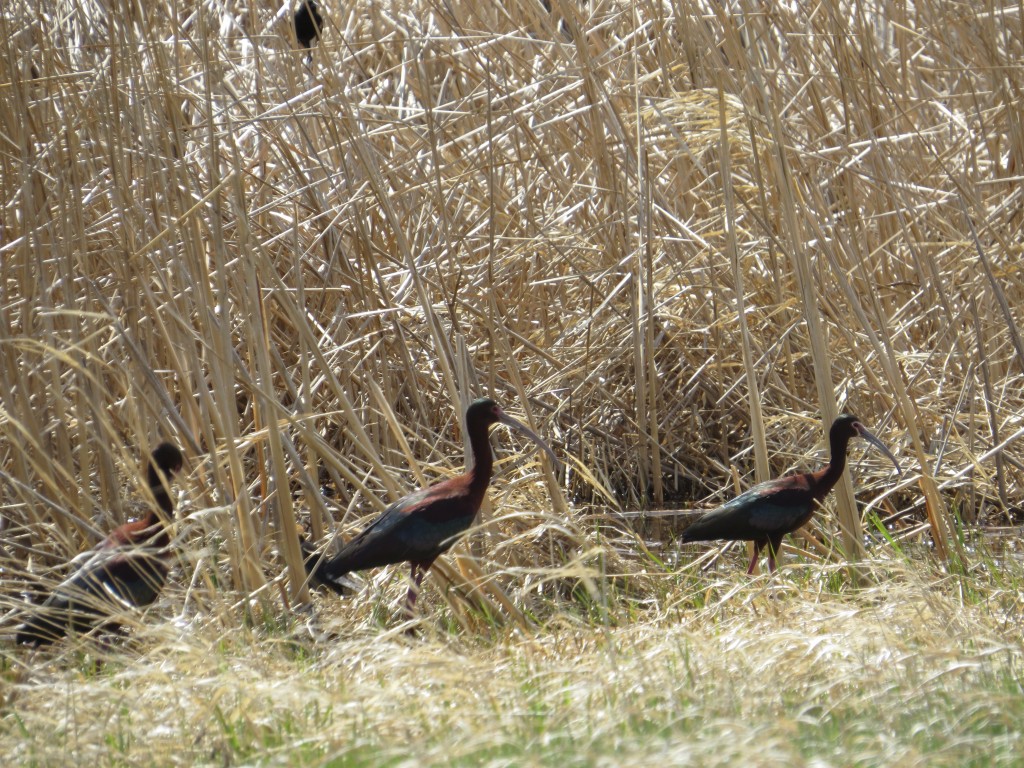
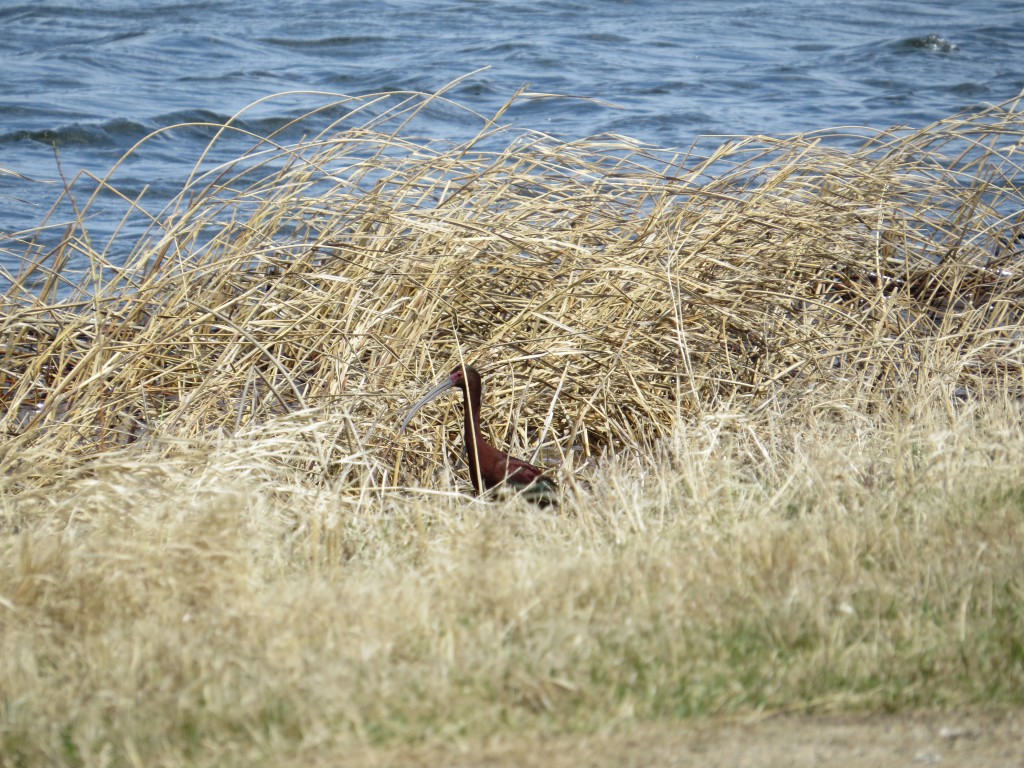 We spent a good deal of time driving up and creeping on these birds only to have them flush a short distance and always together as a group of five.
We spent a good deal of time driving up and creeping on these birds only to have them flush a short distance and always together as a group of five.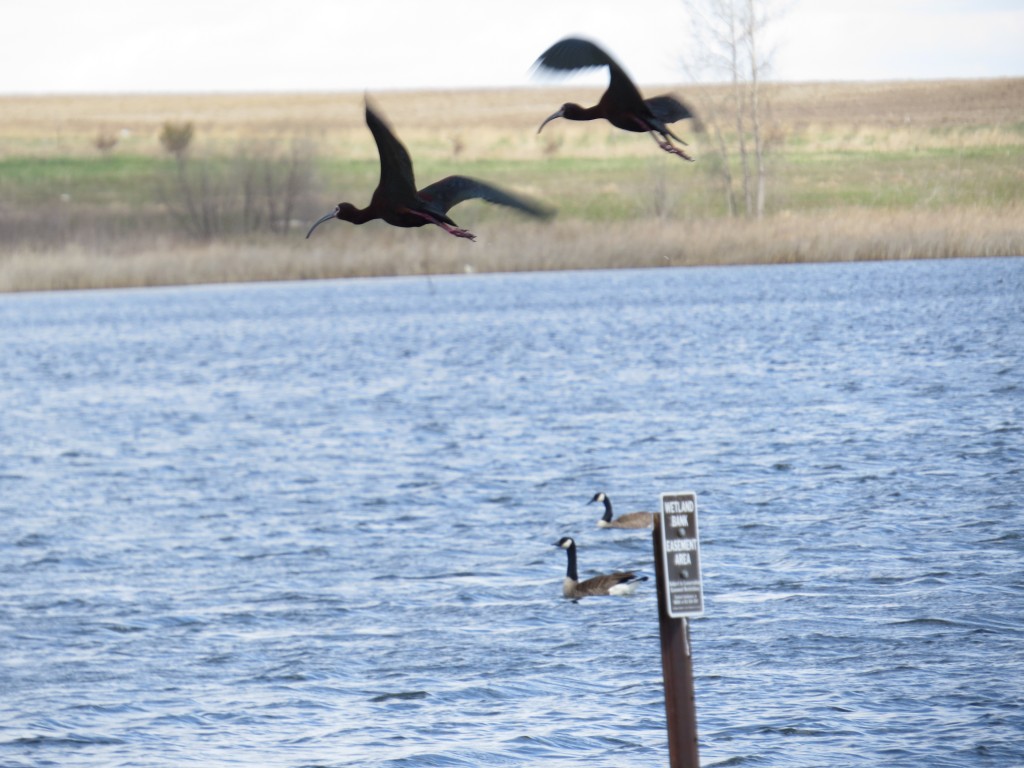
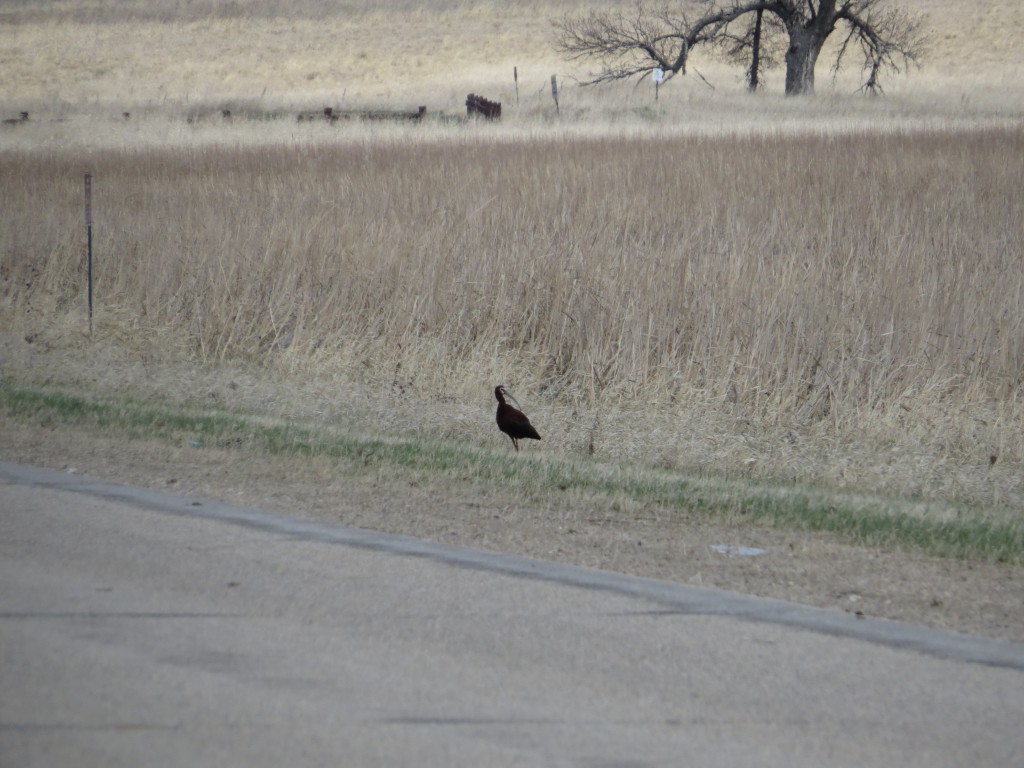 What a life bird this was. A small colony of them nest in South Dakota, so we do get them as scarce visitors every spring in Minnesota. I remember thinking last year what a strange bird this was and even more strange that it can be seen in our state.
What a life bird this was. A small colony of them nest in South Dakota, so we do get them as scarce visitors every spring in Minnesota. I remember thinking last year what a strange bird this was and even more strange that it can be seen in our state.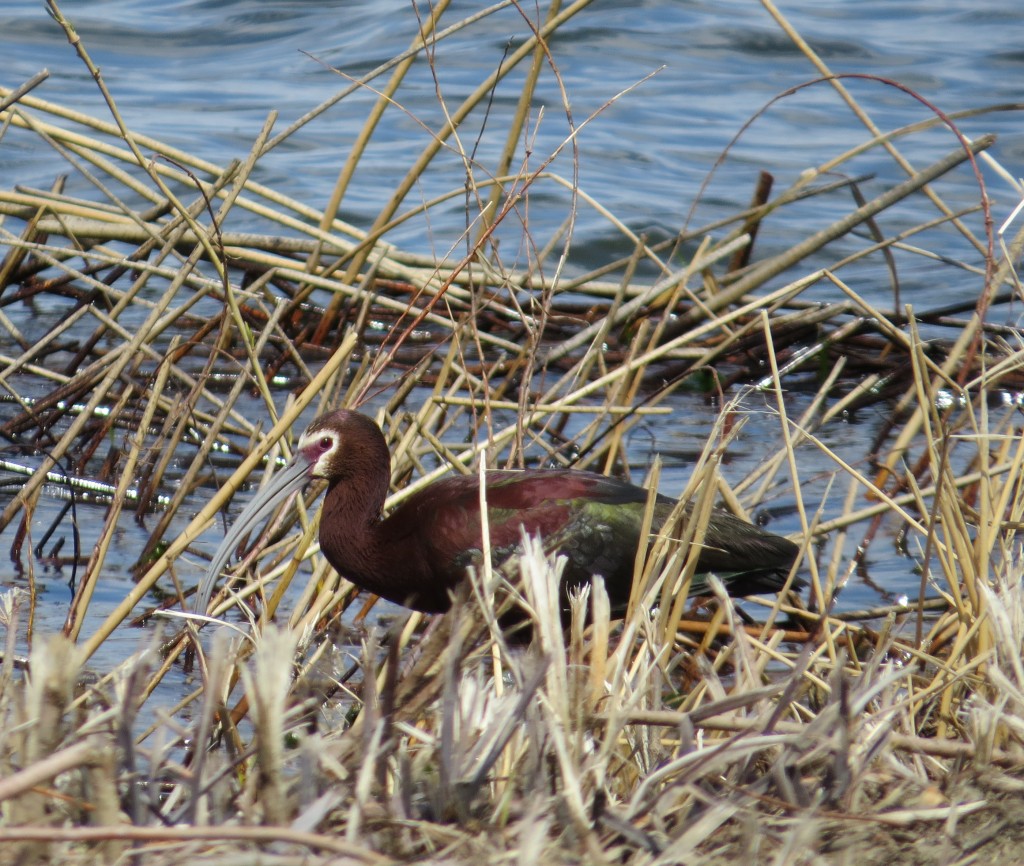
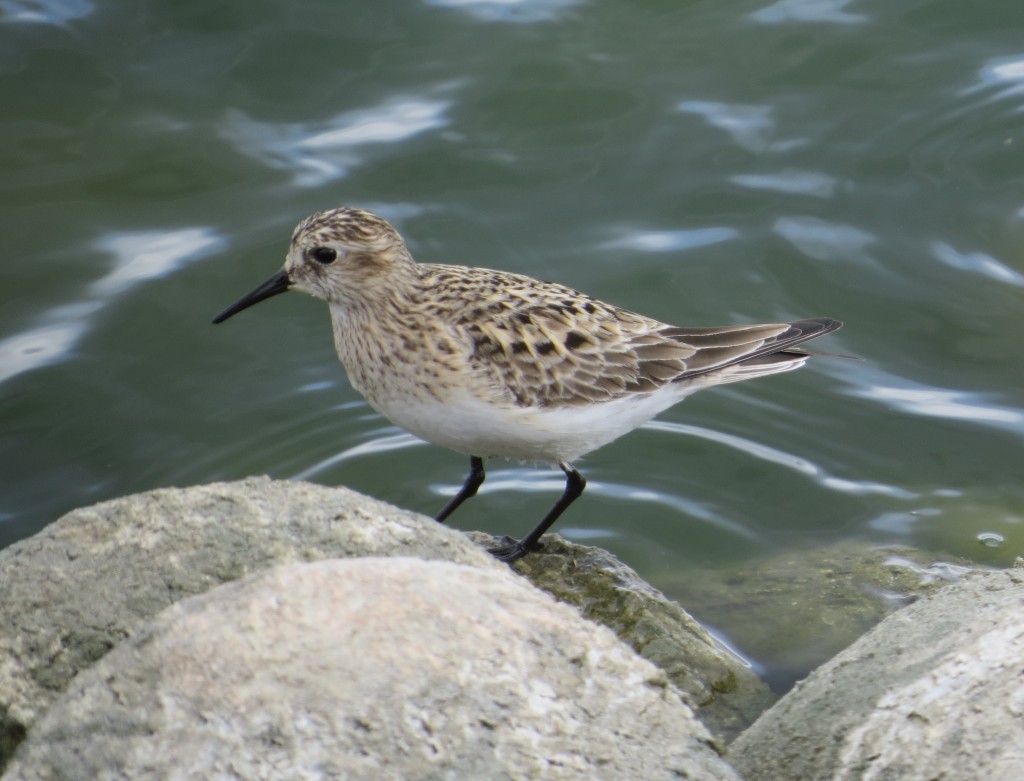
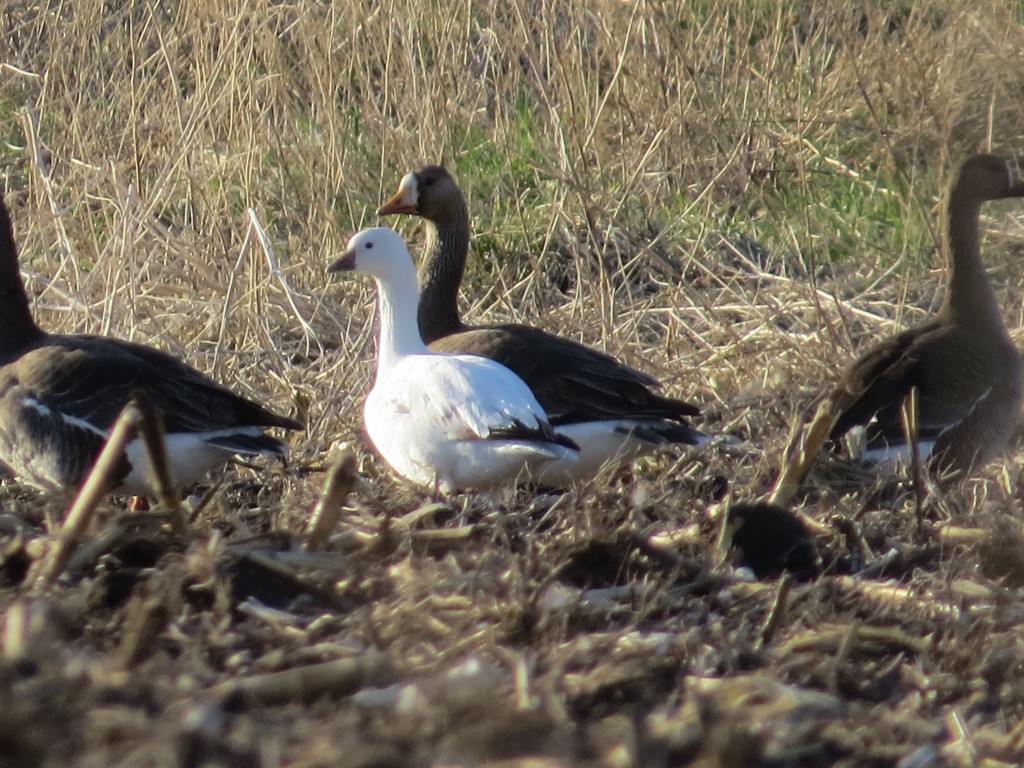
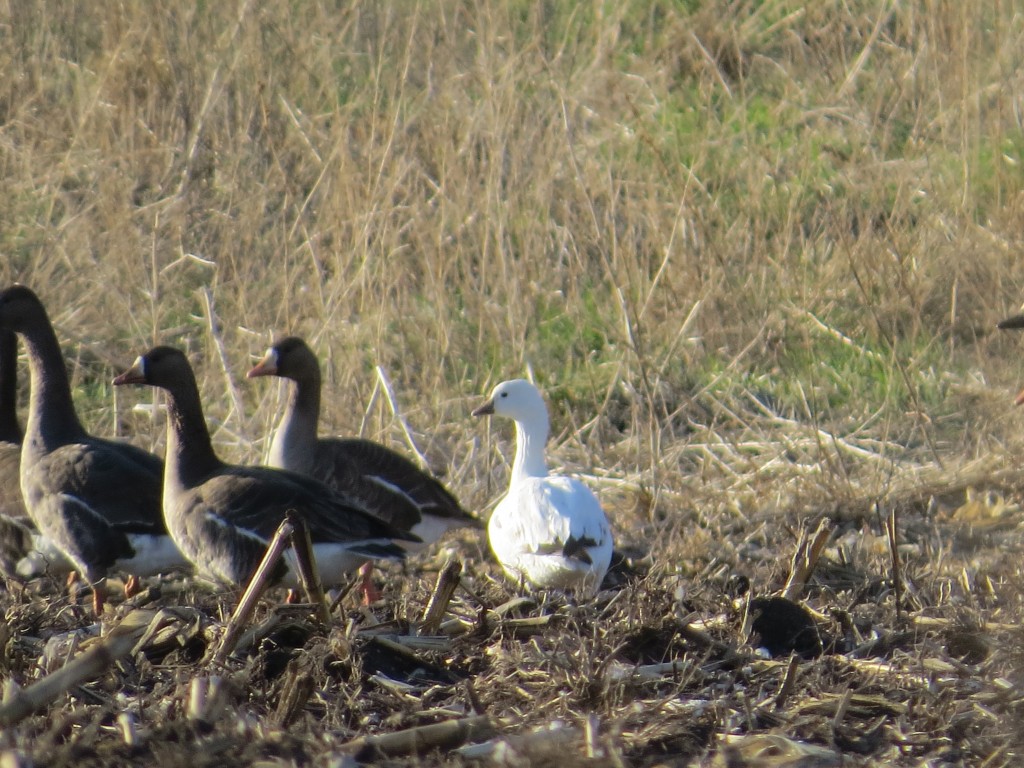 This is one of those life birds that is expected in our area. We just hadn’t turned one up yet. They are quite scarce in relation to the other goose species. I always thought this one would be easy to get since Randy, the wise Yoda birder of Kandiyohi County, had said all you have to do is stand in your yard during migration, find a flock of Snow Geese going over your house, and look for the goose that’s 25% smaller than the rest. Seemed easy enough. Except we don’t get nearly the fly-over flocks that Randy does even though he’s just 5 miles to the west. And I’ve learned that Randy downplays how rare or scarce a bird is. I mean, he’s had a Lazuli Bunting and Yellow-crowned Night Heron in his yard, so why would a Ross’s Goose be so hard to him? I started to get clued in when I’d see people report Ross’s Geese on the listserv and get all excited about them on Facebook.
This is one of those life birds that is expected in our area. We just hadn’t turned one up yet. They are quite scarce in relation to the other goose species. I always thought this one would be easy to get since Randy, the wise Yoda birder of Kandiyohi County, had said all you have to do is stand in your yard during migration, find a flock of Snow Geese going over your house, and look for the goose that’s 25% smaller than the rest. Seemed easy enough. Except we don’t get nearly the fly-over flocks that Randy does even though he’s just 5 miles to the west. And I’ve learned that Randy downplays how rare or scarce a bird is. I mean, he’s had a Lazuli Bunting and Yellow-crowned Night Heron in his yard, so why would a Ross’s Goose be so hard to him? I started to get clued in when I’d see people report Ross’s Geese on the listserv and get all excited about them on Facebook.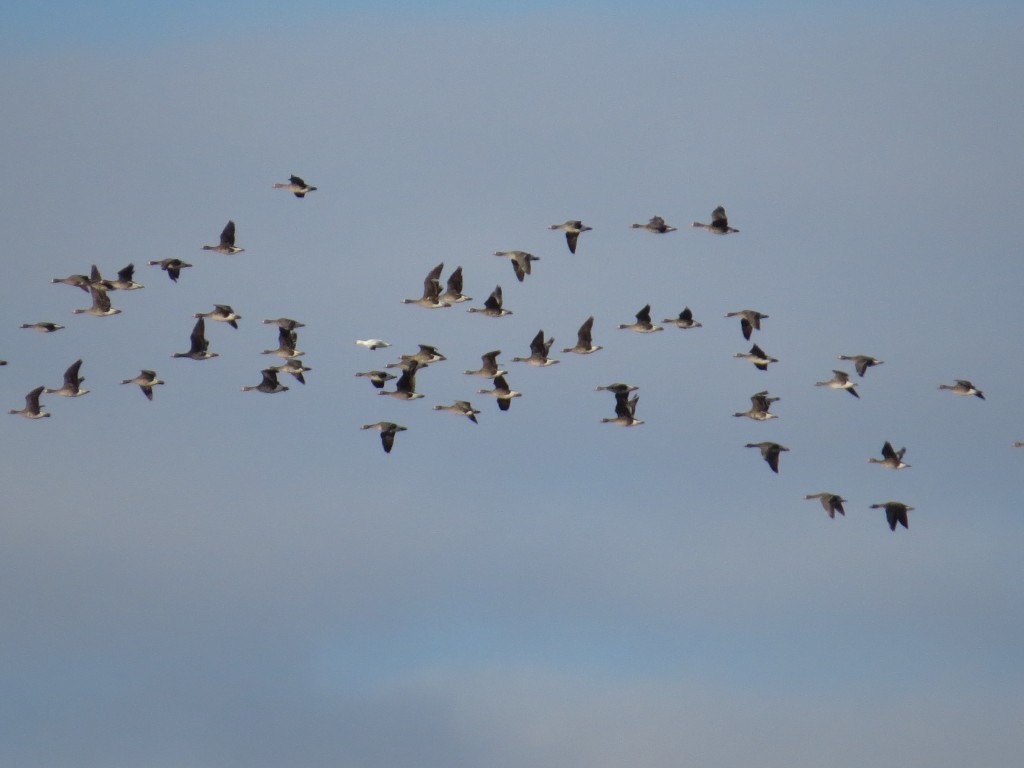
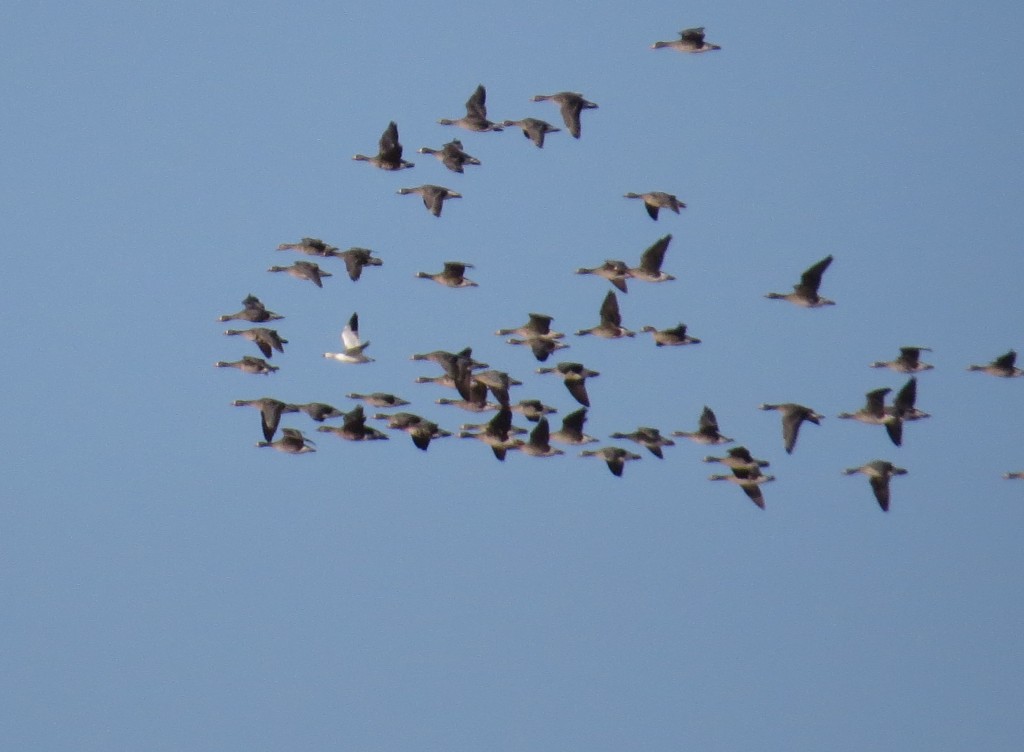
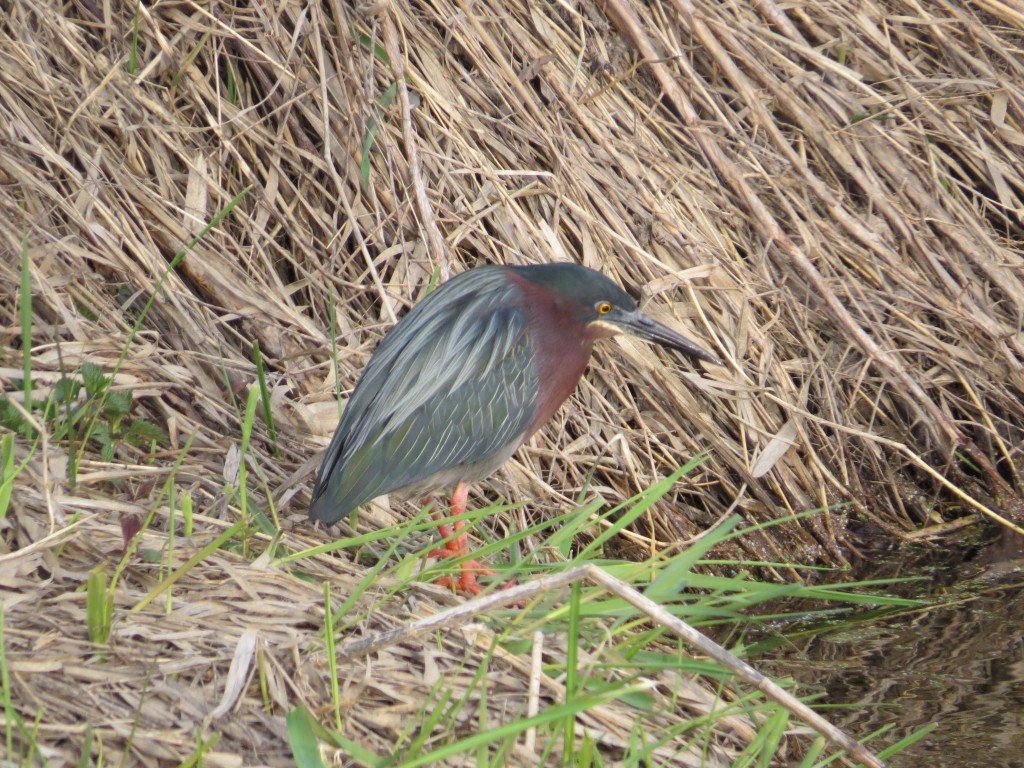
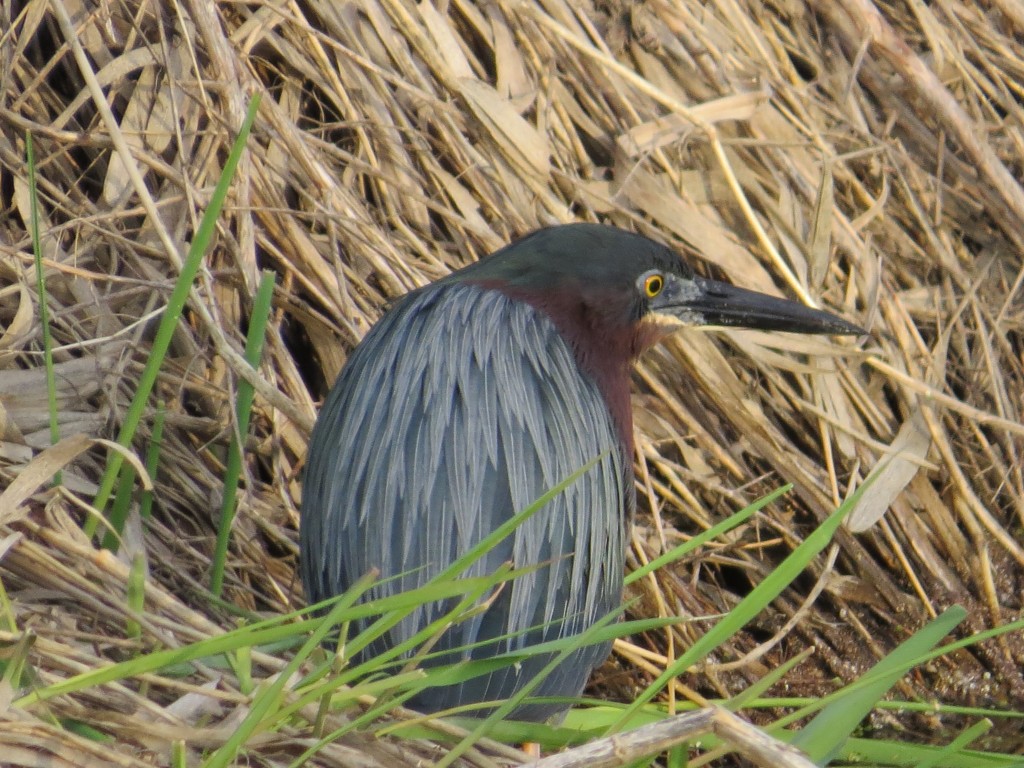 Nice eye, Evan. We ended up seeing two more of these guys after this. It’s always a fun bird to see.
Nice eye, Evan. We ended up seeing two more of these guys after this. It’s always a fun bird to see.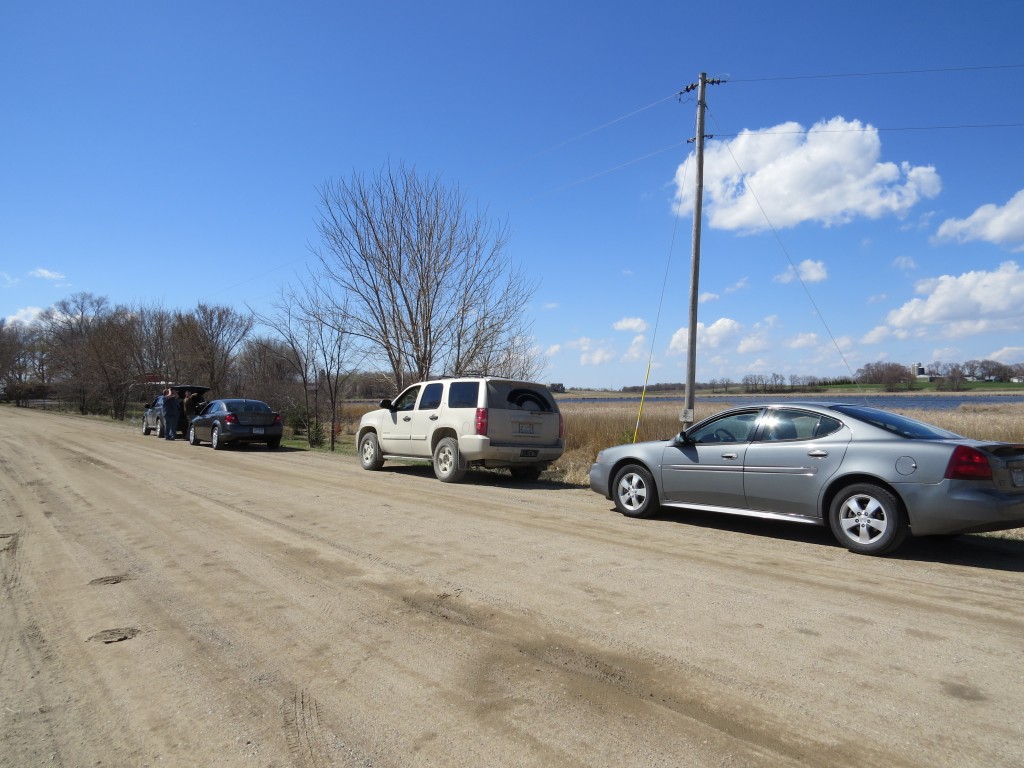
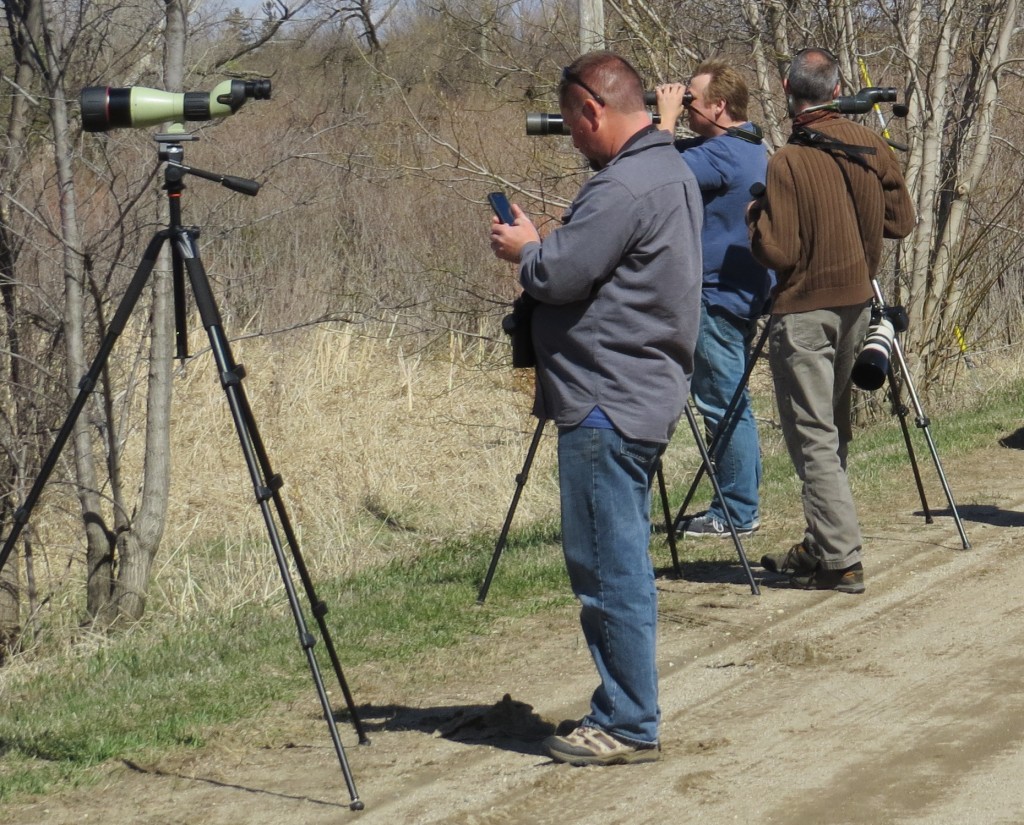
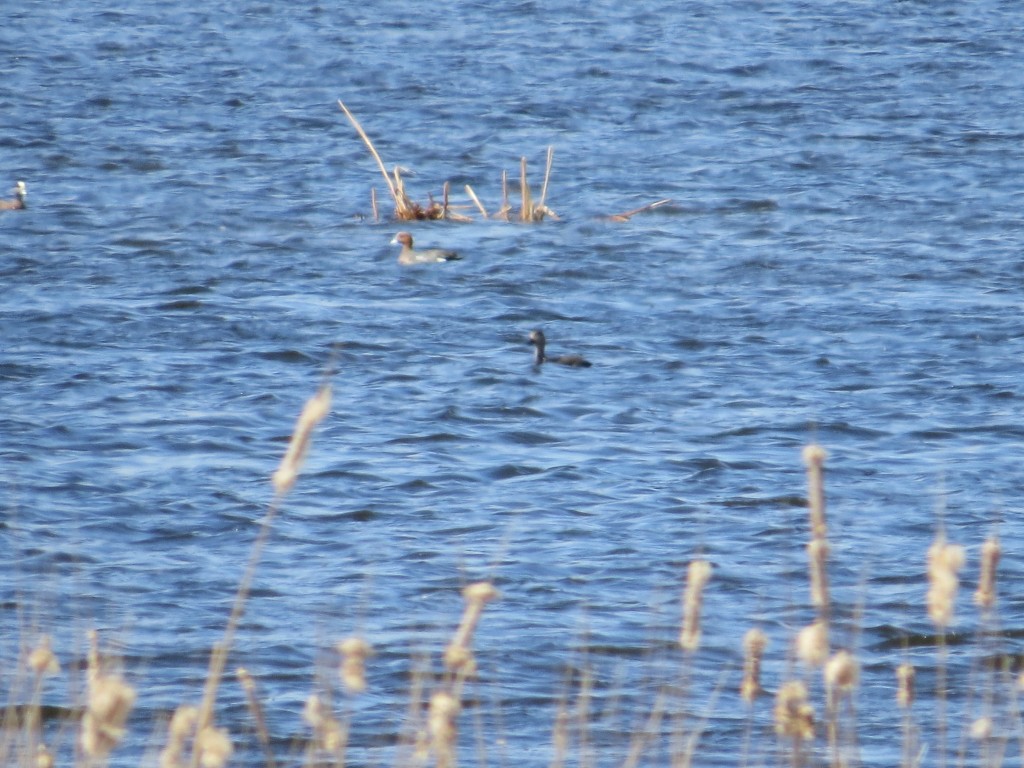
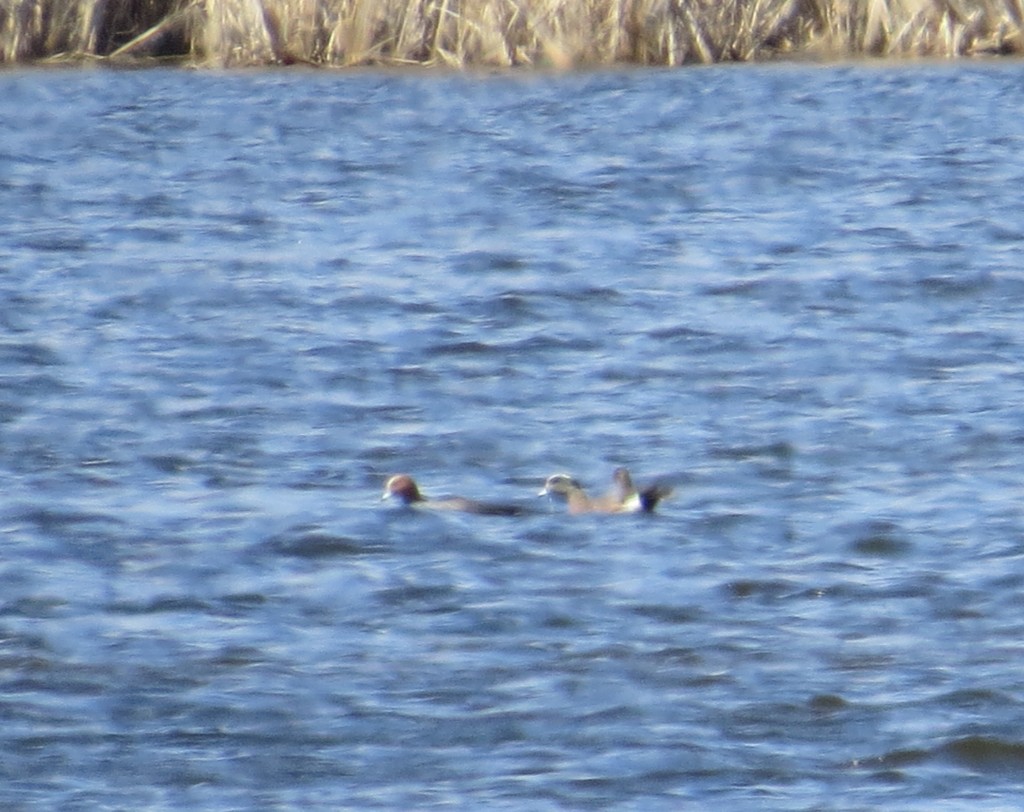
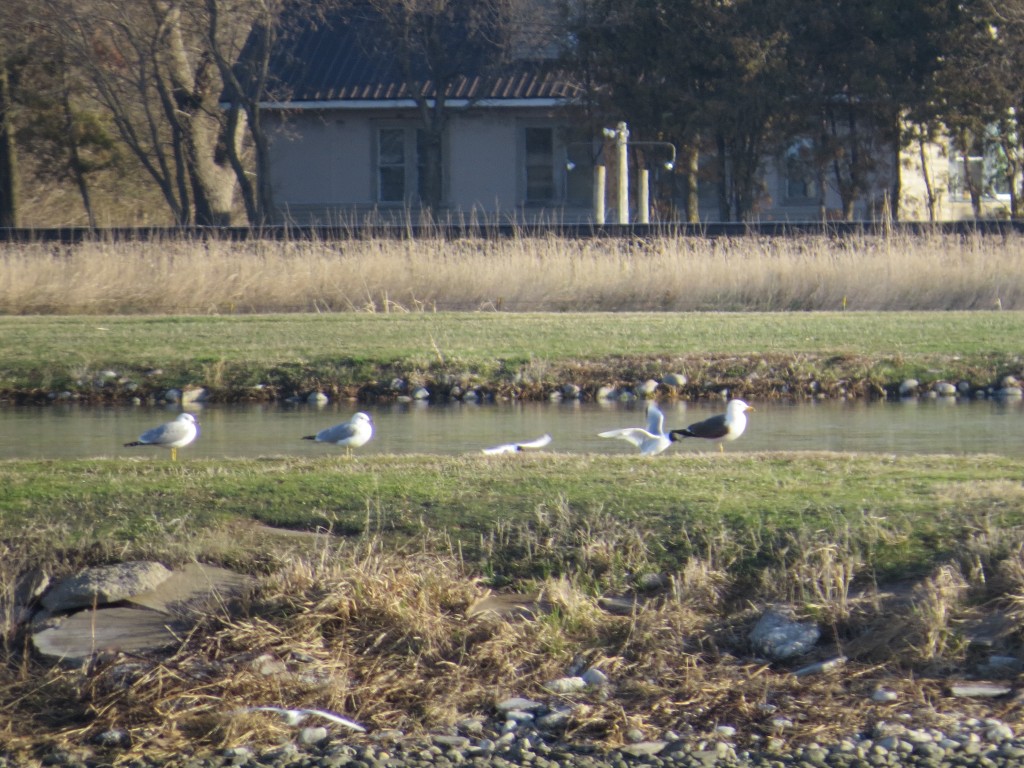
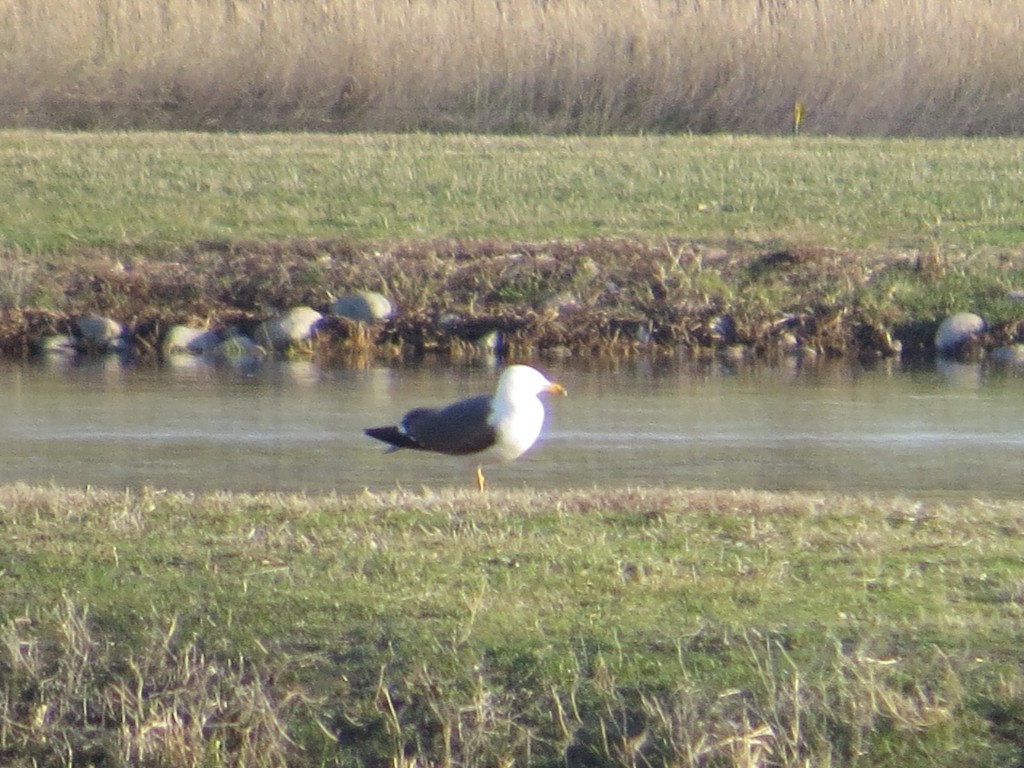

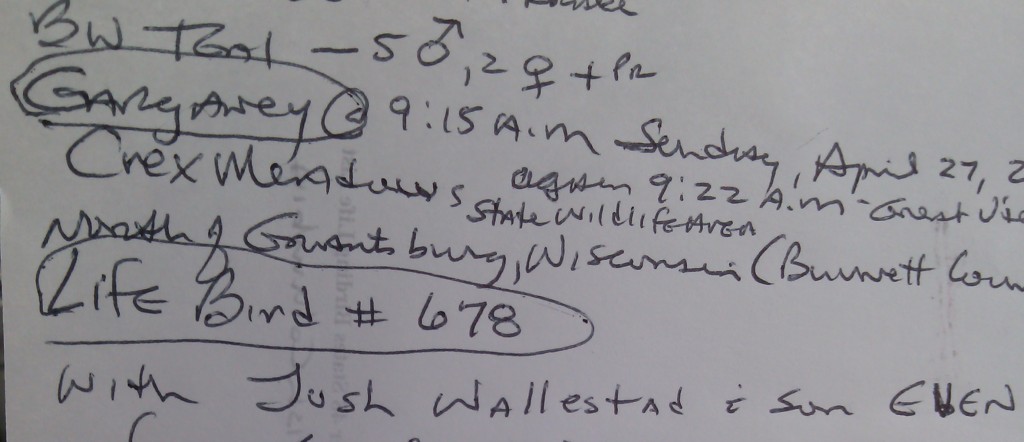
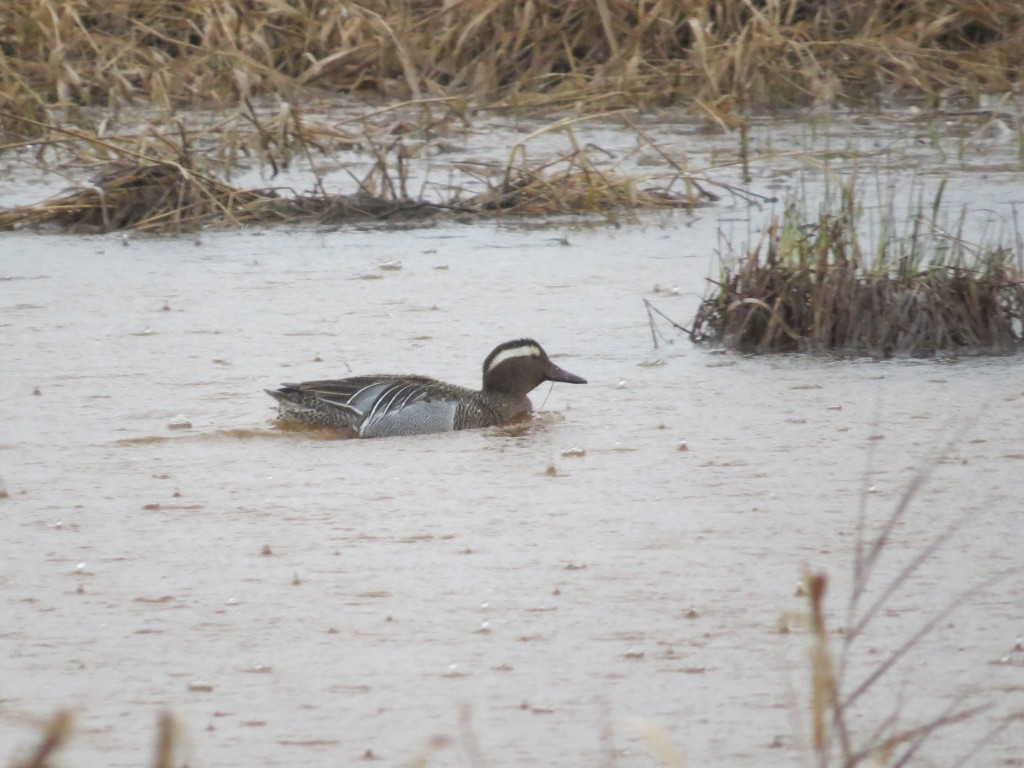
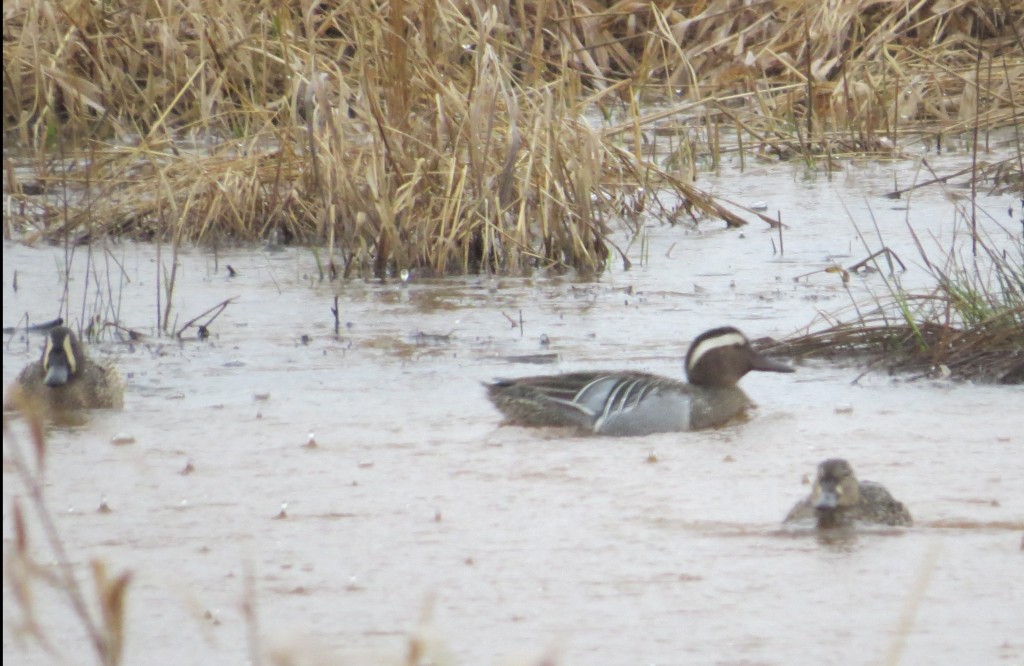
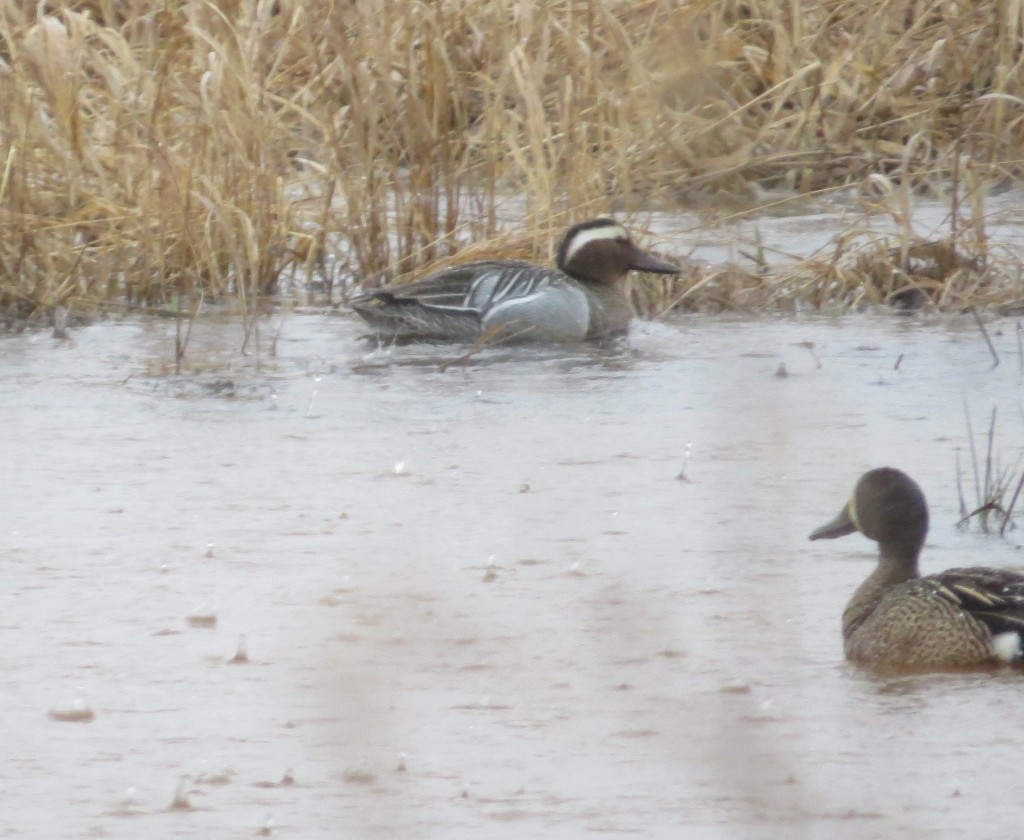
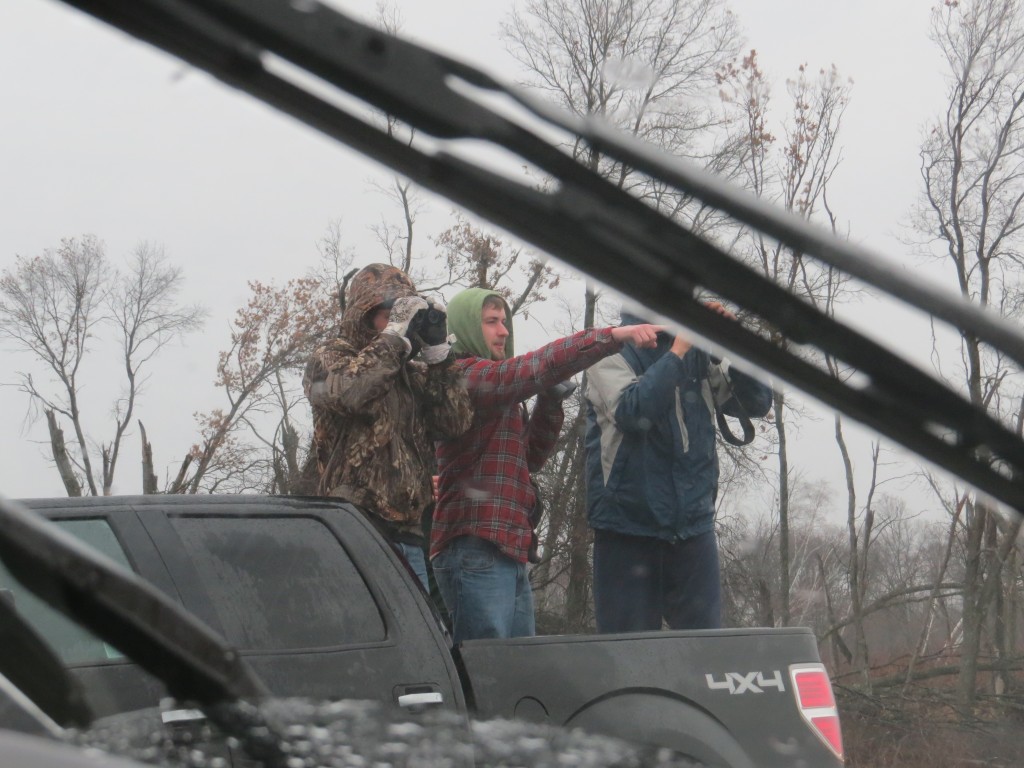
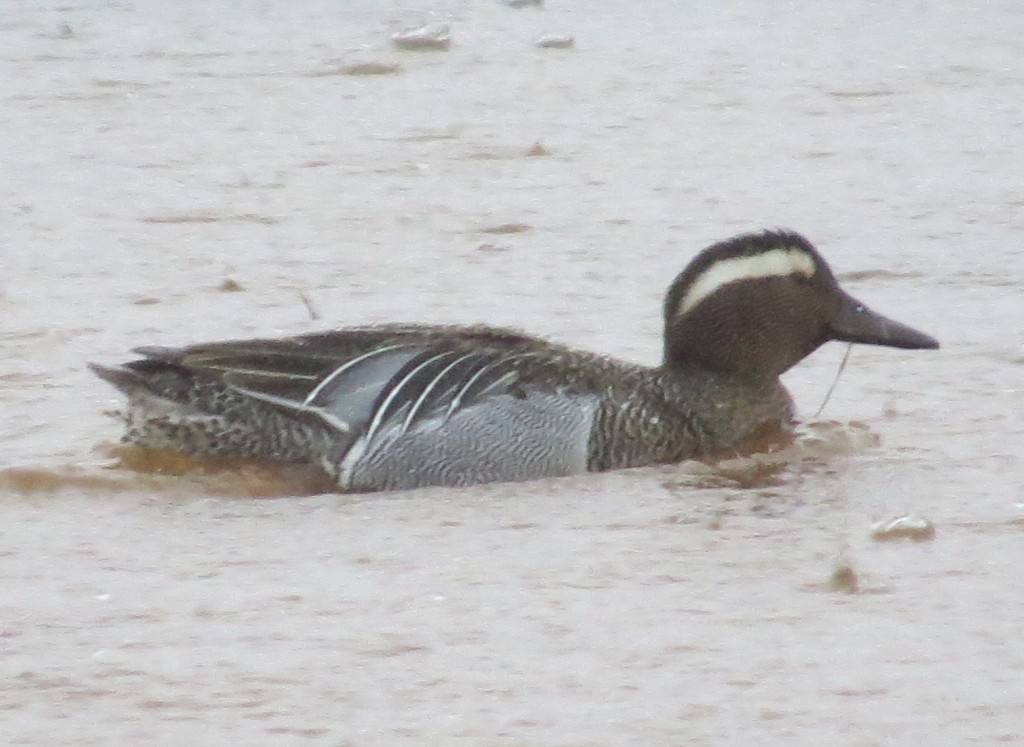
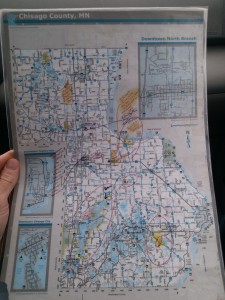
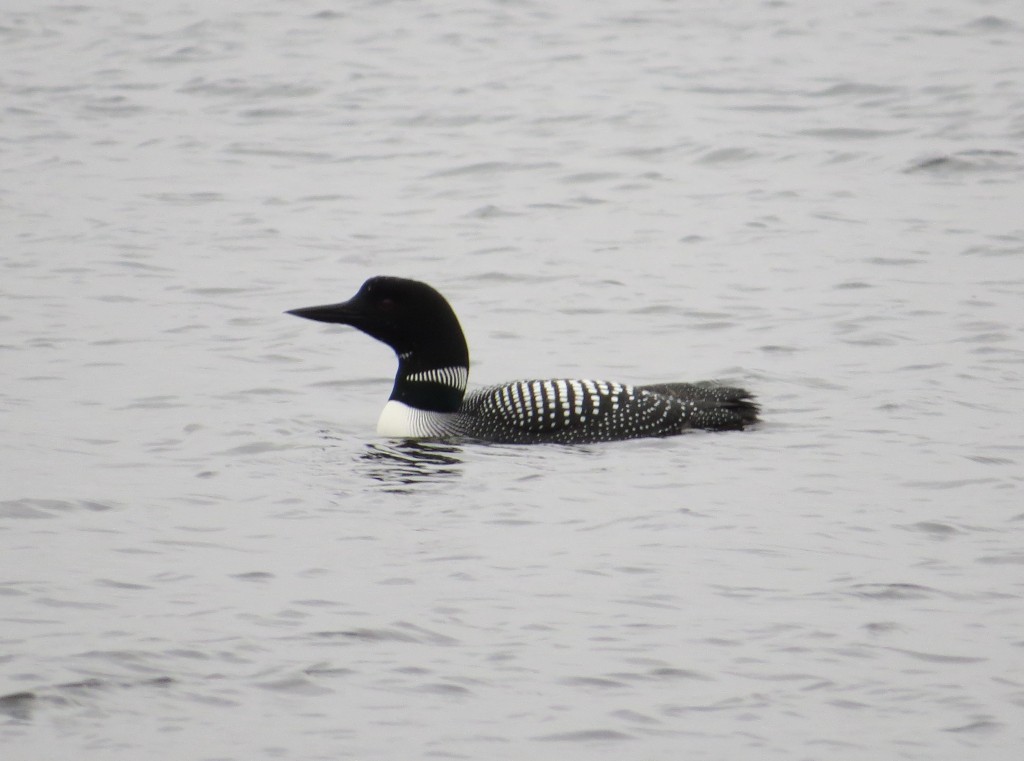
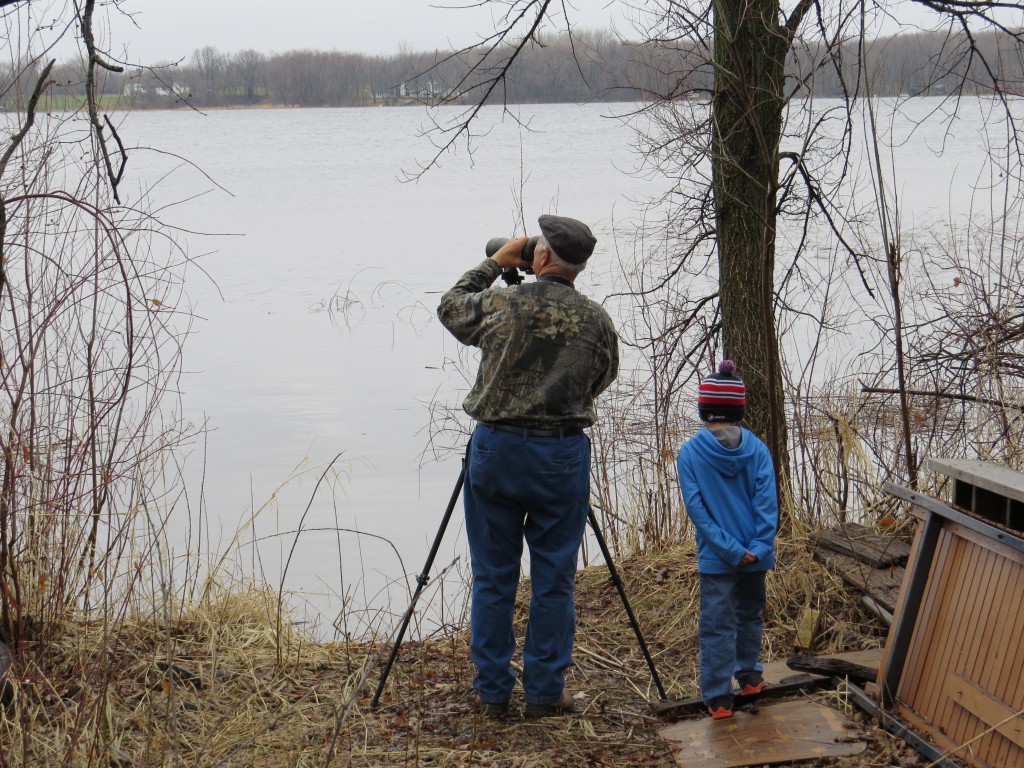 After several more stops, a lot of bird talk, and some very hazardous driving in the Cities in the downpour, we eventually made it home. I could only be so lucky to see the Garganey again. It was a bird and a trip of a lifetime. What a pleasure it was to get to know Ron a little better and go on a thrilling Garganey chase.
After several more stops, a lot of bird talk, and some very hazardous driving in the Cities in the downpour, we eventually made it home. I could only be so lucky to see the Garganey again. It was a bird and a trip of a lifetime. What a pleasure it was to get to know Ron a little better and go on a thrilling Garganey chase.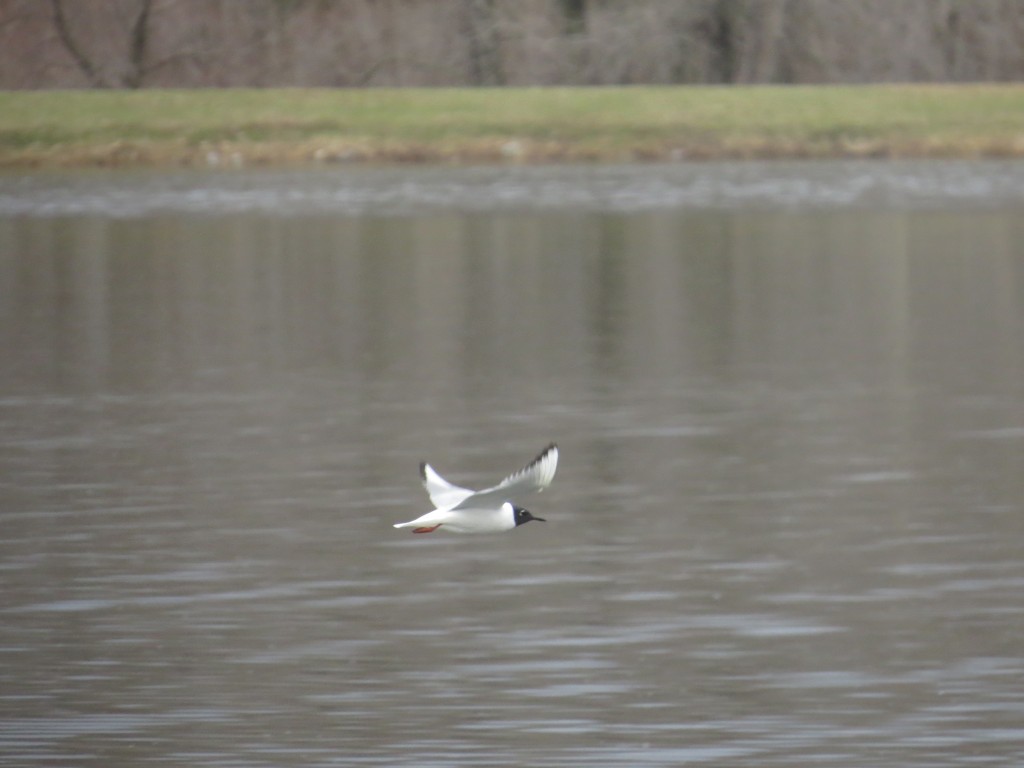
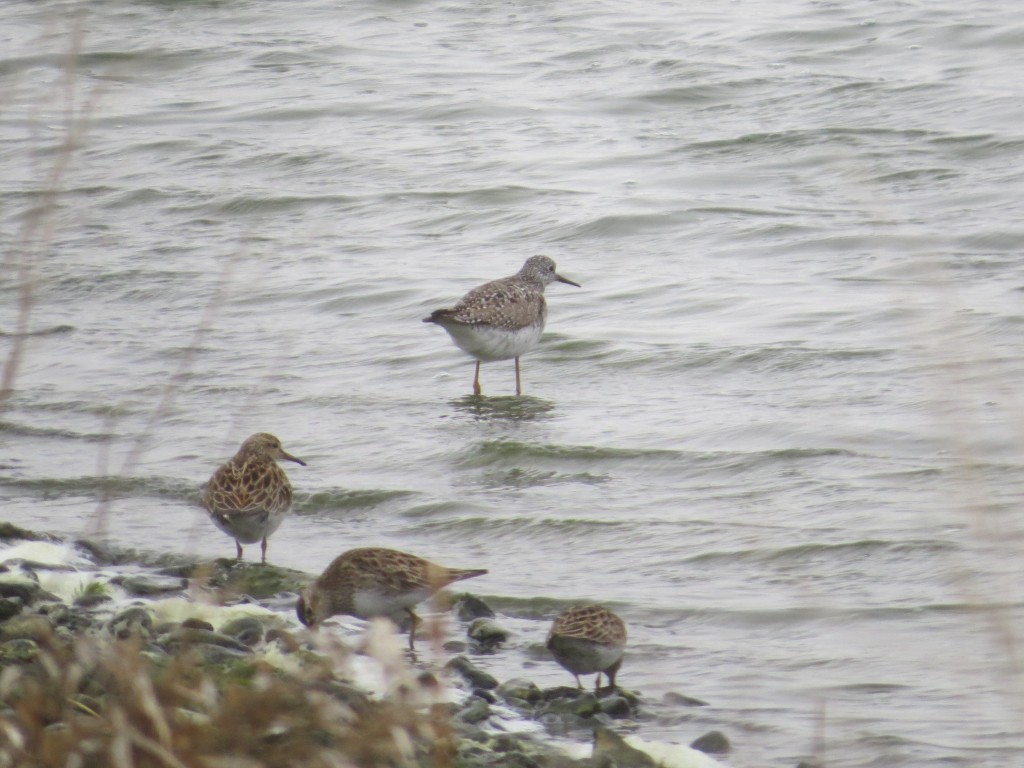
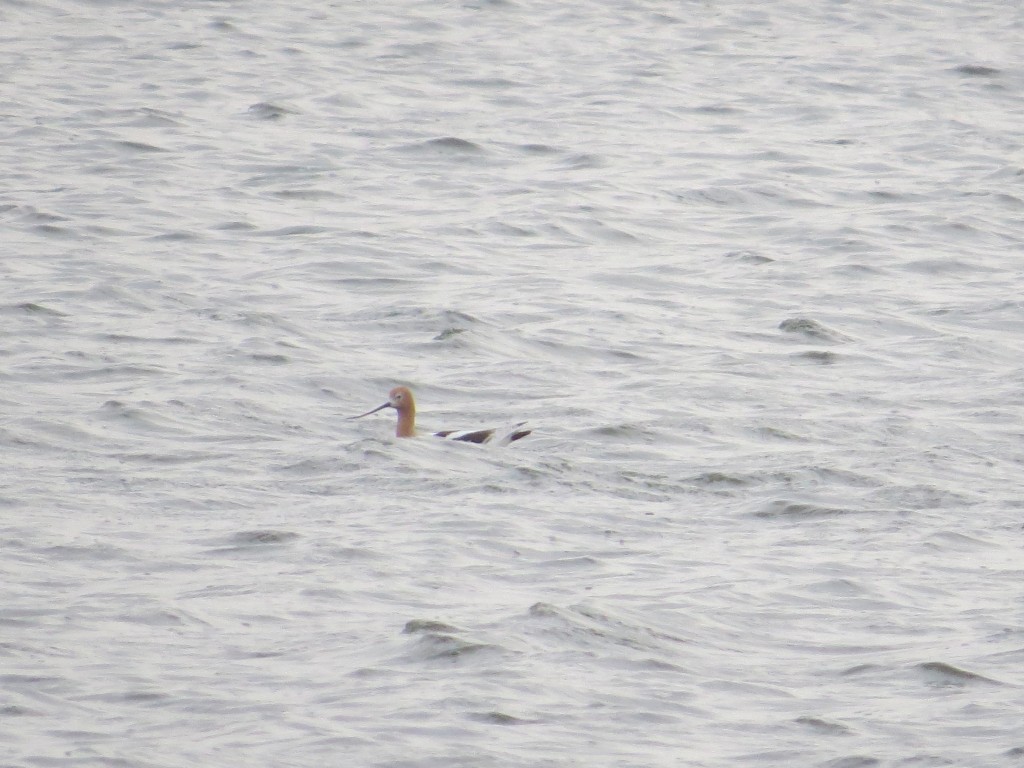
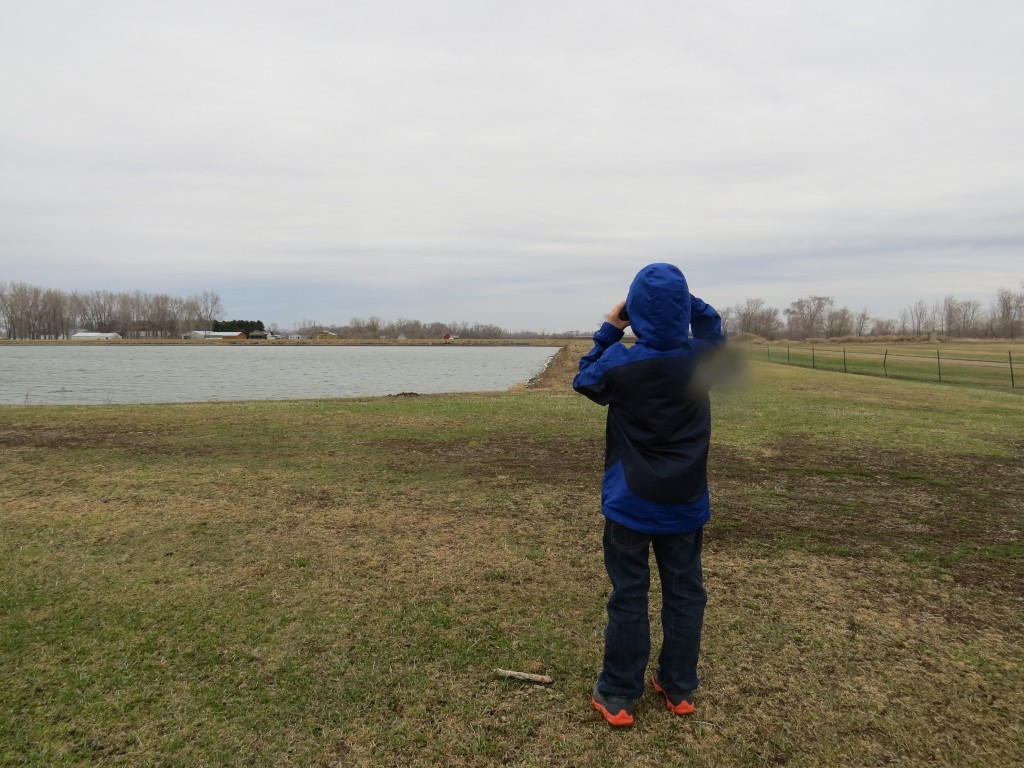
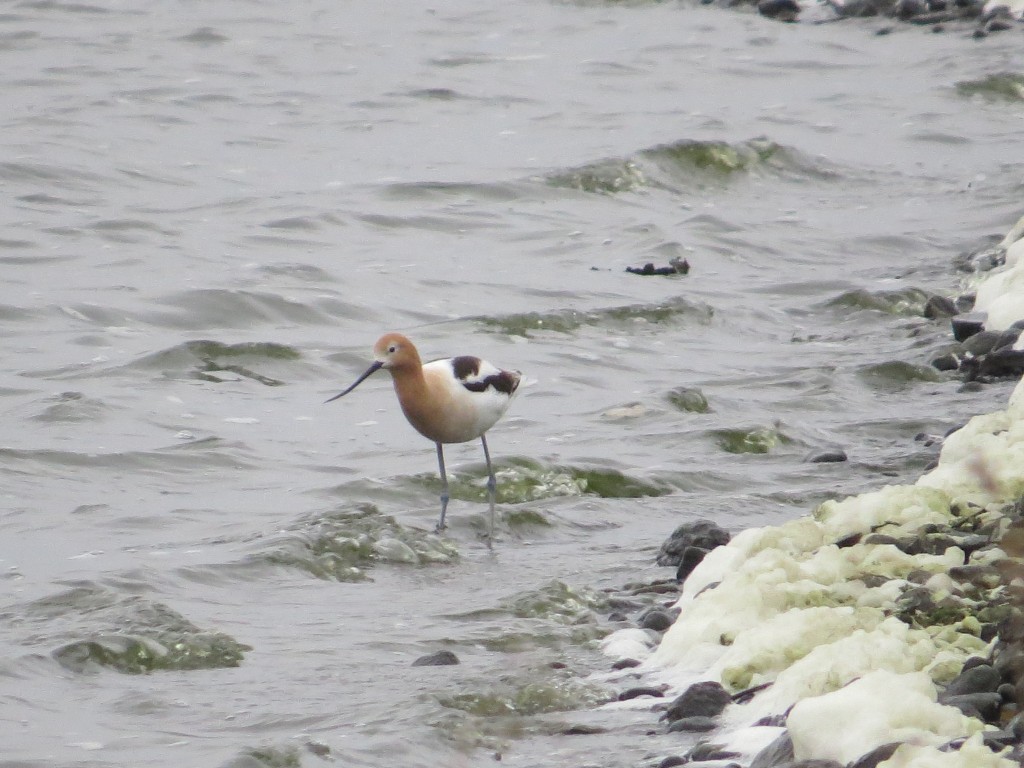 I had texted Steve and got him on the road right away. I knew that he’d probably want this one for his county list. While we waited for Steve, Evan and I kept trying to get good looks and photographs of this bird. I knew Evan was digging this new bird since he was with me the whole time in the chilly 42 degree weather of wind and spitting rain. A couple times we went back to the vehicle to warm up. When my fingers would thaw, I’d head back out again to try for better photos. I figured Evan had his fun and would just stay in the car, but when I was out doing my sneaking, I’d look back and see that he had left the comfort of the car for just one more look.
I had texted Steve and got him on the road right away. I knew that he’d probably want this one for his county list. While we waited for Steve, Evan and I kept trying to get good looks and photographs of this bird. I knew Evan was digging this new bird since he was with me the whole time in the chilly 42 degree weather of wind and spitting rain. A couple times we went back to the vehicle to warm up. When my fingers would thaw, I’d head back out again to try for better photos. I figured Evan had his fun and would just stay in the car, but when I was out doing my sneaking, I’d look back and see that he had left the comfort of the car for just one more look.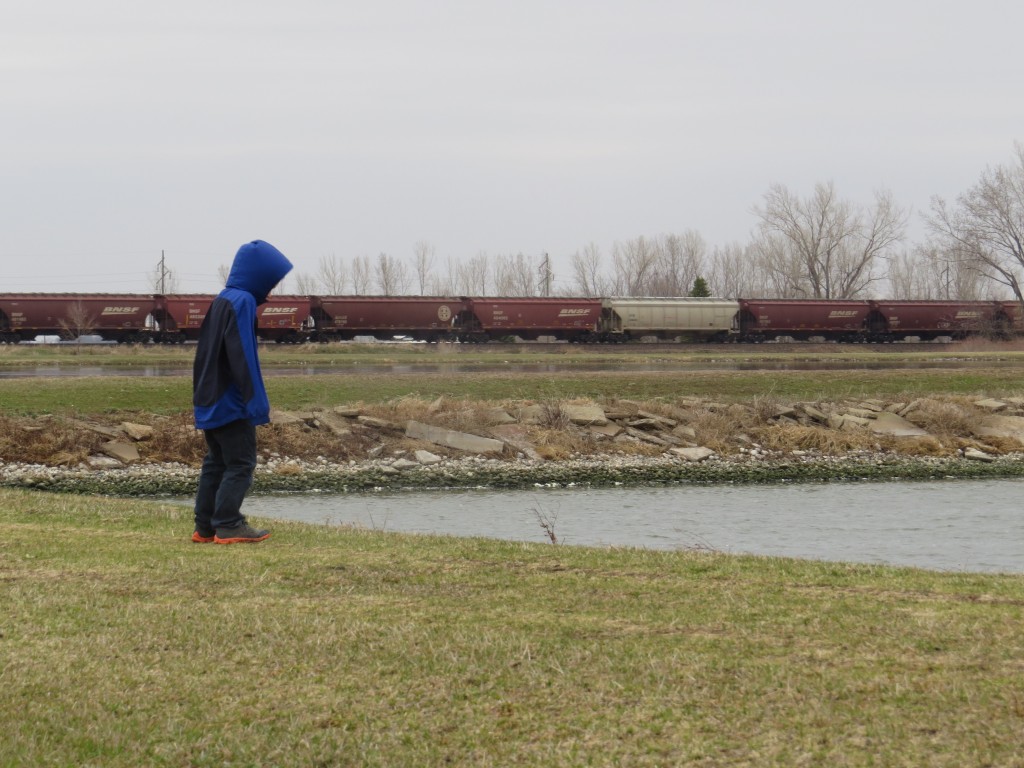 Who could blame him with a bird like this?
Who could blame him with a bird like this?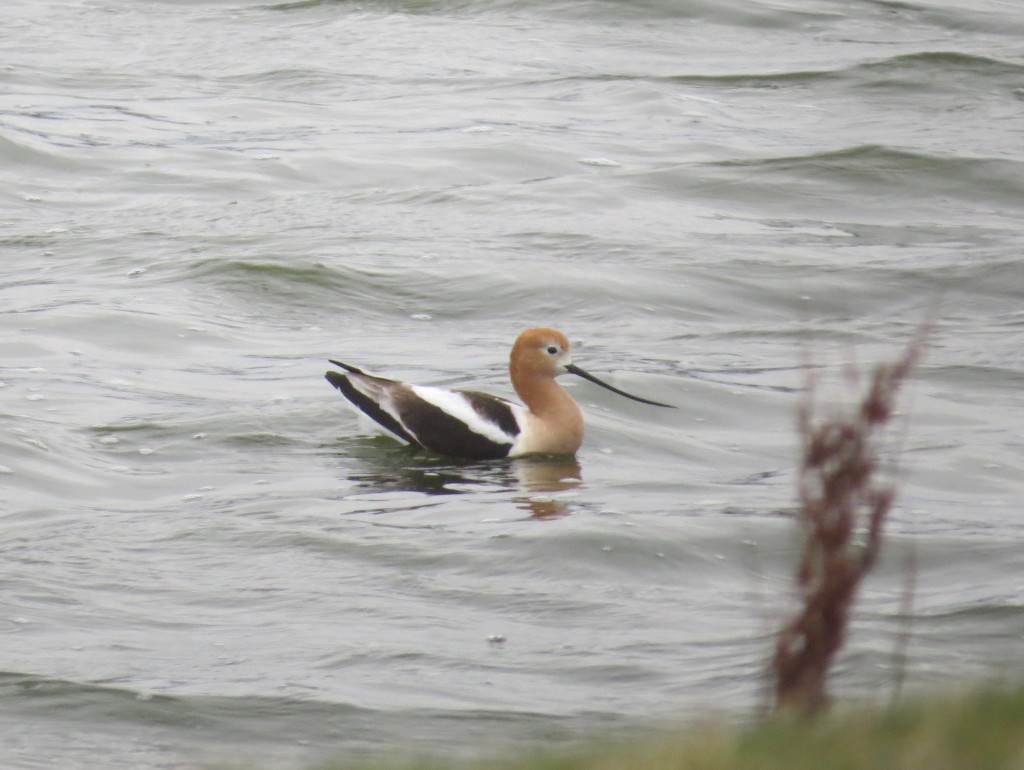
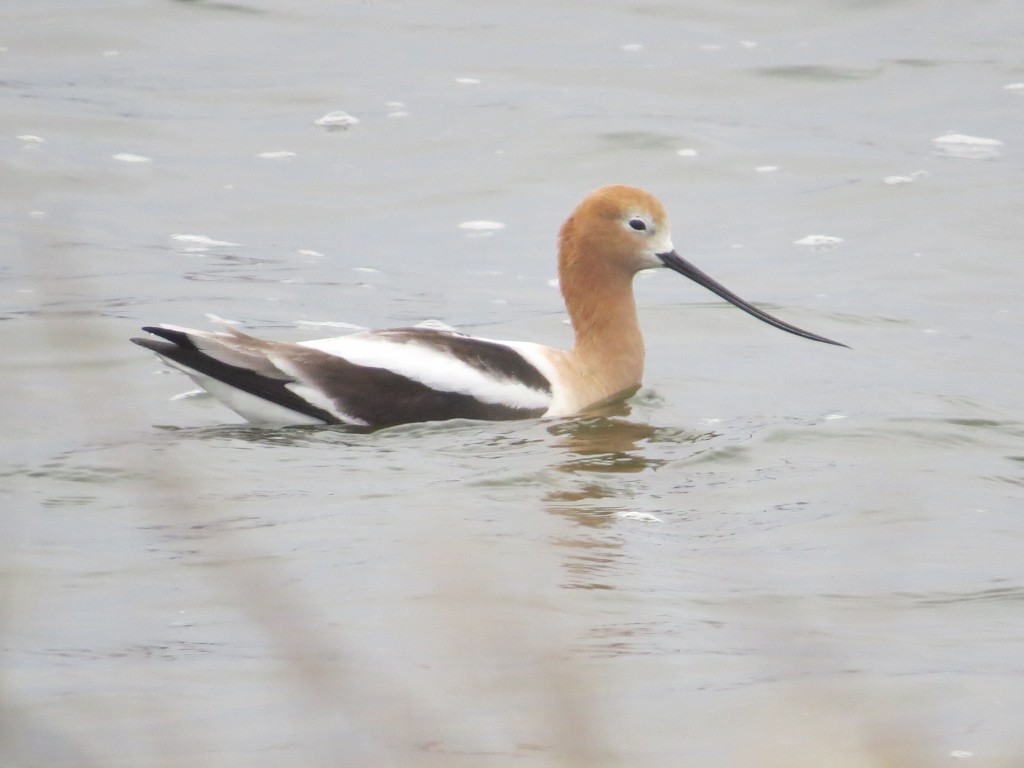 Several times I would sneak over the dike to try to get good photos. The bird would spot me, vocalize an alarm, and then fly out and land in the water about 20 feet from shore. It would then feed and work its way back to the shore.
Several times I would sneak over the dike to try to get good photos. The bird would spot me, vocalize an alarm, and then fly out and land in the water about 20 feet from shore. It would then feed and work its way back to the shore.